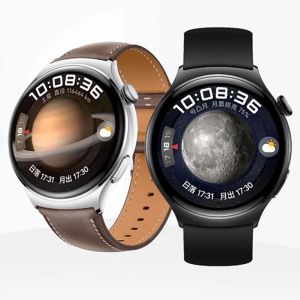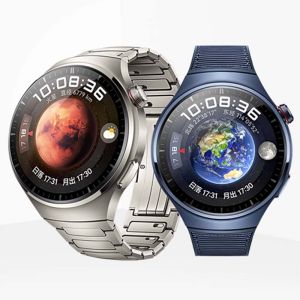When it comes to semi-in-ear TWS noise cancellation headphones, Huawei FreeBuds Digital Series can be considered a very successful one, and after many generations of continuous optimization, in order to provide semi-in-ear comfortable wearing at the same time, taking into account a good active noise cancellation experience. Recently, Huawei officially launched the latest generation of Huawei FreeBuds 5 at the "Spring Flagship New Product Launch", with a new teardrop-shaped design and upgraded semi-in-ear comfort noise cancellation 3.0 technology to further enhance the user experience. Huawei FreeBuds 5
Huawei FreeBuds 5 in sound quality performance, equipped with super magnetic surging unit, dual magnetic circuit architecture, low frequency sensitivity than the previous generation increased by 30%, low frequency dive can be up to 16Hz, and the new bass sound pressure Turbo technology to further enhance the low frequency effect; support ultra-wide frequency real-time listening optimization, to create a delicate as one sound quality; support L2HC and LDAC dual HD audio decoding, can Better restoration of rich sound details with Hi-Res wireless HD audio certification; also supports Audio Vivid spatial audio (fixed) to provide an immersive listening experience.
Semi-in-ear comfort noise cancellation 3.0 supports three-microphone hybrid noise cancellation, with the ear canal adaptive algorithm, according to the user's ear shape, headset wearing state, as well as through the recognition of external environmental noise, intelligent adjustment of noise cancellation mode, providing a better noise cancellation experience; support AI call noise cancellation, through the three-microphone hybrid noise cancellation fusion depth neural network algorithm, accurate pickup of human voice, weakening environmental noise, providing clear calls.
Huawei FreeBuds 5 is equipped with HarmonyOS 3 system, supporting multi-device connection and dual devices online at the same time, supporting audio streaming between multiple HarmonyOS devices; supporting audio sharing function, you can connect to the same Huawei phone or tablet with other 1 pair of Huawei headphones to listen to songs and catch up on dramas together; also supports intelligent gaming low latency mode, providing a synchronized sound and picture gaming experience It also supports smart game low latency mode to provide a synchronized sound and picture gaming experience. The battery life has been significantly improved compared to the previous generation, with a single battery life of 5 hours and a combined battery life of 30 hours; the best version also supports super fast charging, the headset can play music for 2 hours in 5 minutes of charging.
I love audio network has also previously disassembled Huawei FreeBuds 4E, FreeBuds 4, FreeBuds Pro 2, FreeBuds Pro true wireless headphones, HUAWEI WATCH Buds, HUAWEI WATCH GT Cyber smartwatch, HUAWEI WATCH GT3 smartwatch, Huawei Bracelet 7, and Huawei Sound Joy smart speaker, Huawei AI speaker 2e, Huawei's first AI intelligent voice speaker, HUAWEI Huawei Tag wireless tracker and other products, here's another look at the detailed disassembly report of this product ~
1, Huawei FreeBuds 5 true wireless noise cancellation headphones unboxing
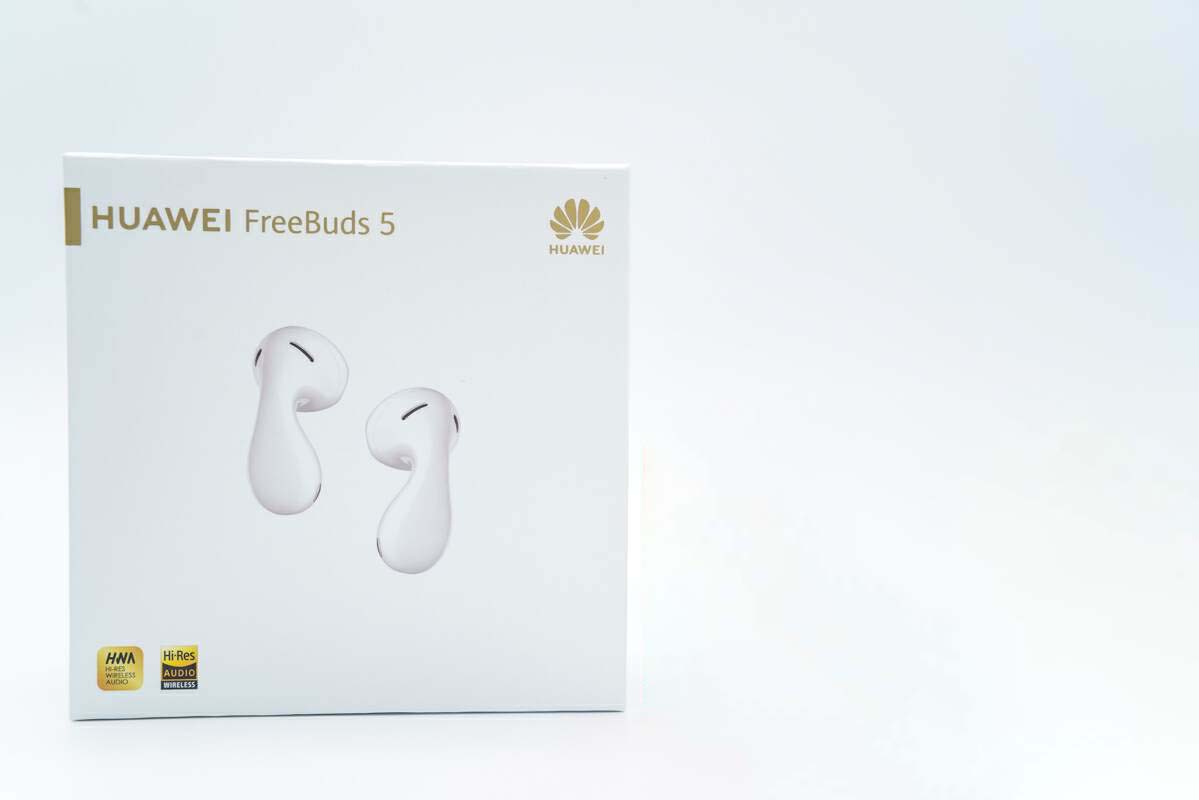
Huawei FreeBuds 5 true wireless noise cancellation headphones box continues the family style of simple design, the front shows the headset design, product name and brand LOGO, as well as HWA, Hi-Res double gold label.
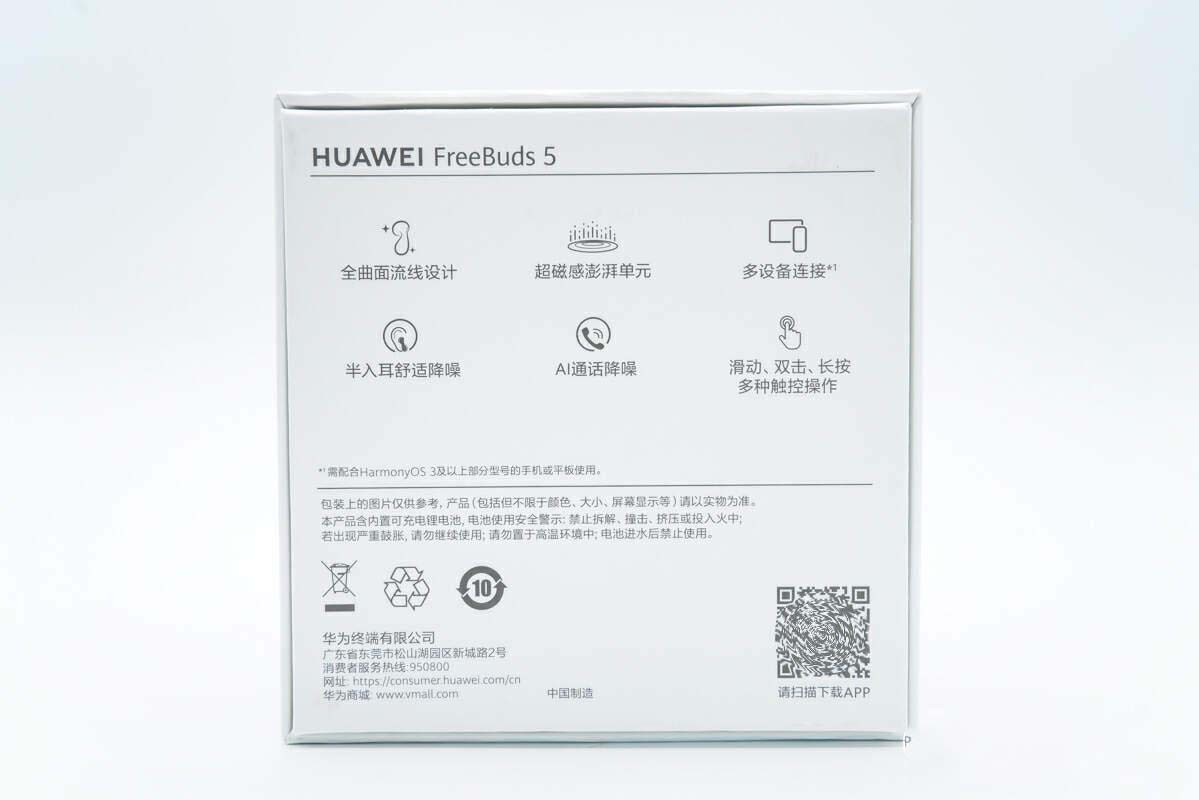
The back of the box introduces the functional features of the product, full curved streamline design, super magnetic surging unit, multi-device connectivity, semi-in-ear comfort noise cancellation, AI call noise cancellation and a variety of touch operation, Huawei Terminal Co.
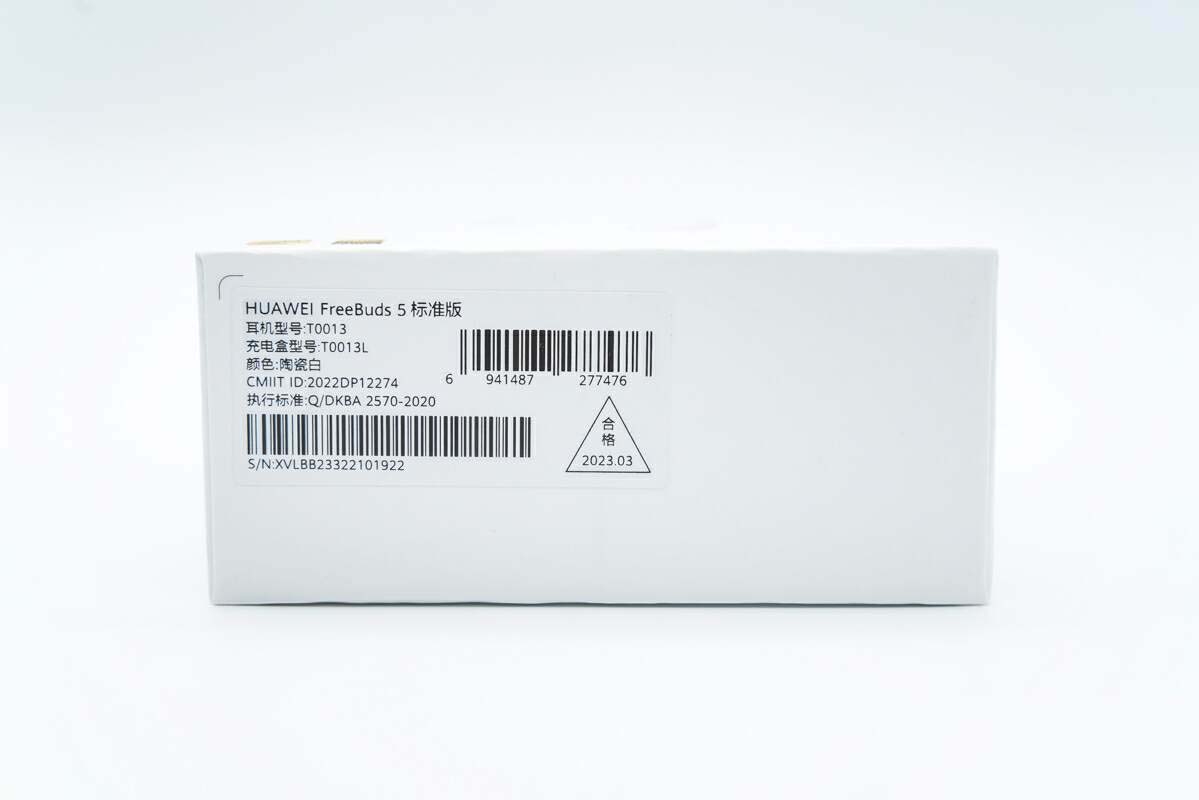
Information on the factory label at the bottom, HUAWEI FreeBuds 5 Standard Edition, headset model: T0013, charging case model: T0013L, color: ceramic white.
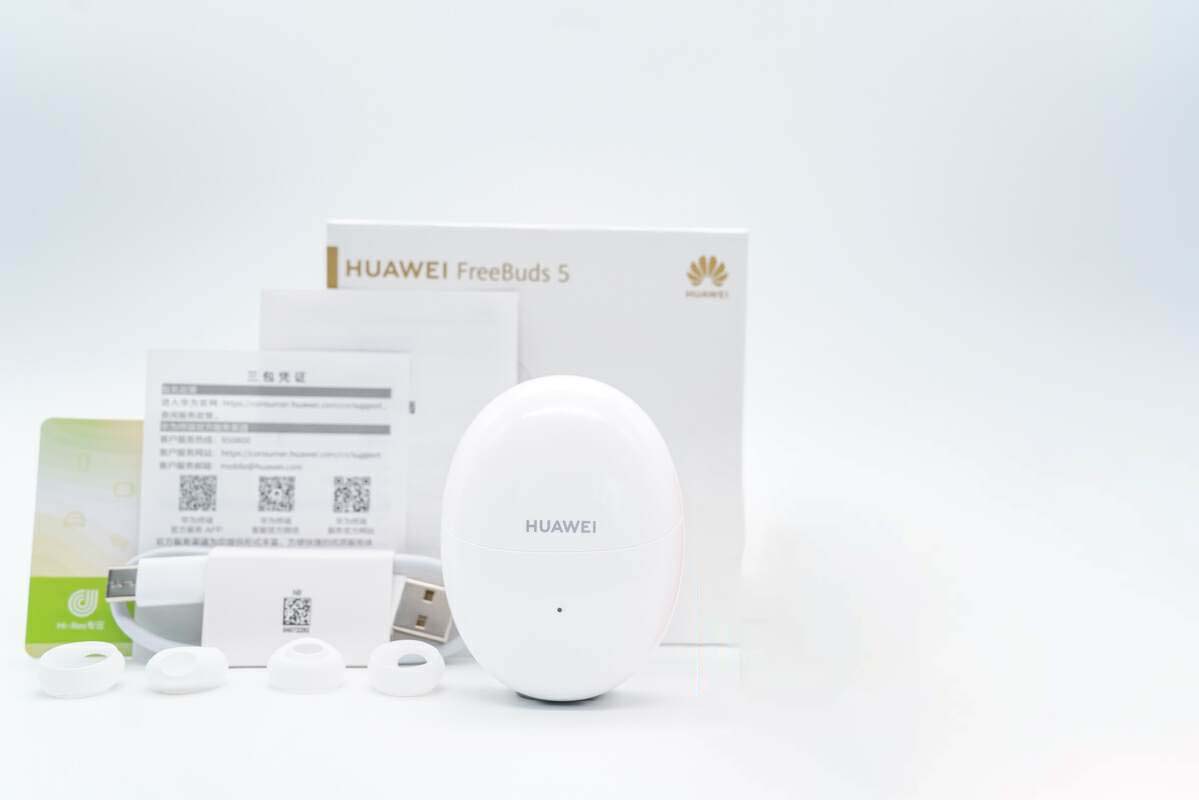
Inside the box items are headphones, earcups, charging cable, three-pack voucher, product manual, and Huawei Music Premium Gift Card.
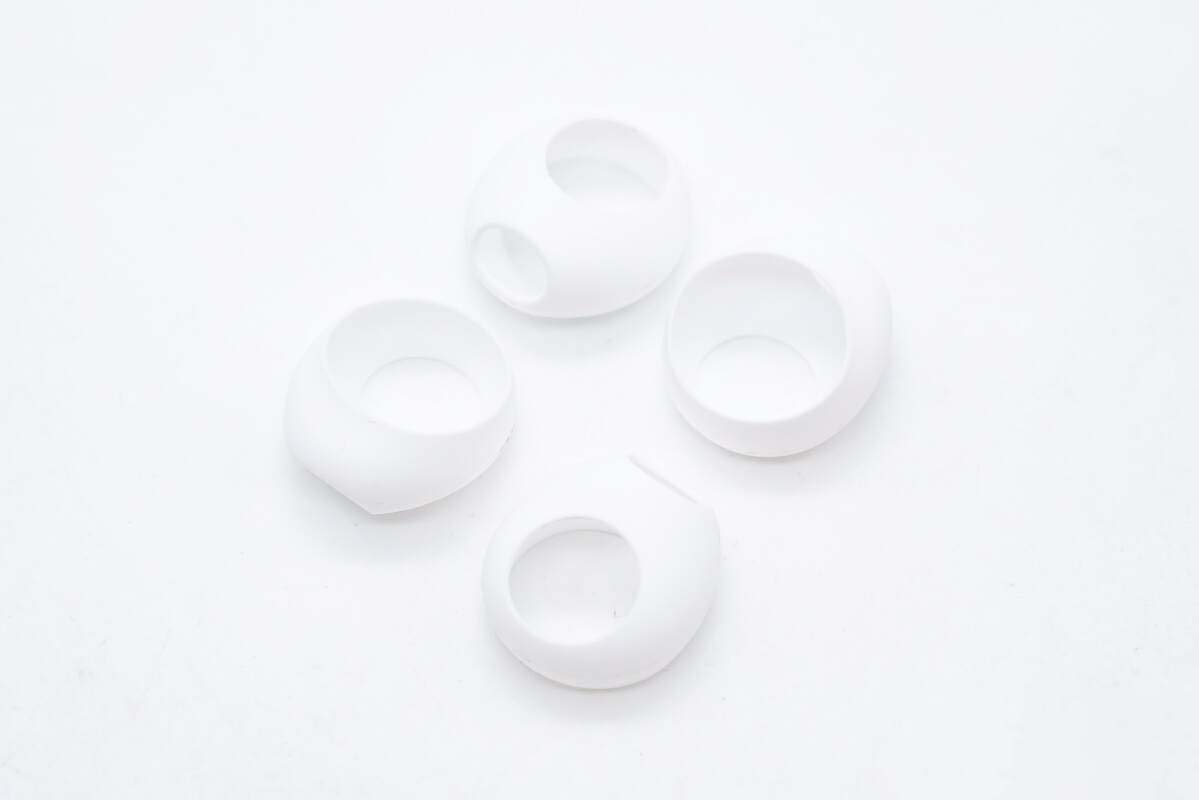
Closeup of two different sizes of silicone earcups, which can be worn on the headphones to achieve better airtightness and thus improve noise reduction performance.
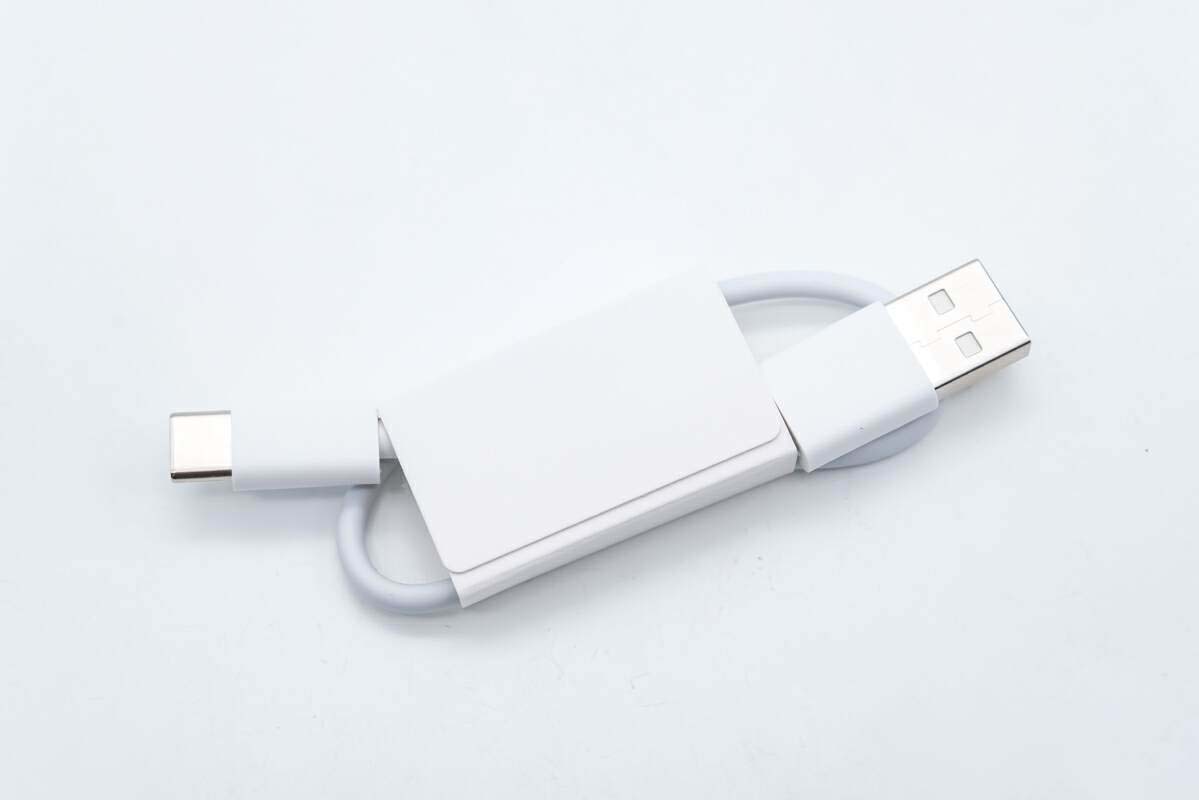
The charging cable features a USB-A to Type-C interface.
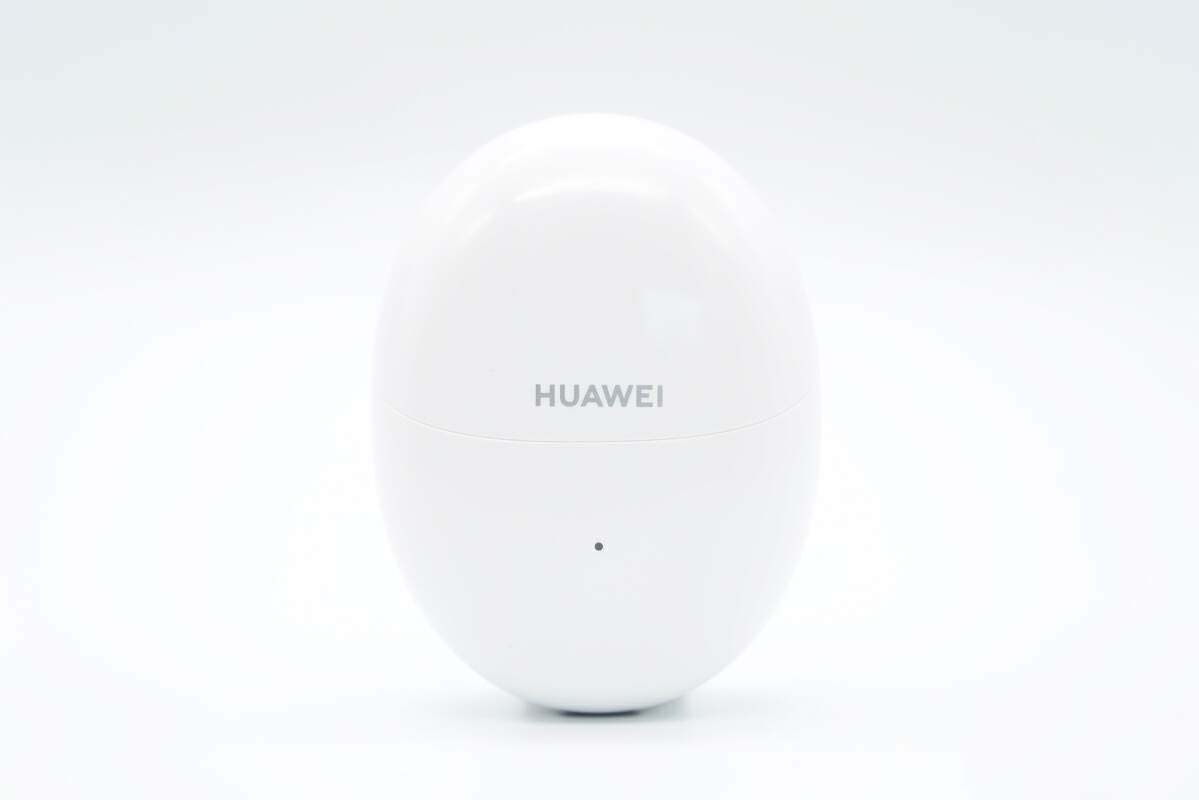
The Huawei FreeBuds 5 charging case has a "pebble"-like design, with a ceramic white color scheme that is smooth and delicate to the touch, and a very lightweight size that makes it easy to carry. The front of the charging case is designed with the "HUAWEI" brand logo and an indicator light.
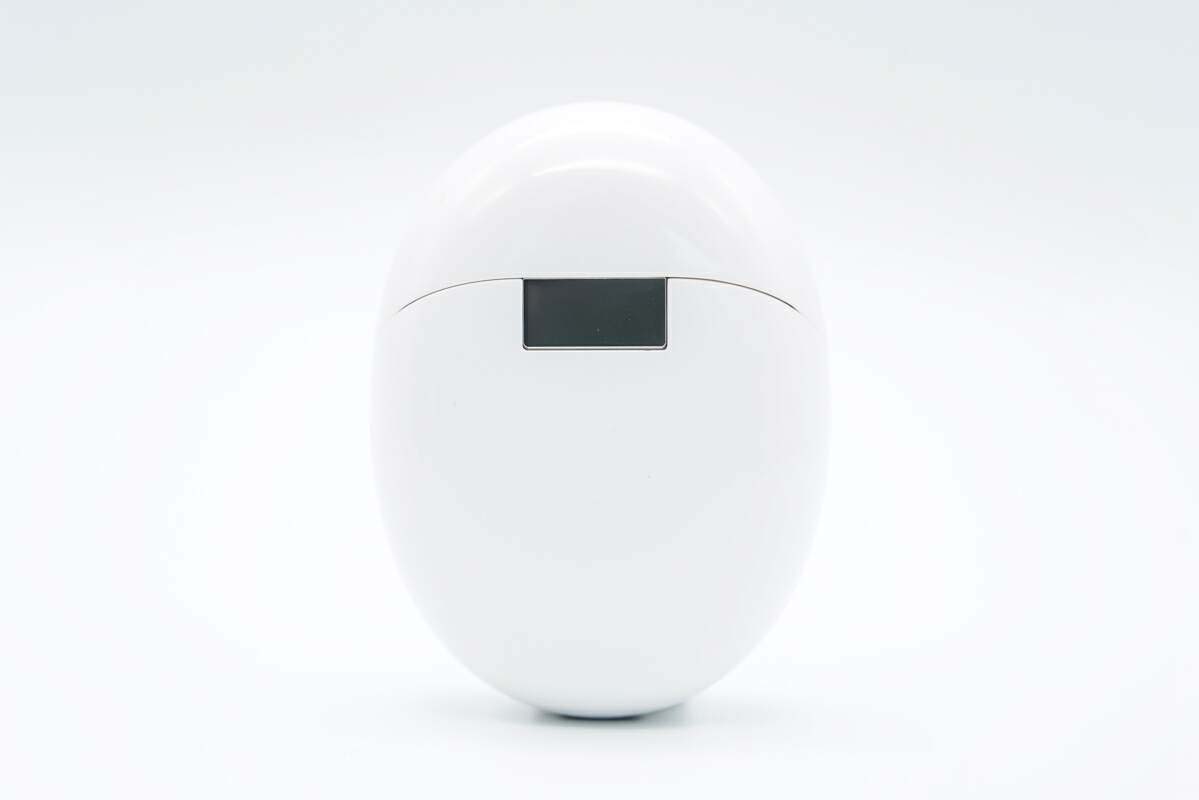
The back of the case features a bright silver metal spindle structure.
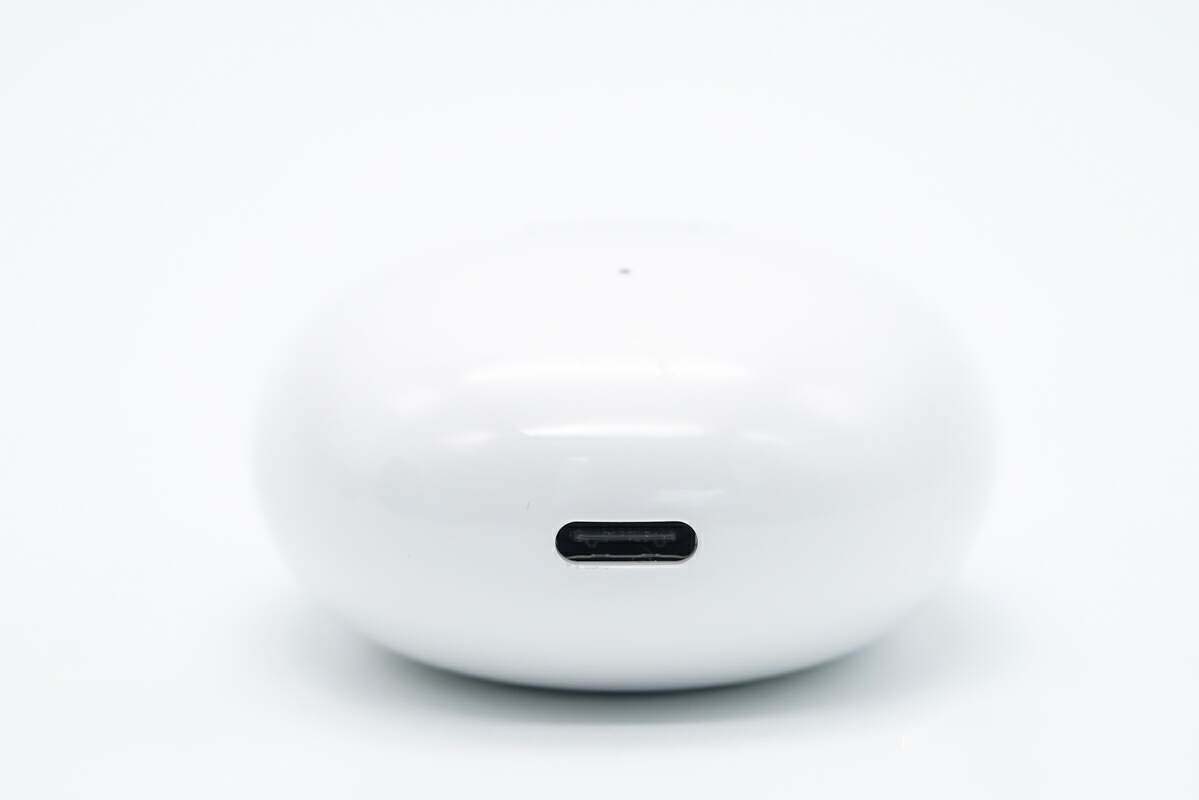
The bottom of the case has a Type-C charging port.
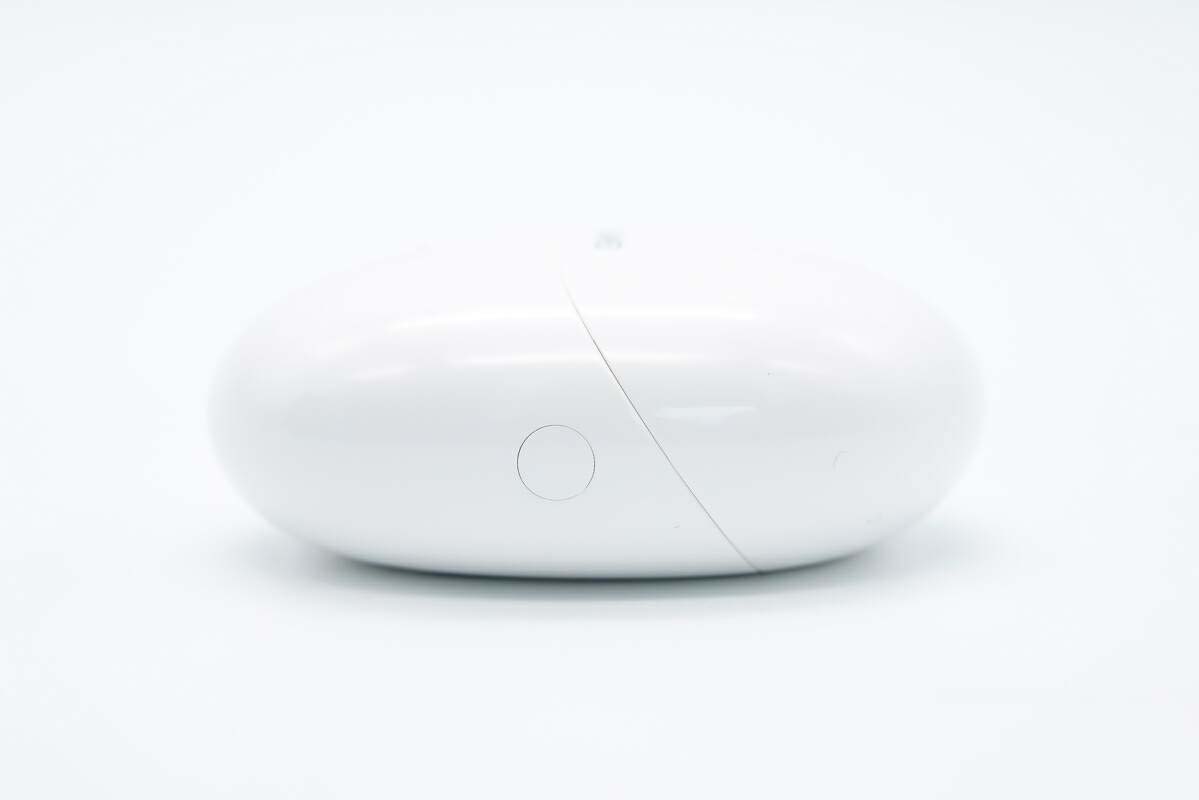
A Bluetooth pairing function button on the right side.
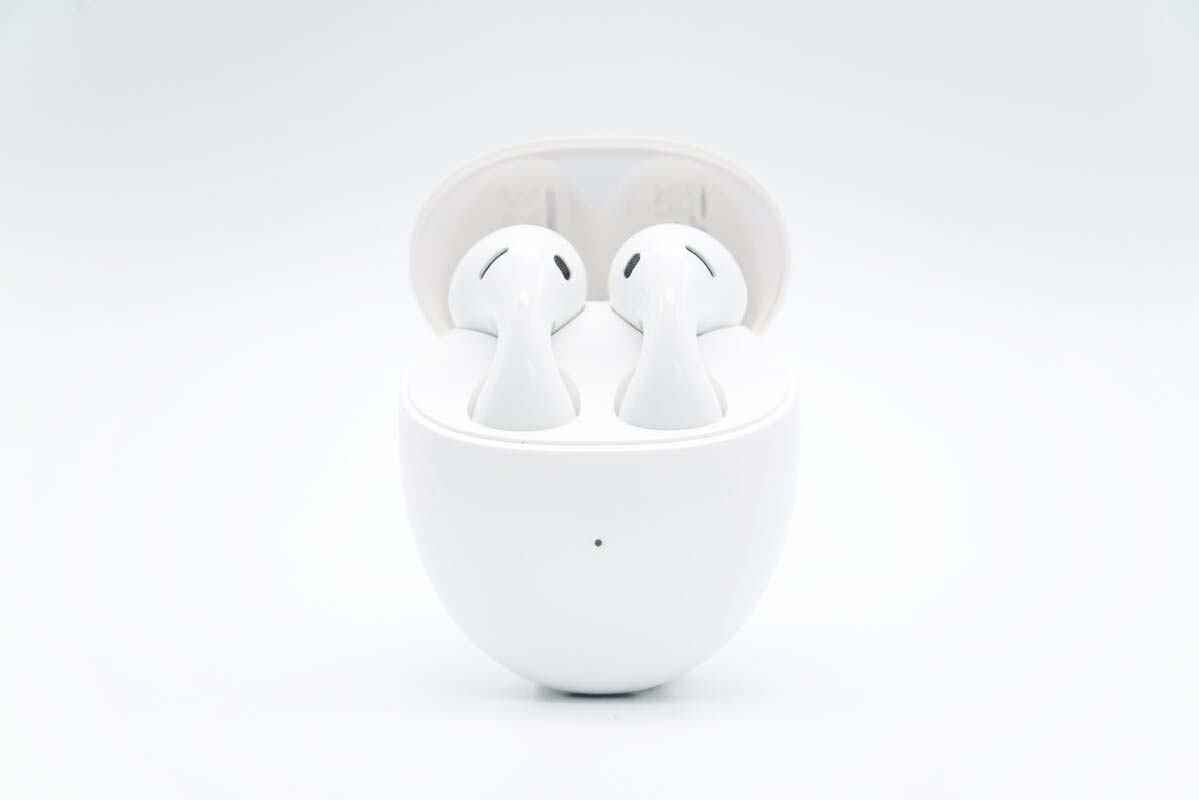
Open the lid of the charging case, the internal compartment is designed with an open structure, the headset is exposed to a large area of the compartment, fixed by positioning slots and magnetic suction, to ensure stability while more convenient to pick up and put.
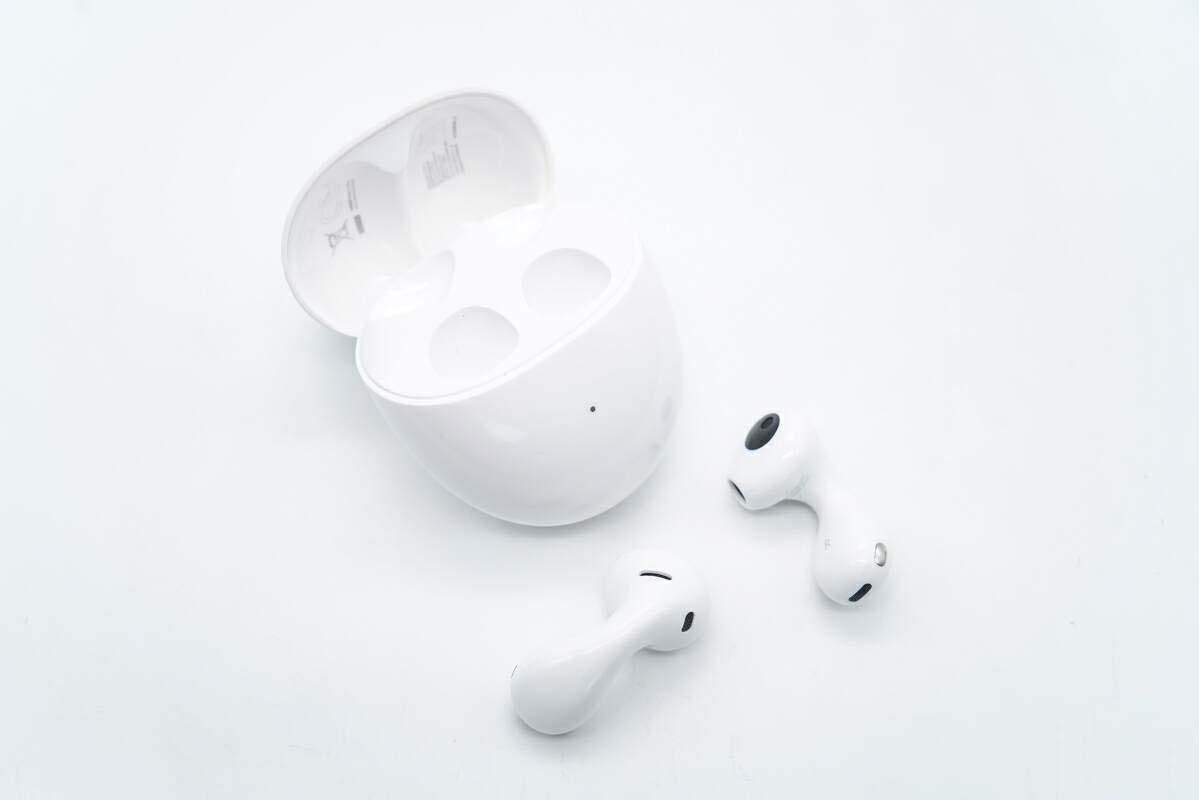
Remove the headset, the internal structure of the cockpit at a glance.
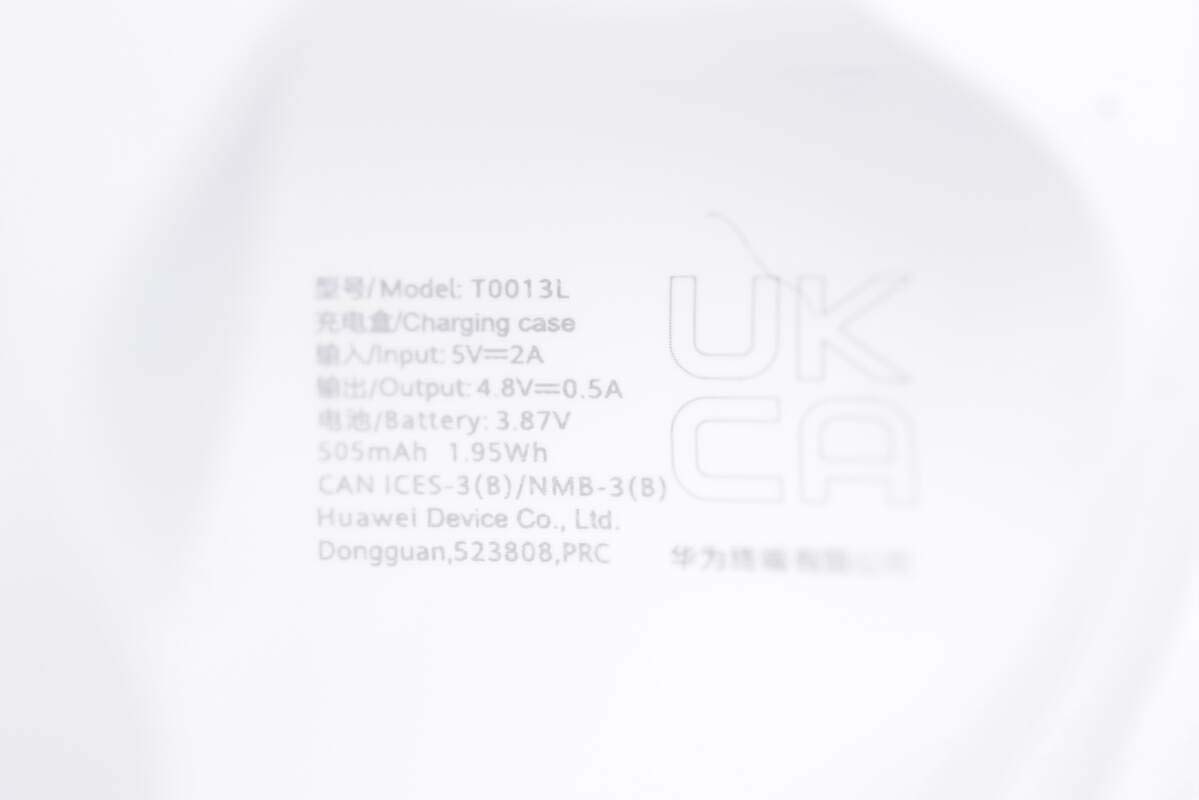
Charging box cover printed on the inside of the product information, model: T0013L, charging box input: 5V-2A, output: 4.8V-0.5A, battery: 3.87V 505mAh 1.95Wh, Huawei Terminal Co.
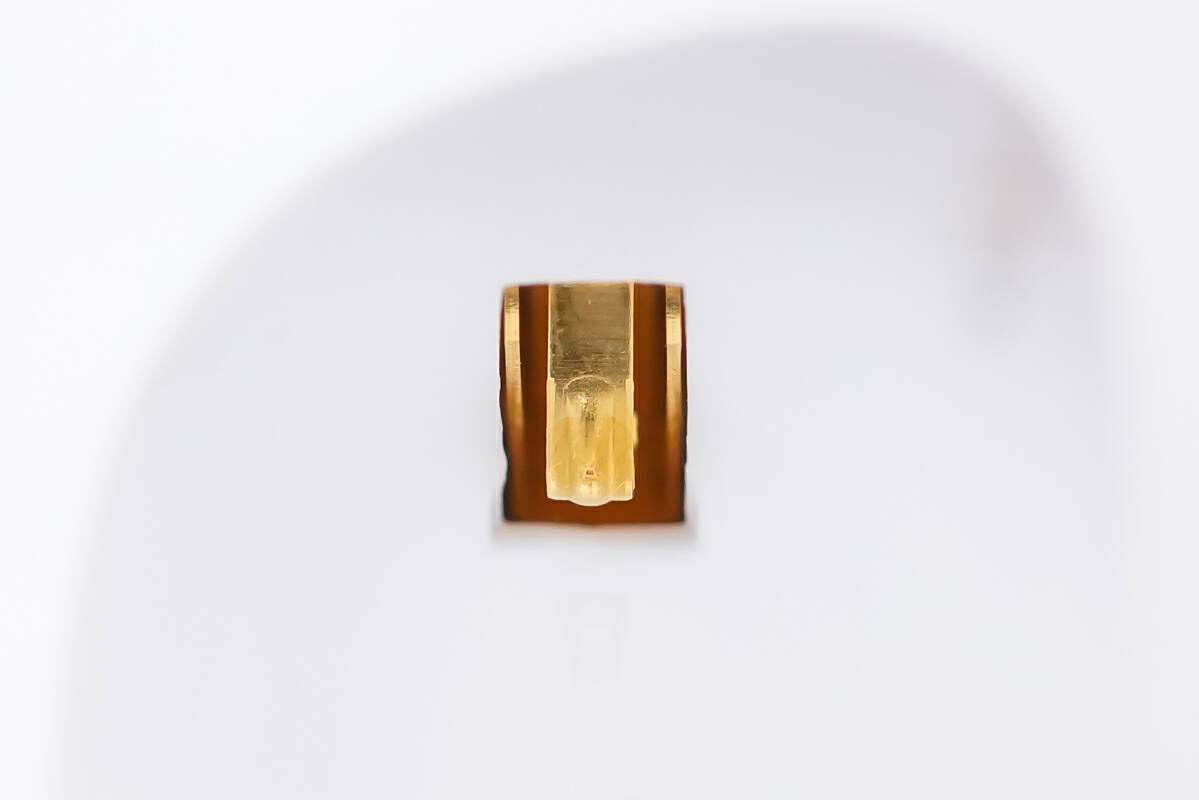
Close-up of the metal shrapnel inside the cockpit for charging the headset.
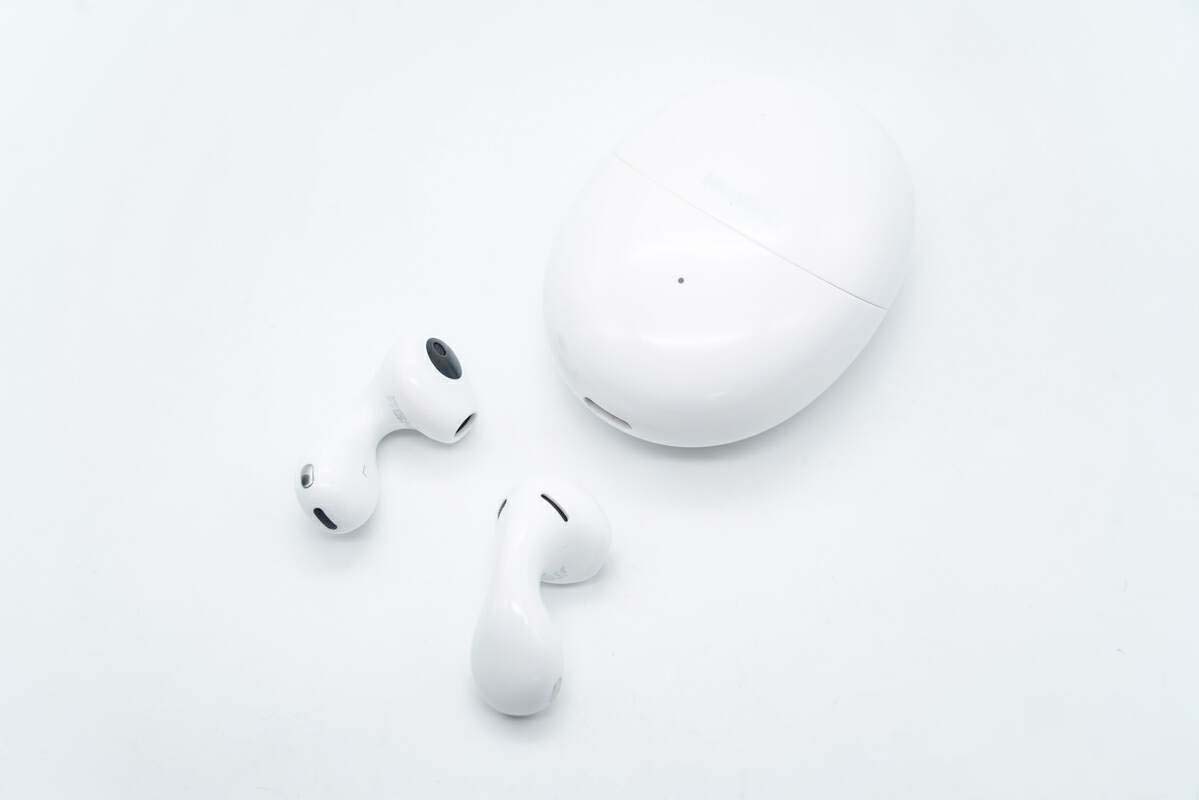
A look at the overall appearance of the Huawei FreeBuds 5 true wireless noise-cancelling headphones.
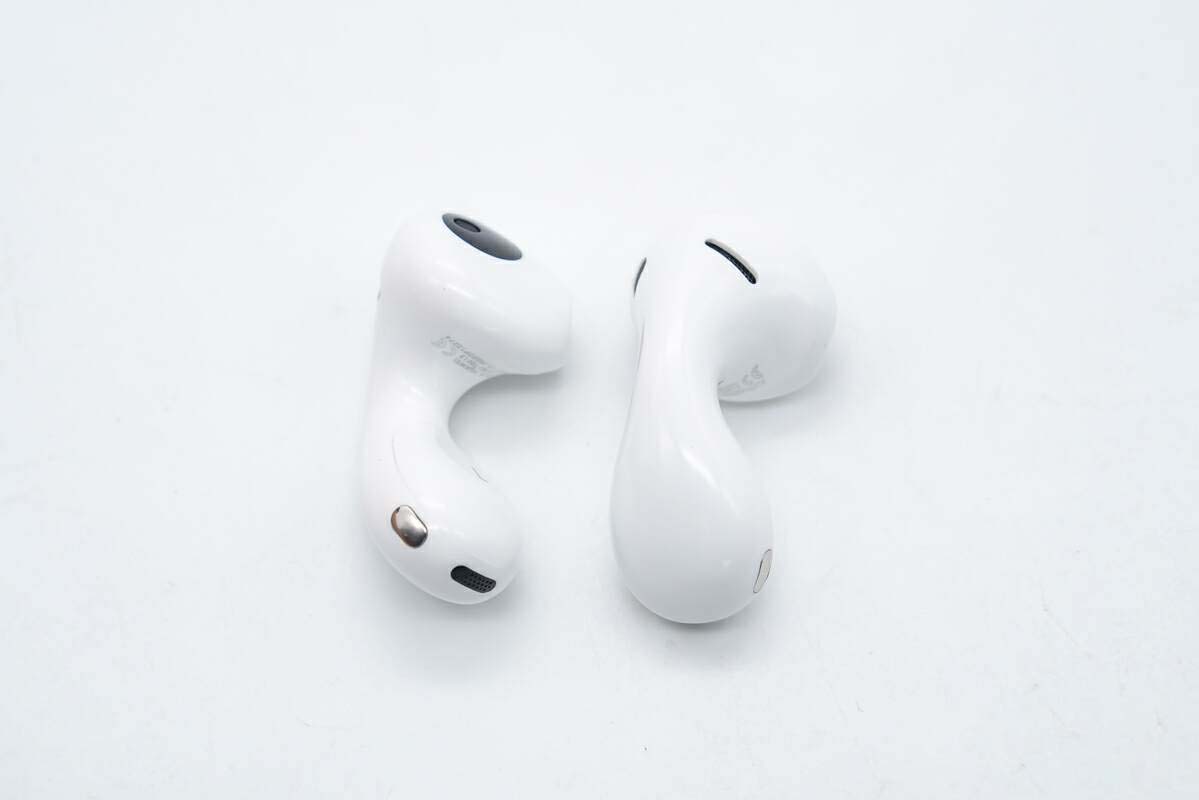
Huawei FreeBuds 5 headphones feature a fully curved streamlined design with a water-drop shape that is fashionable and edgy, highly textured and recognizable. The body curve has been ergonomically tested tens of thousands of times to better fit the contours of the headset and provide a comfortable wearing experience.
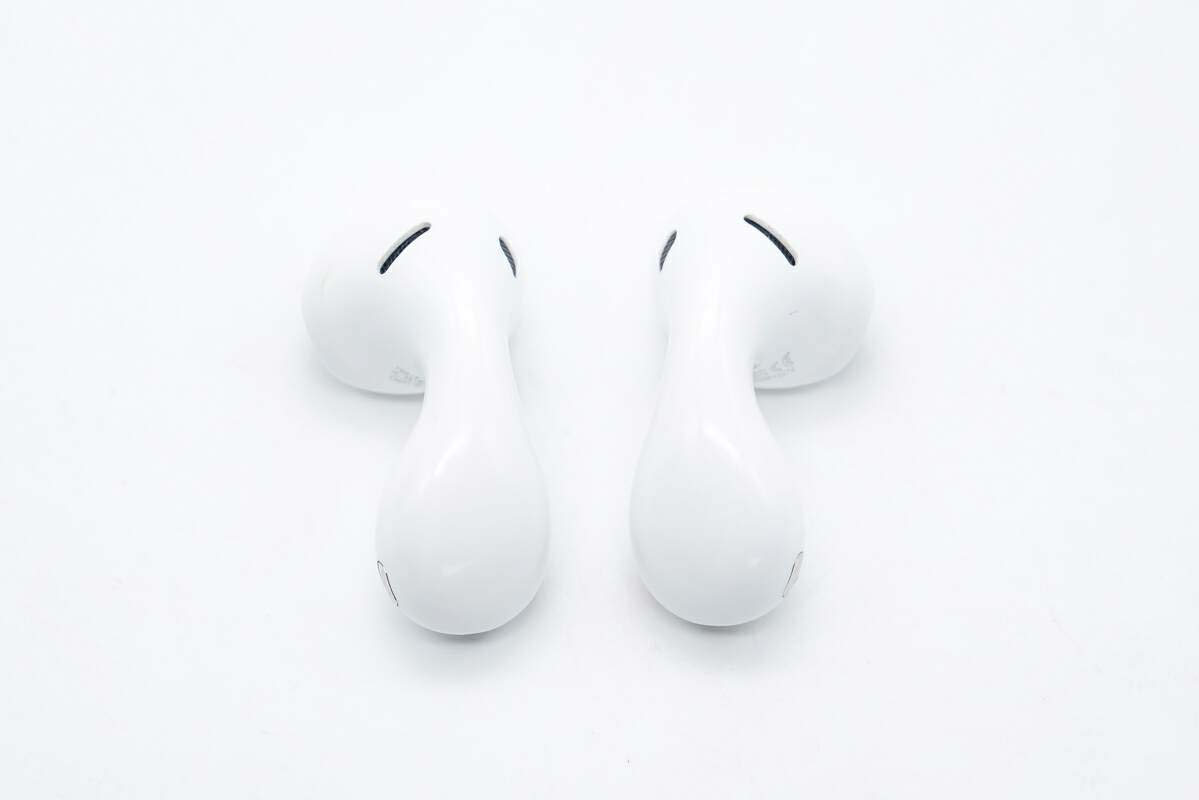
Headset external appearance at a glance, headset head design bar pressure relief hole and microphone pickup hole, curved arm for touch control area.
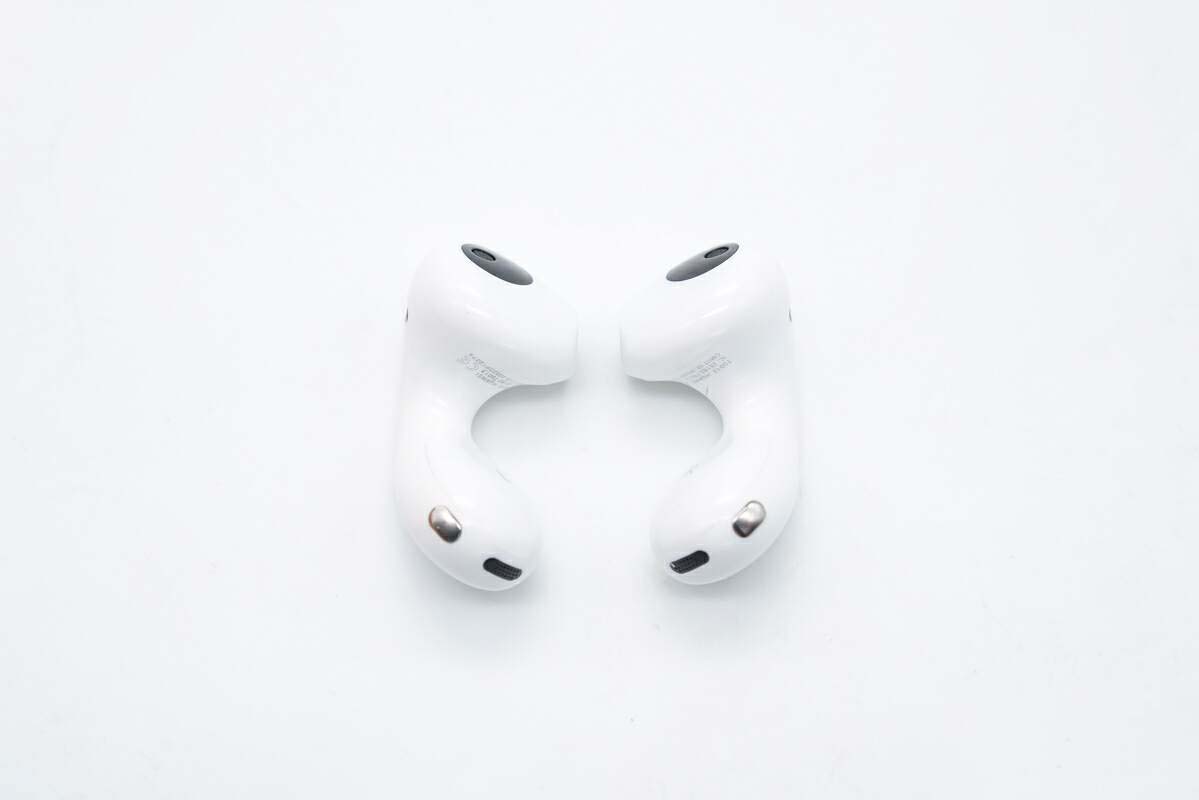
Headset inside appearance at a glance, the bottom of the call microphone pickup holes and metal contacts for charging the headset.
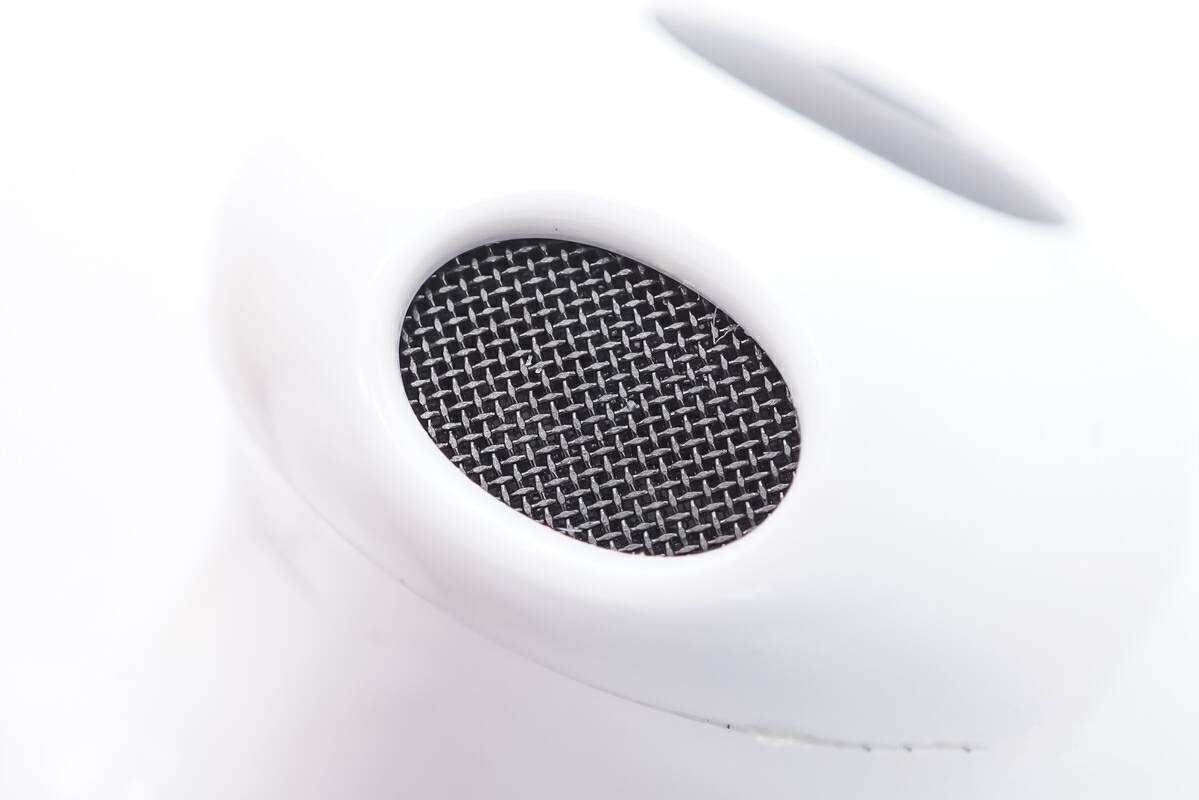
Closeup of the headset nozzle, rounded and fine openings, internal dust mesh protection to prevent foreign objects from entering the sound cavity. There is also a back-fed noise-canceling microphone set inside for picking up sound from inside the ear canal.
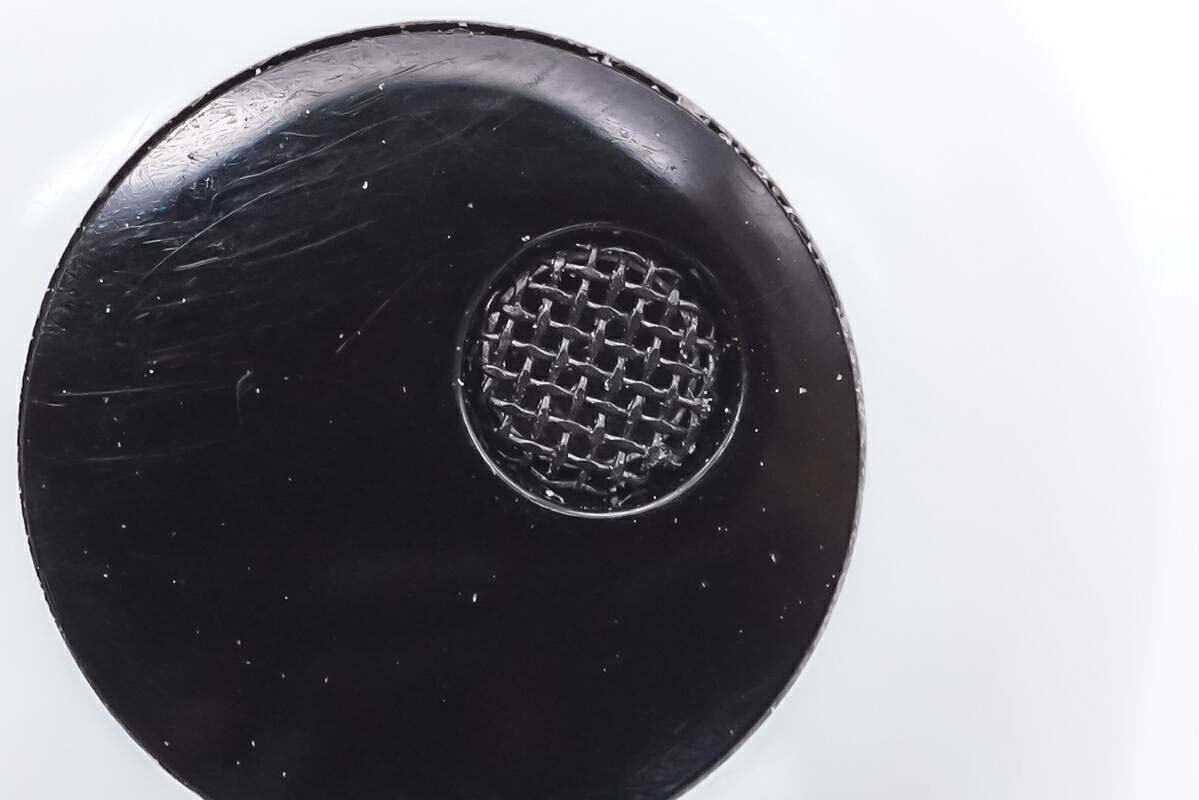
Close-up of the sound cavity tuning hole, the peripheral black cover built-in optical in-ear detection sensor.
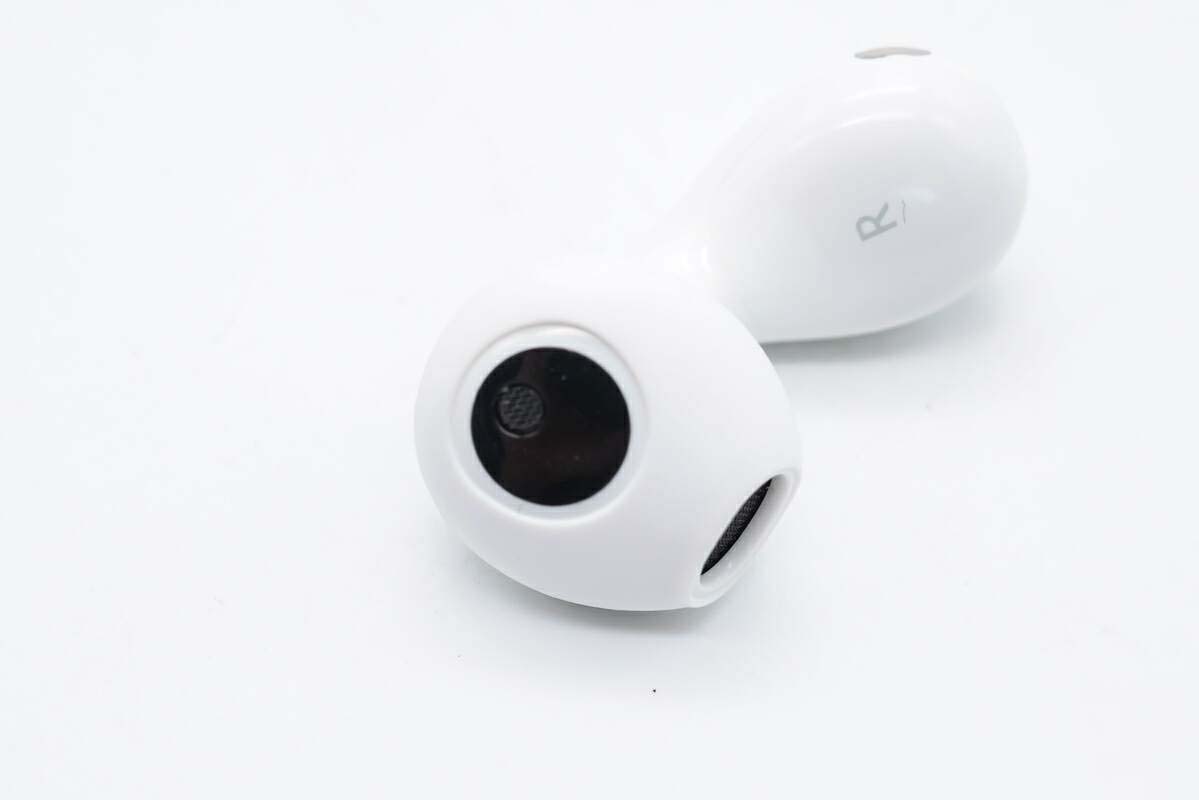
Headphones wearing earcups appearance at a glance, can enhance the wearing of airtightness and stability.
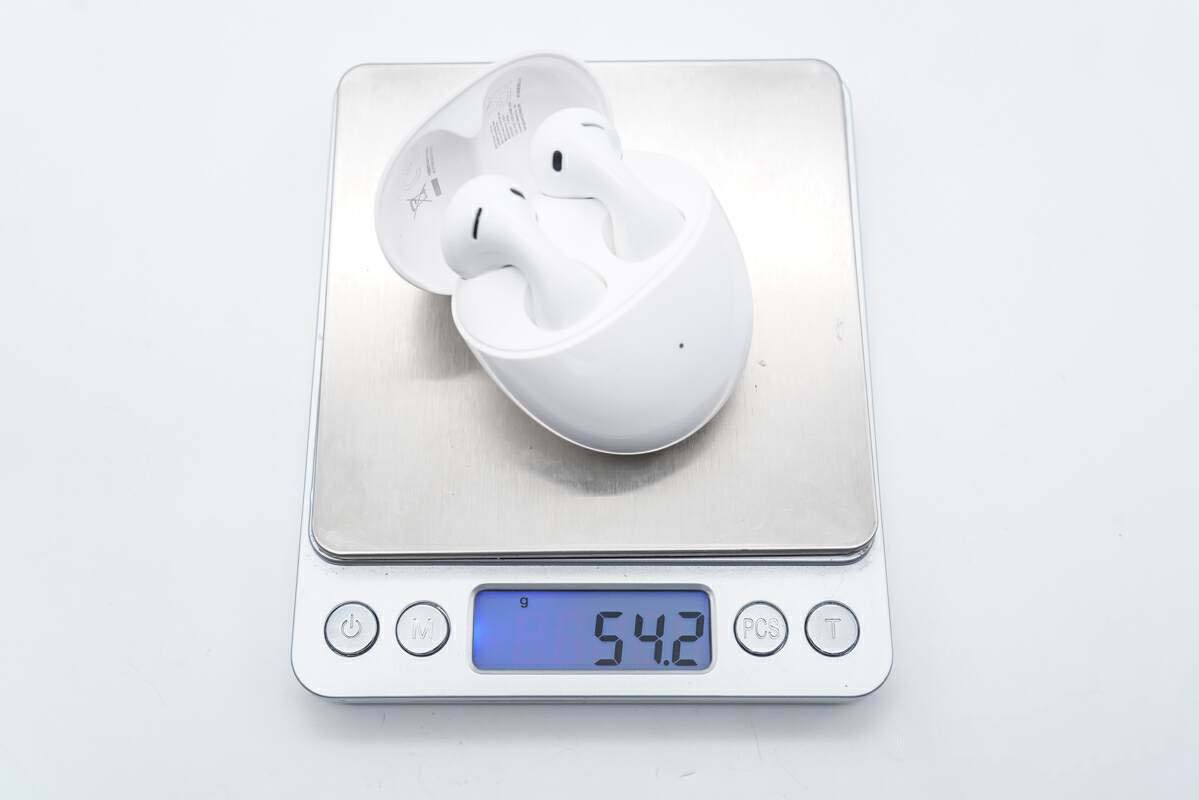
I love the audio network measured, Huawei FreeBuds 5 true wireless noise cancellation headphones weigh about 54.2g.
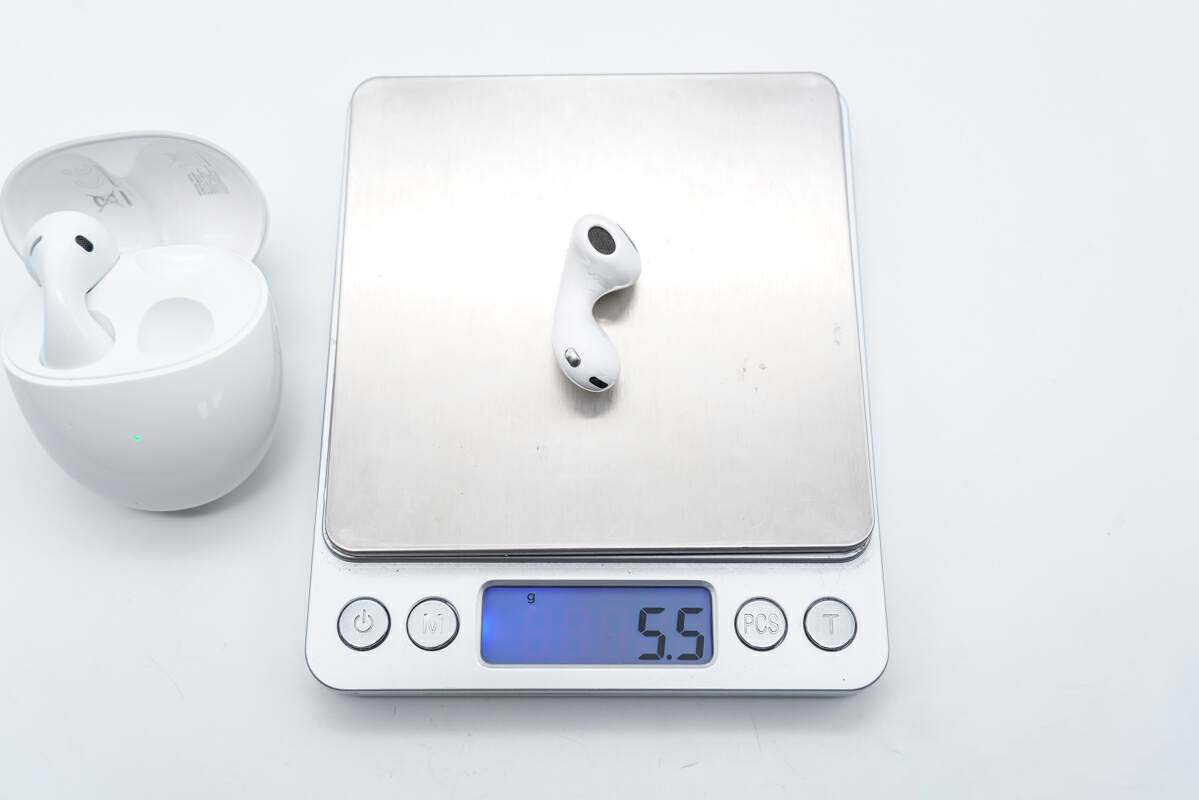
The weight of a single headset is about 5.5g.
2, Huawei FreeBuds 5 true wireless noise cancellation headphones disassembly
Through the unboxing, we understand in detail the new design of Huawei FreeBuds 5 true wireless noise cancellation headphones, the following into the disassembly part, look at the internal structure and hardware configuration information ~
Charging box disassembly
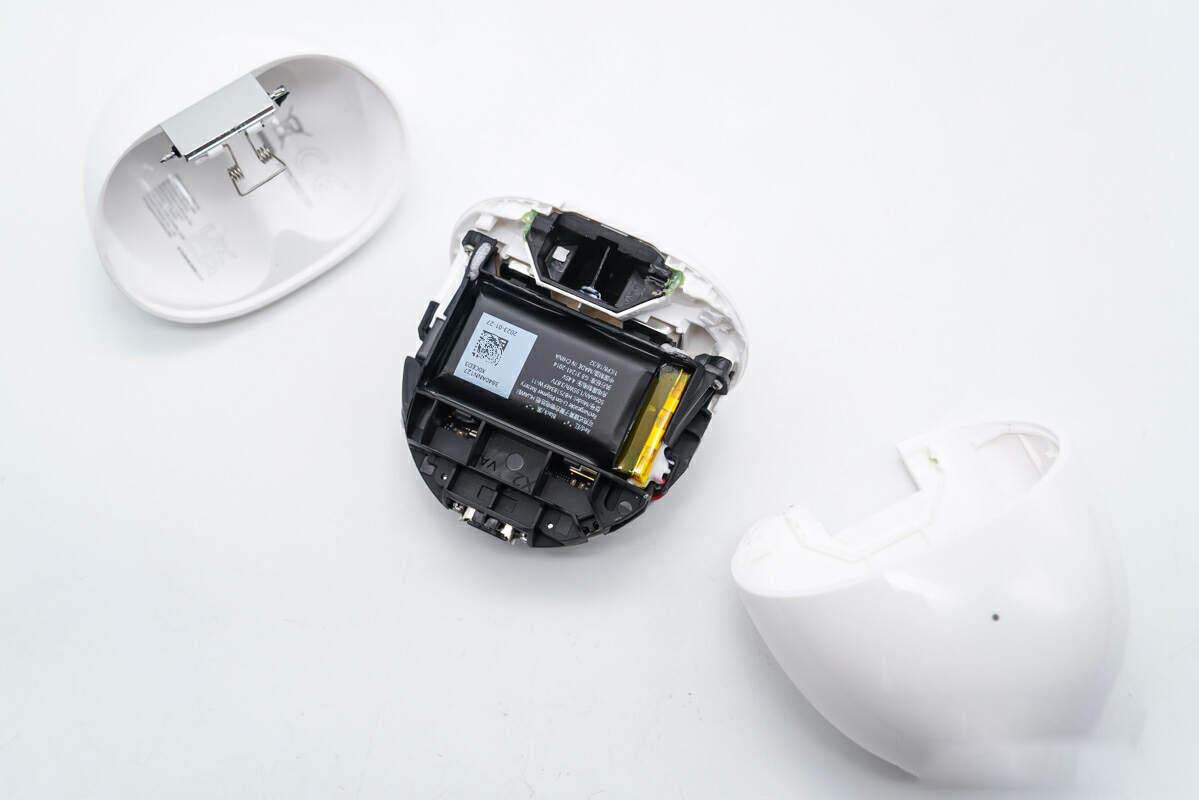
Disassemble the charging box shell and take out the cabin structure.
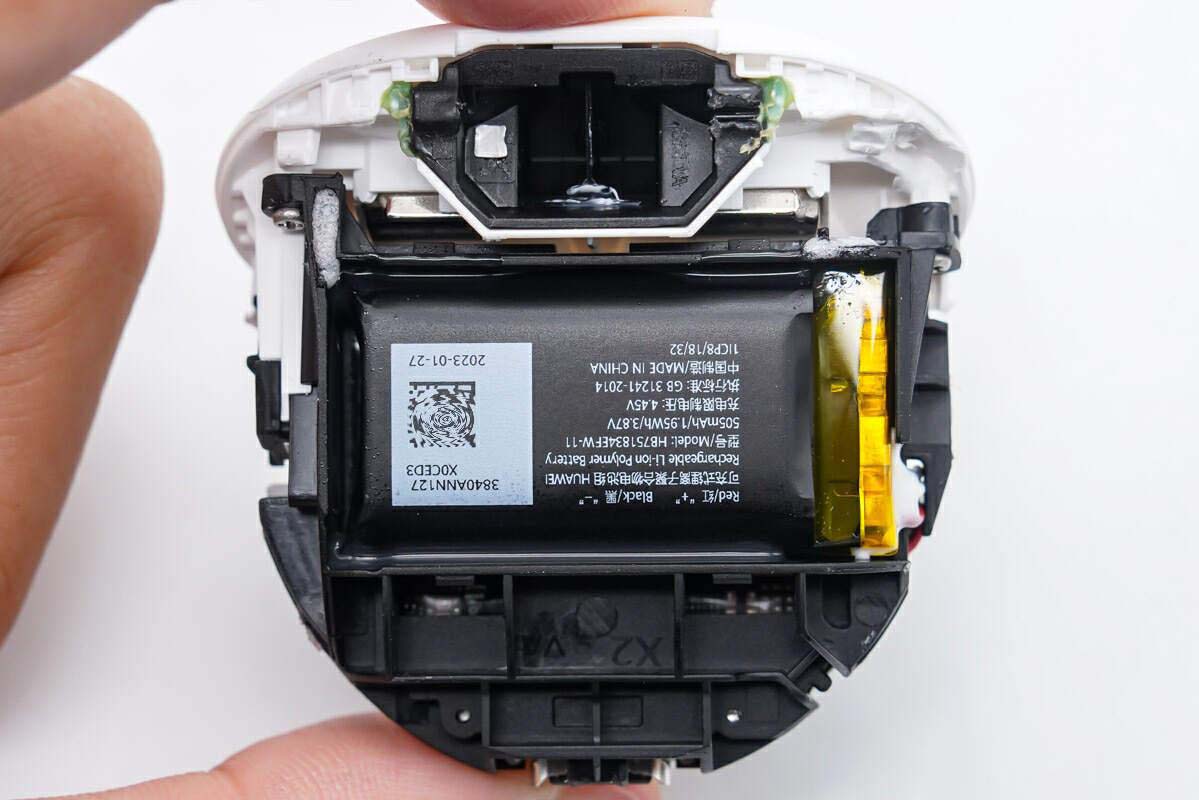
The bottom of the compartment is fixed by screws on the frame, and various components are set on the frame.
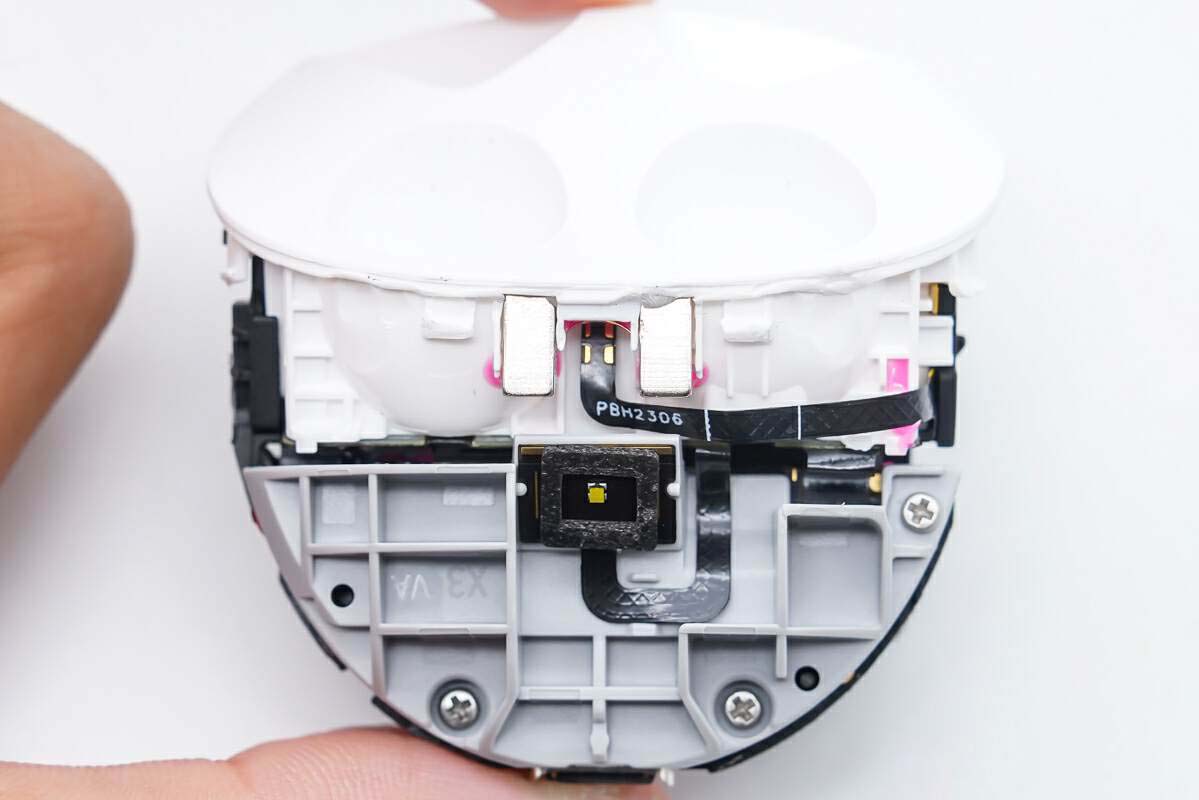
The other side of the cover structure at a glance, above the sticker indicator line. At the bottom of the cockpit, there are Hall components connected to the motherboard through the line.
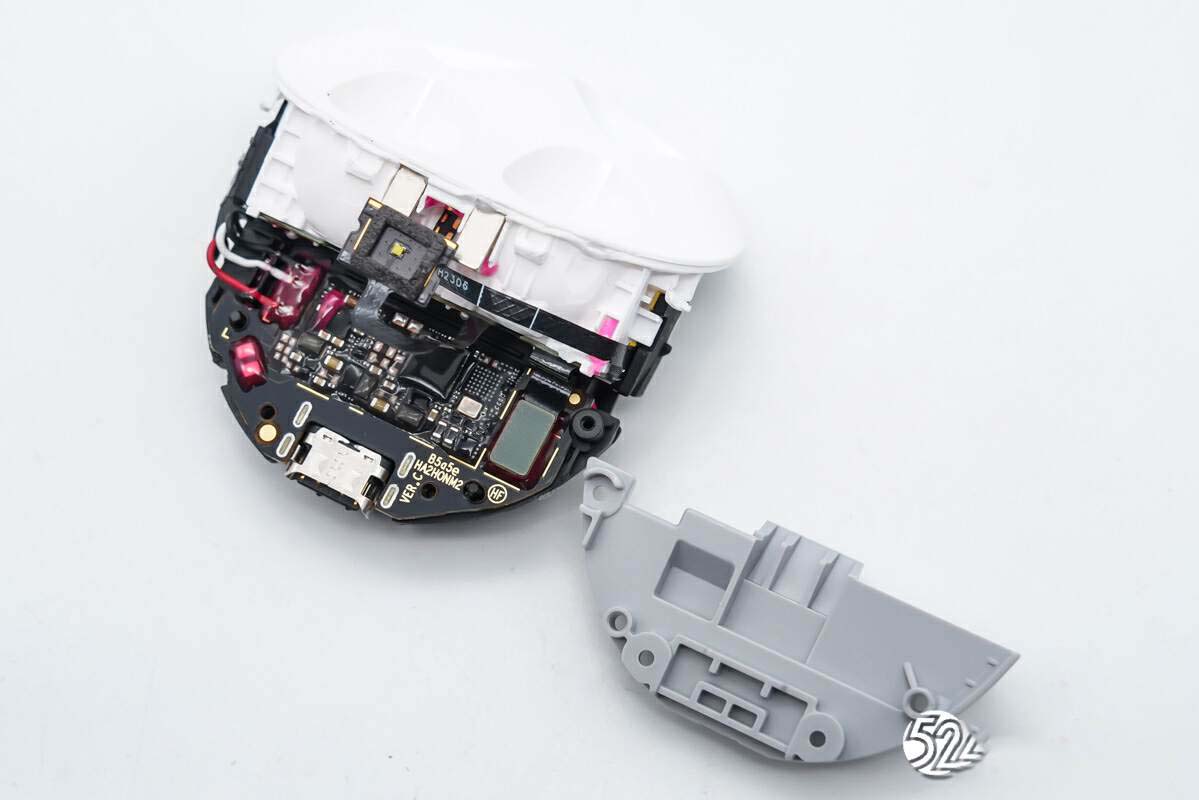
Remove the screws, take off the cover, and fix the main board unit in the middle.
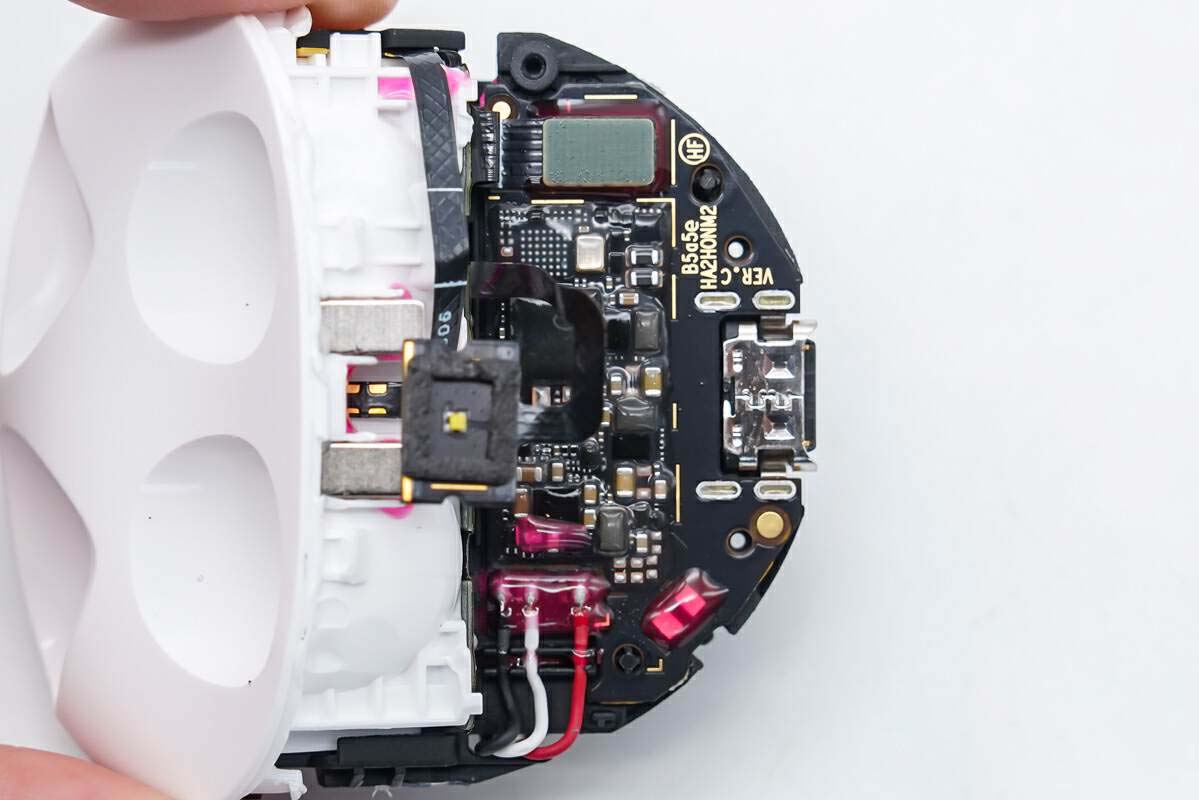
The main board structure at a glance, fixed to the frame through the positioning post, the row of wires and the main board through the BTB connector connection, battery wires soldered on the main board and glue protection.
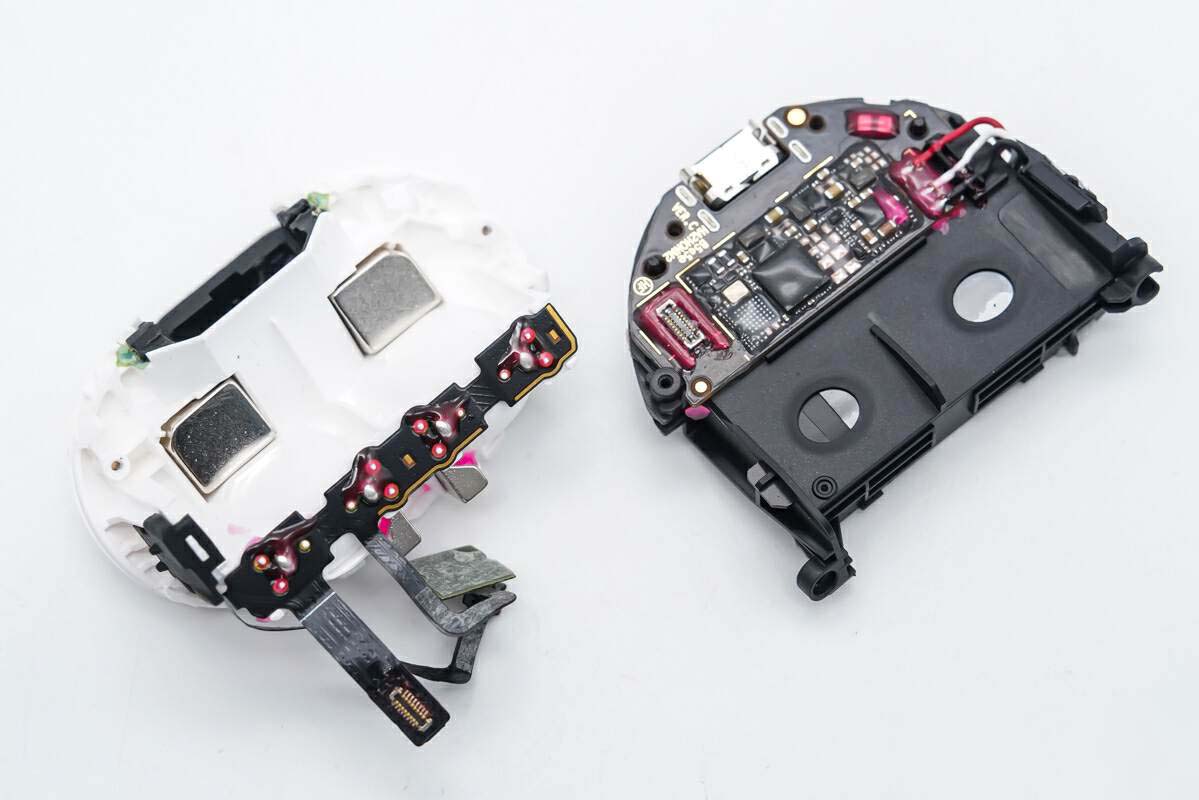
Pick open the connector, remove the screws, separate the cockpit.
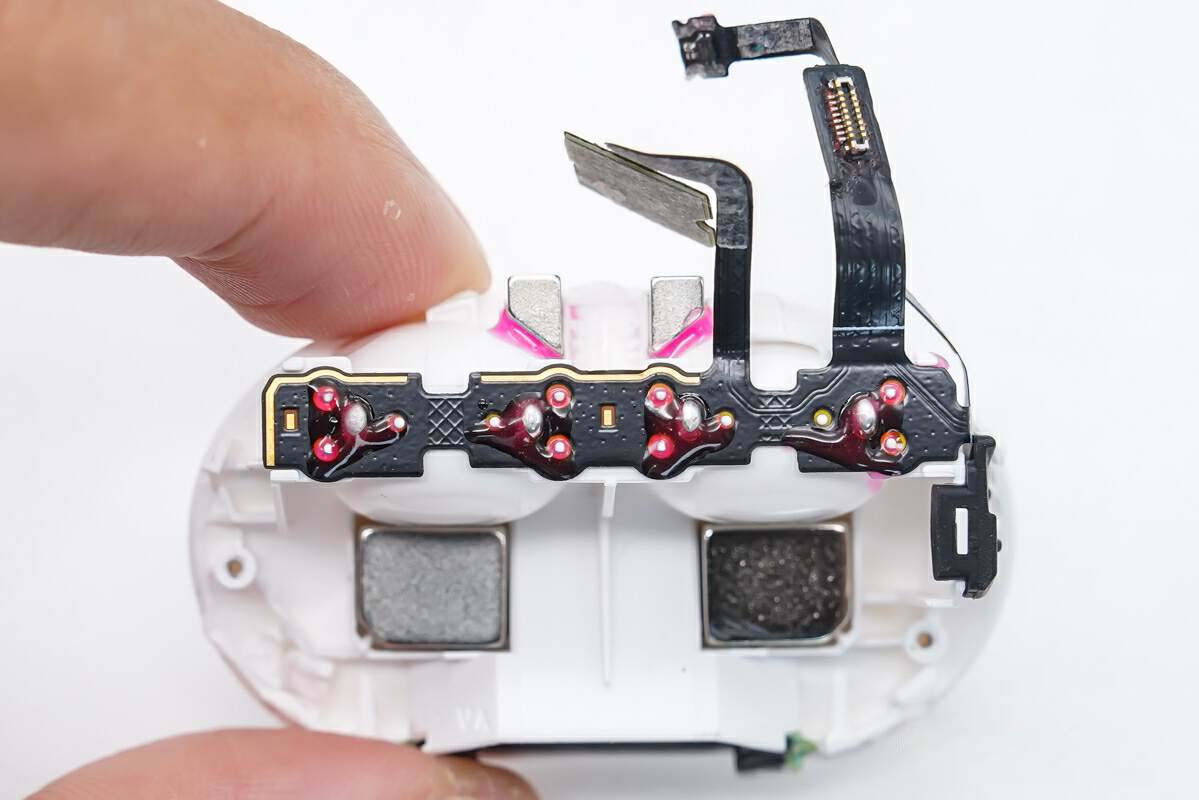
The bottom of the cockpit headphone charging contacts, Hall components, indicators, function buttons connected to the same circuit.
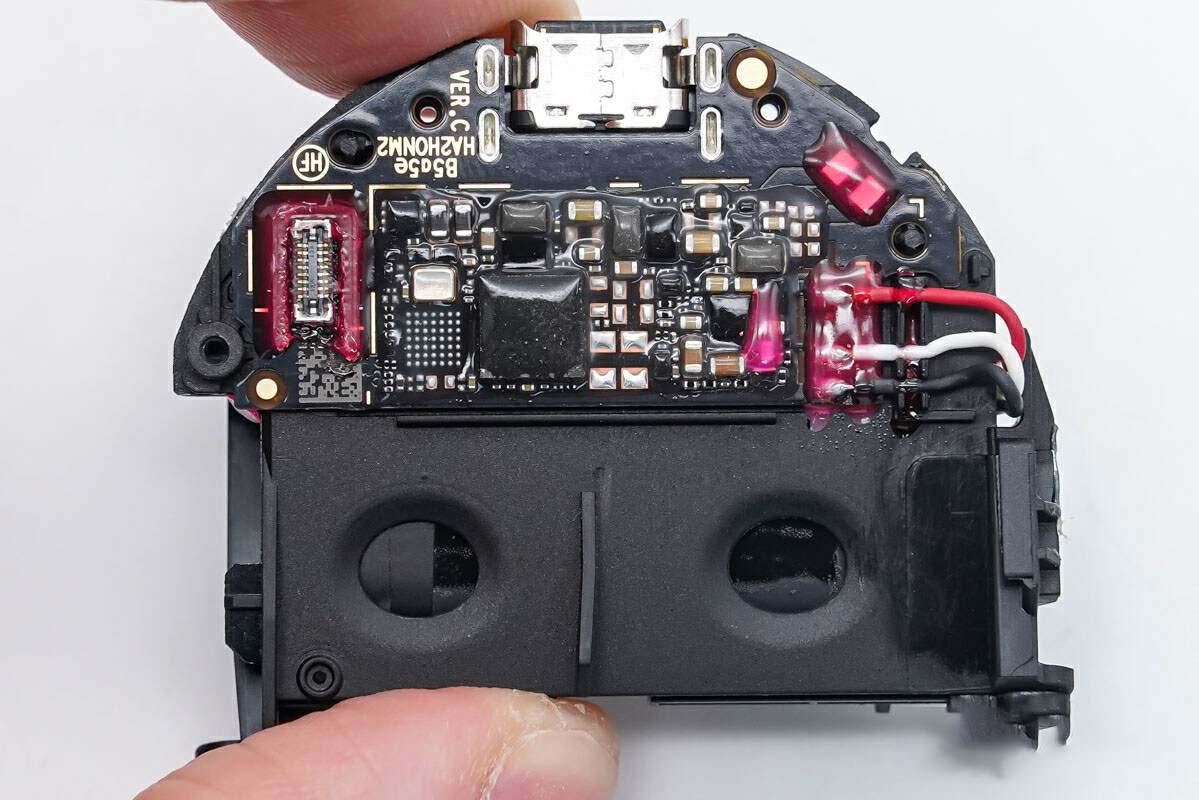
The structure of one side of the frame at a glance, fixing the motherboard unit.
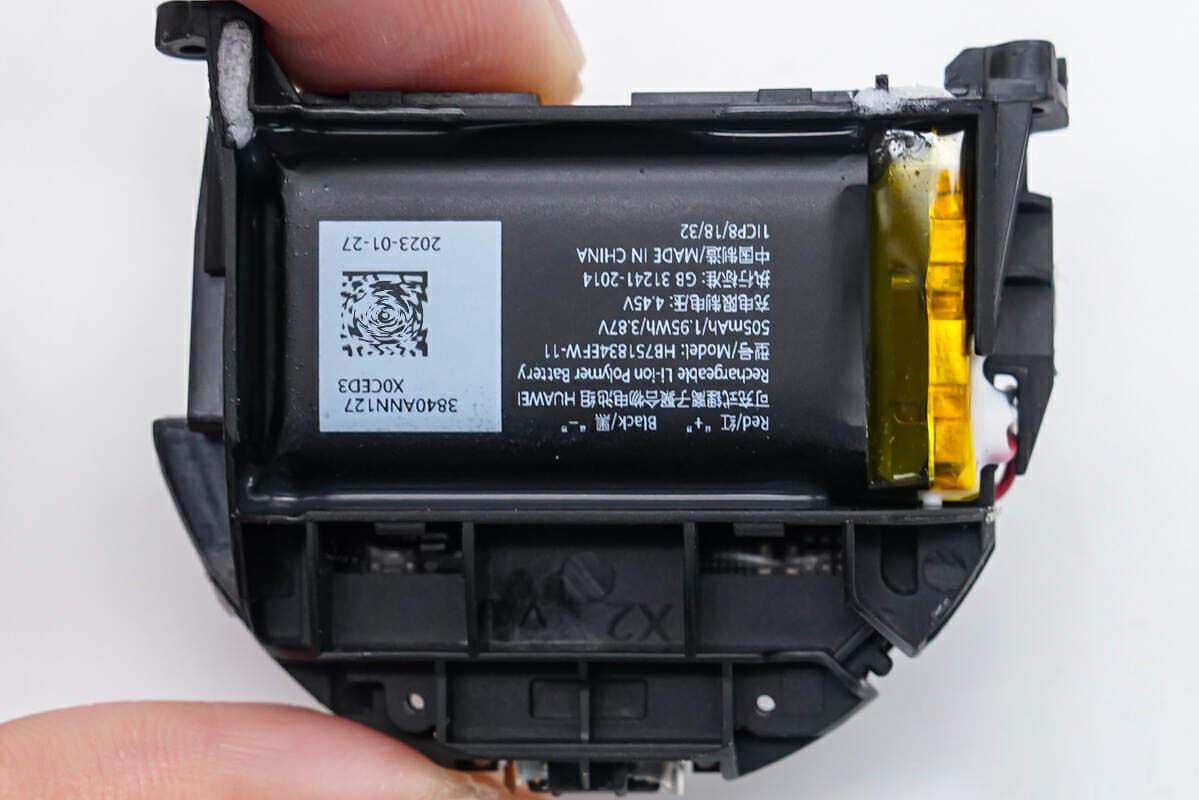
The battery unit is fixed on the other side of the frame.
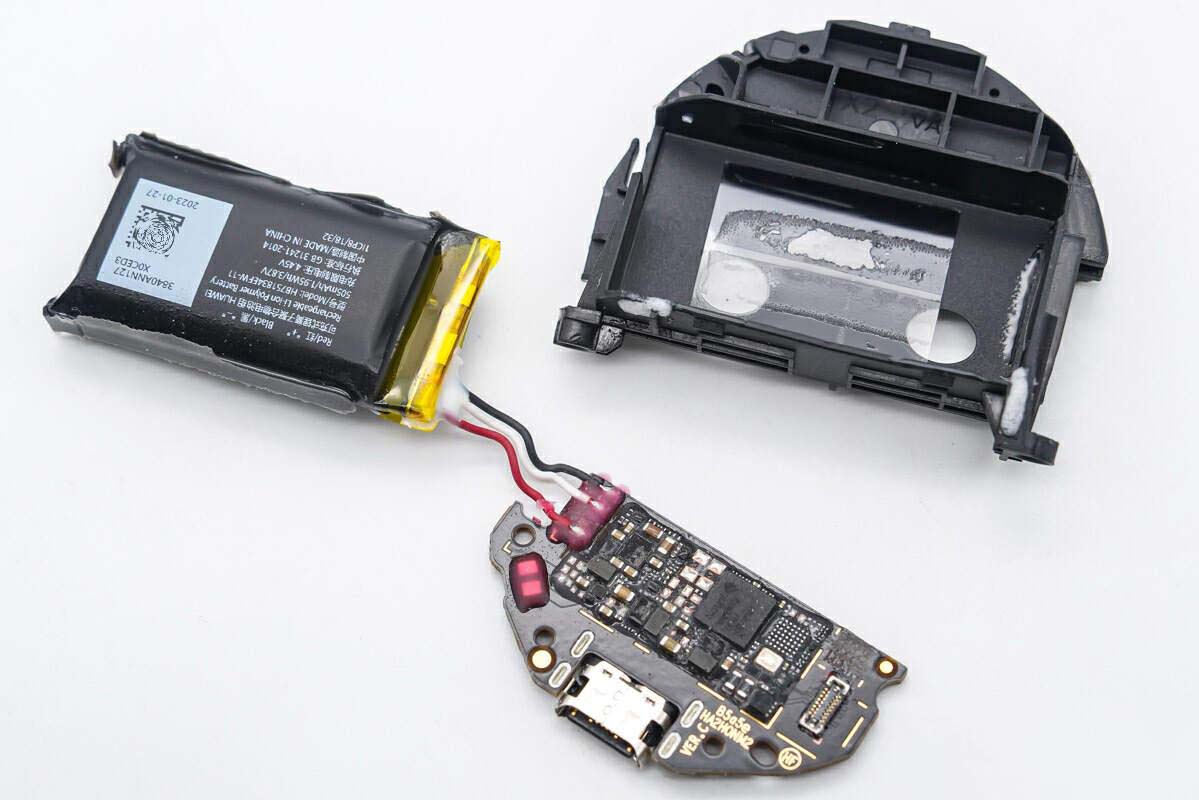
Removing the main board and battery from the frame.
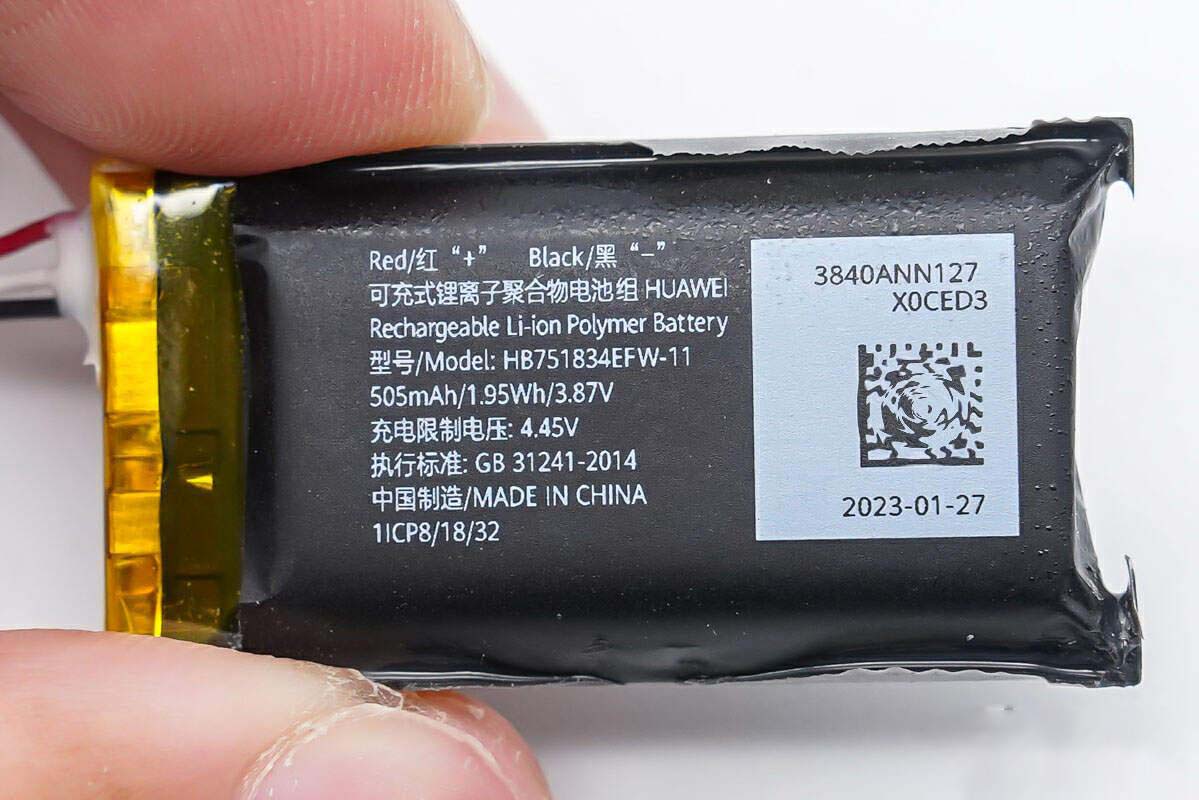
Charging case built-in lithium-ion polymer battery pack, model: HB751834EFW-11, rated capacity: 505mAh 1.95Wh, nominal voltage: 3.87V, charging limit voltage: 4.45V, made in China.
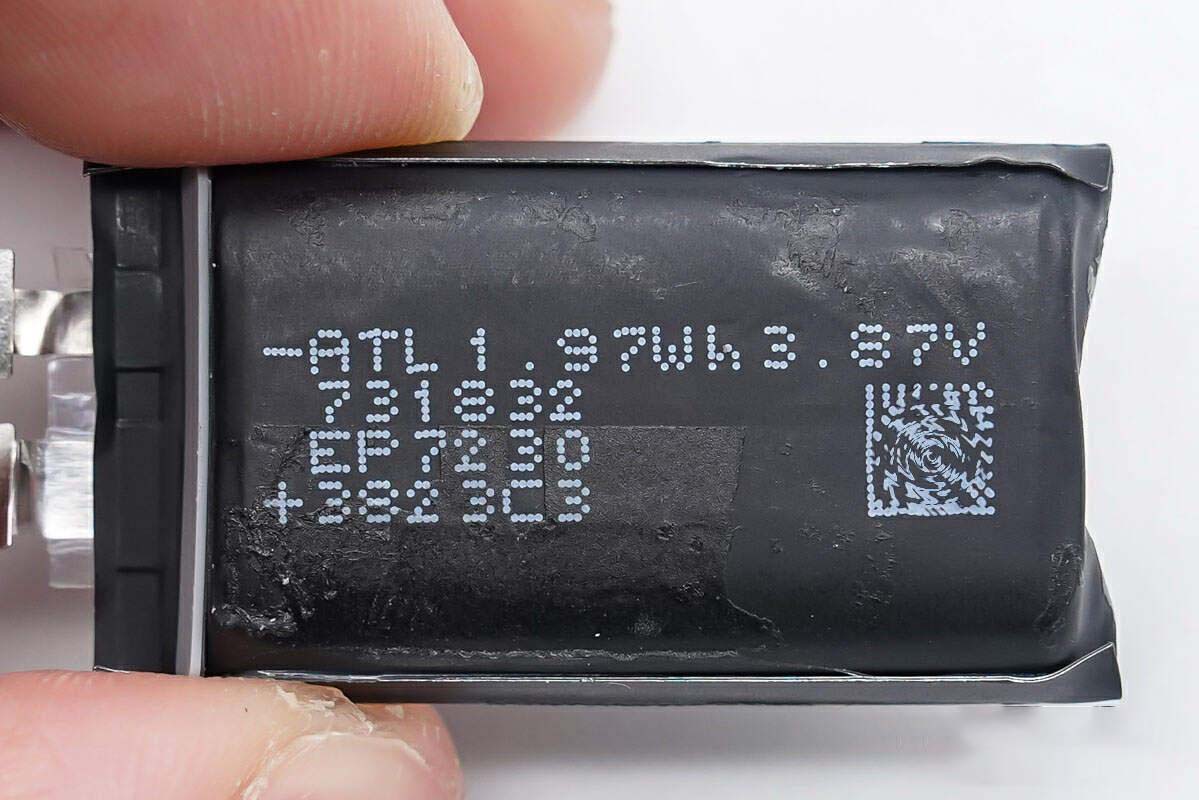
Tear off the external insulation protection, silkscreen information on the internal battery core, model number: 731832, from ATL Dongguan New Energy.
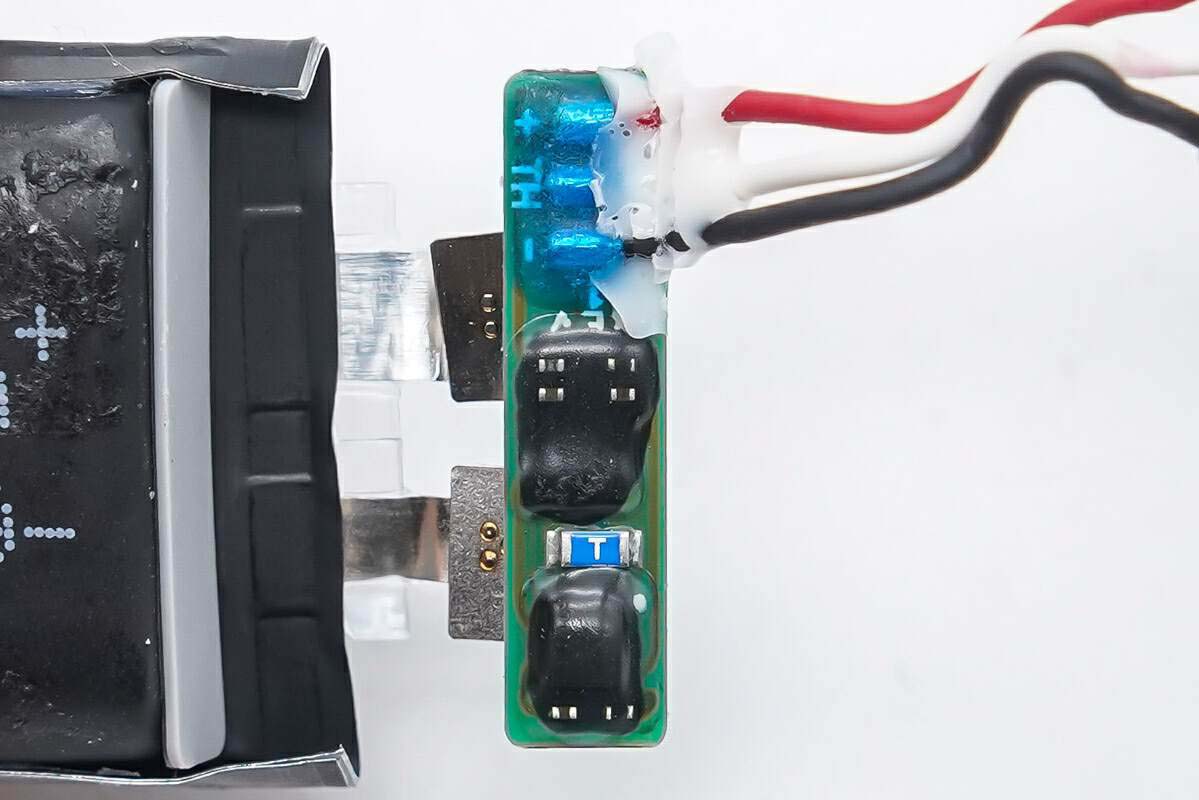
The circuit of the battery protection board at a glance, the components are protected by black hard glue, unable to get detailed information.
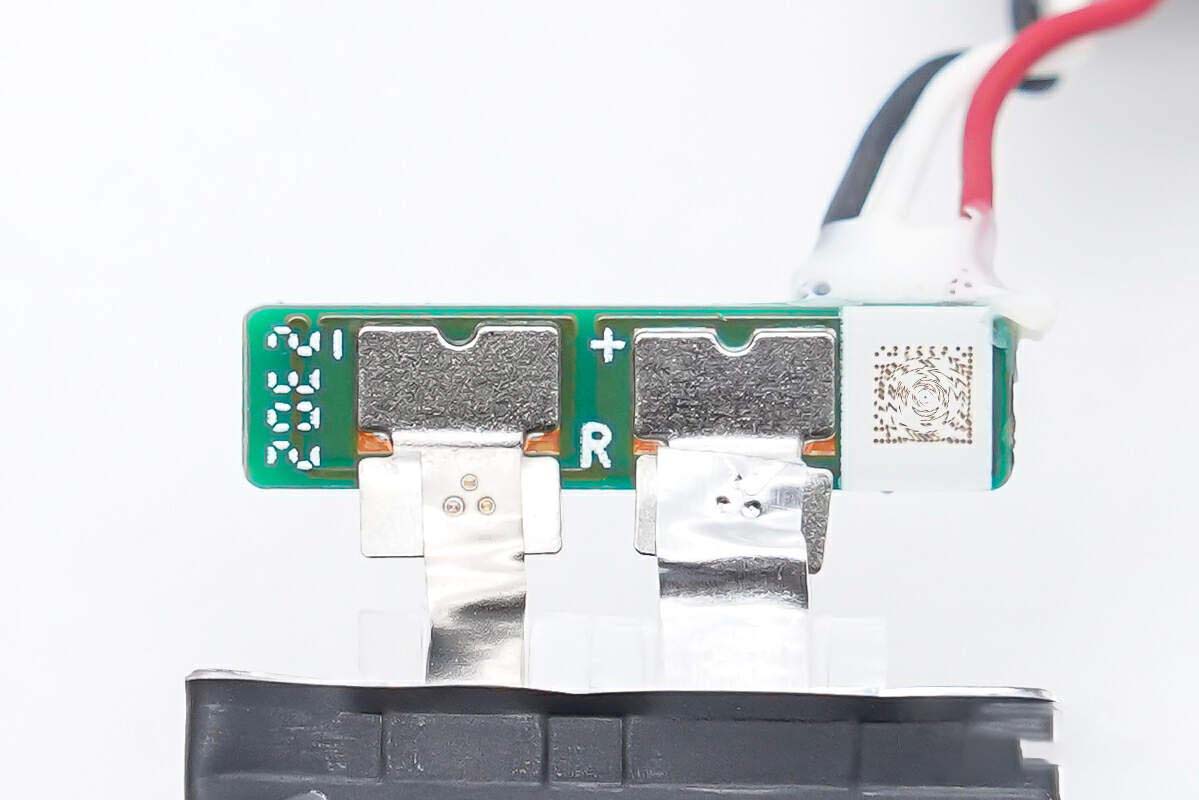
The other side of the battery protection board circuit at a glance, the battery spot welding connection.
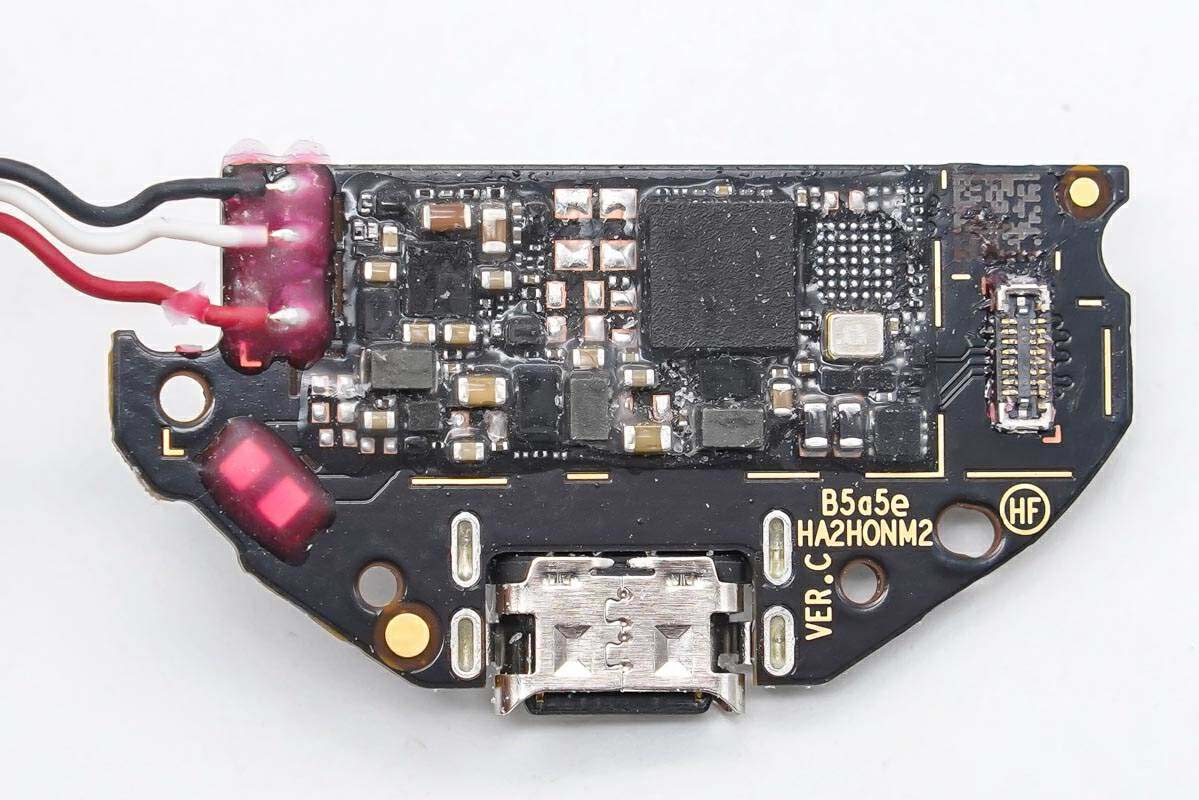
The circuit of one side of the main board at a glance.
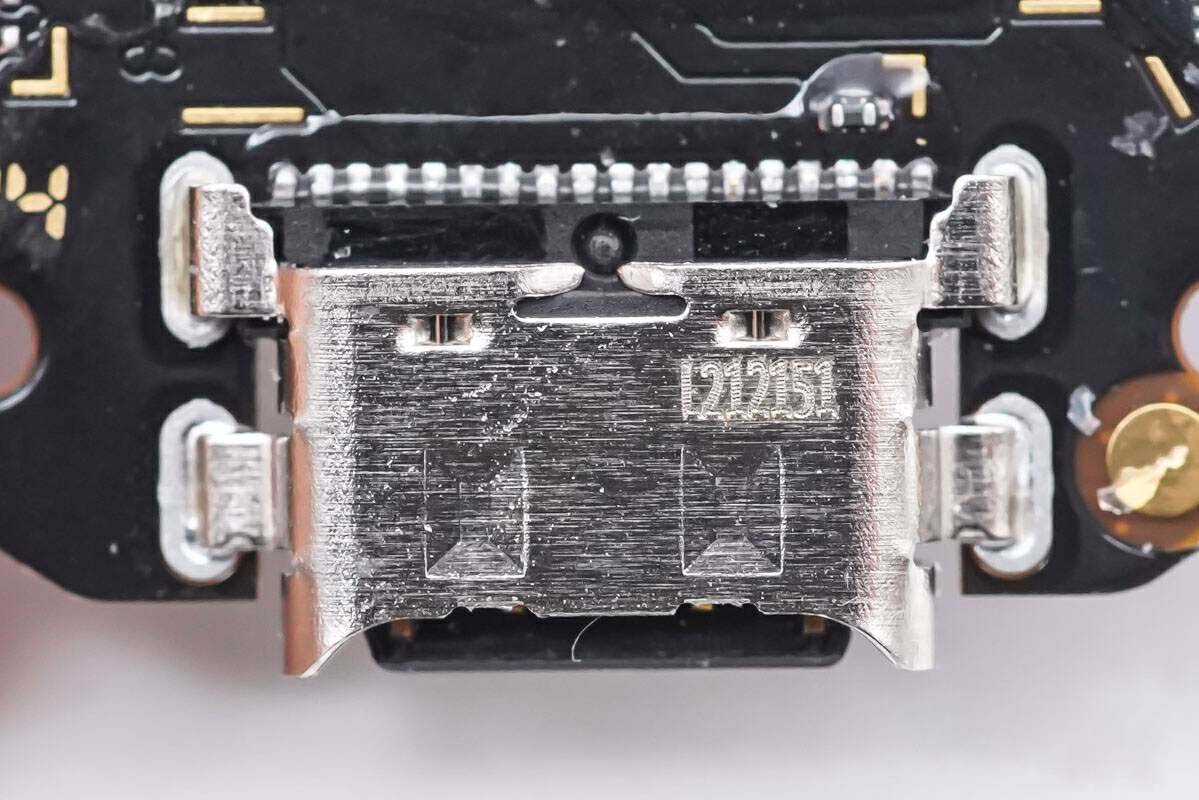
Circuitry on the other side of the main board at a glance.
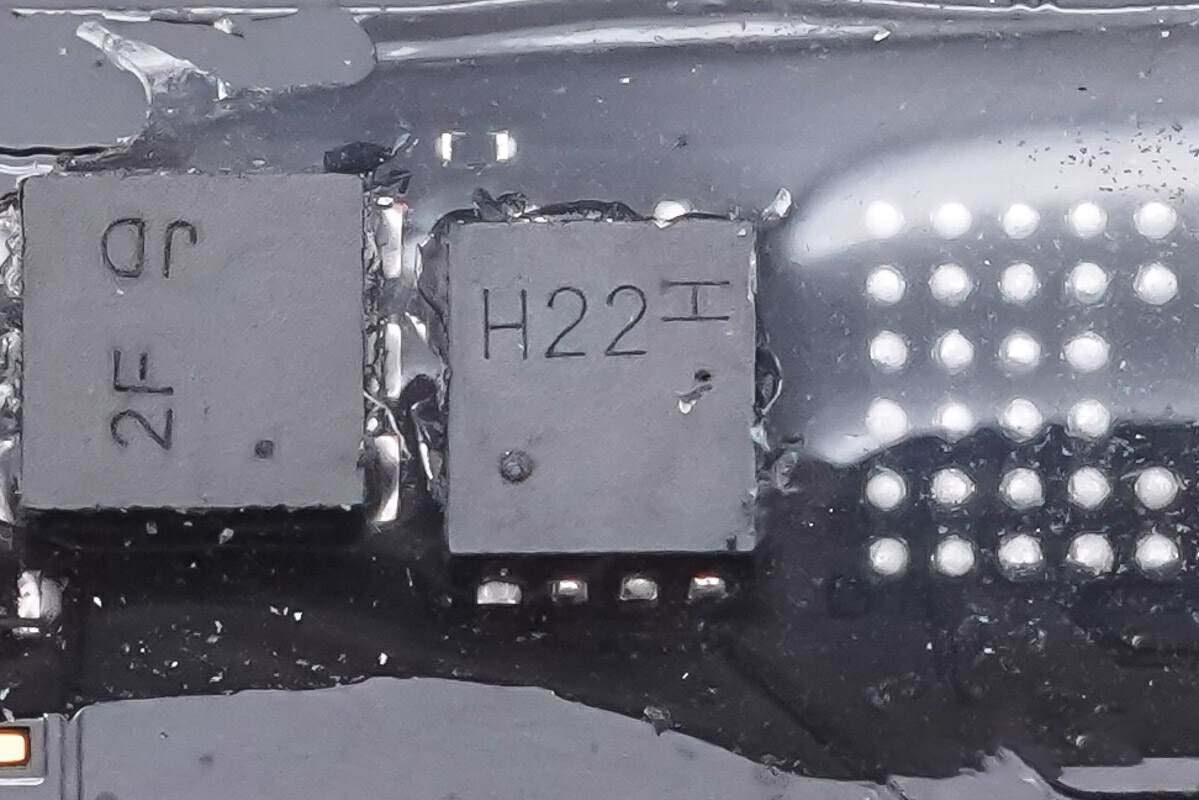
Close up of Type-C charging female sockets, sunken board soldering to reduce the thickness of the motherboard.
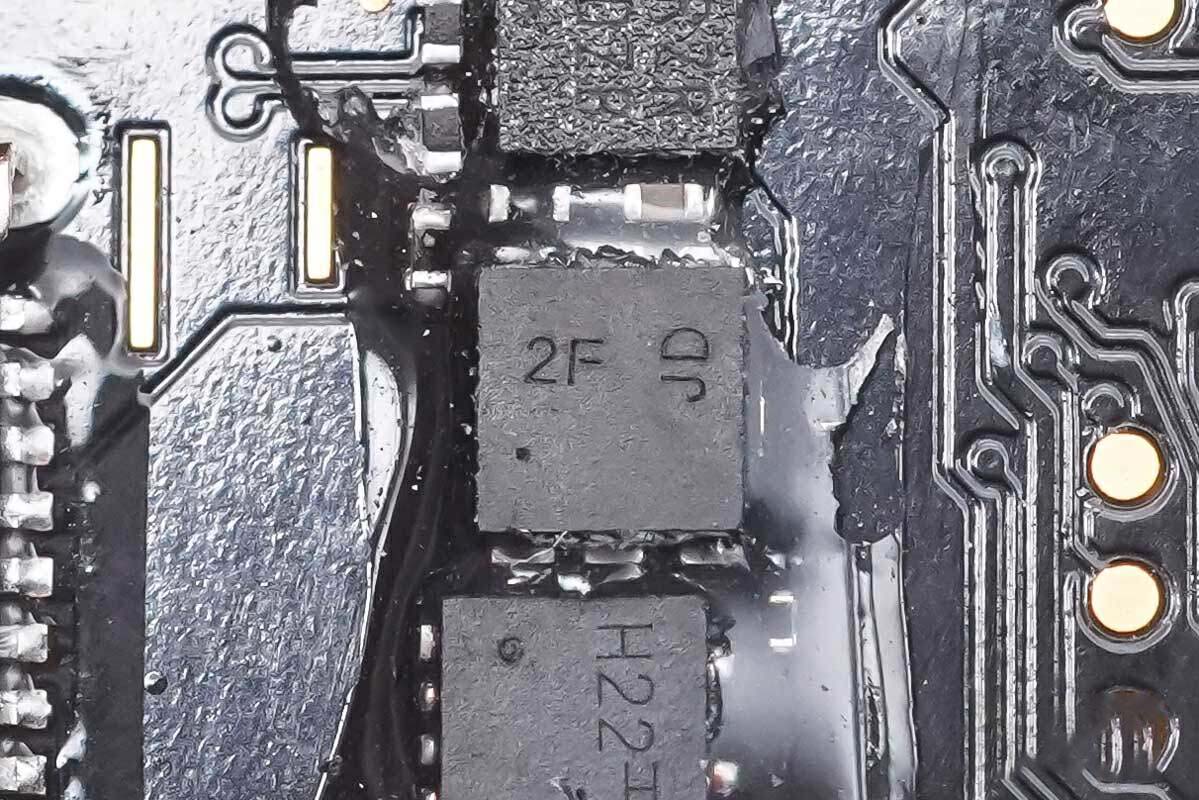
Screen printing H22 H IC.
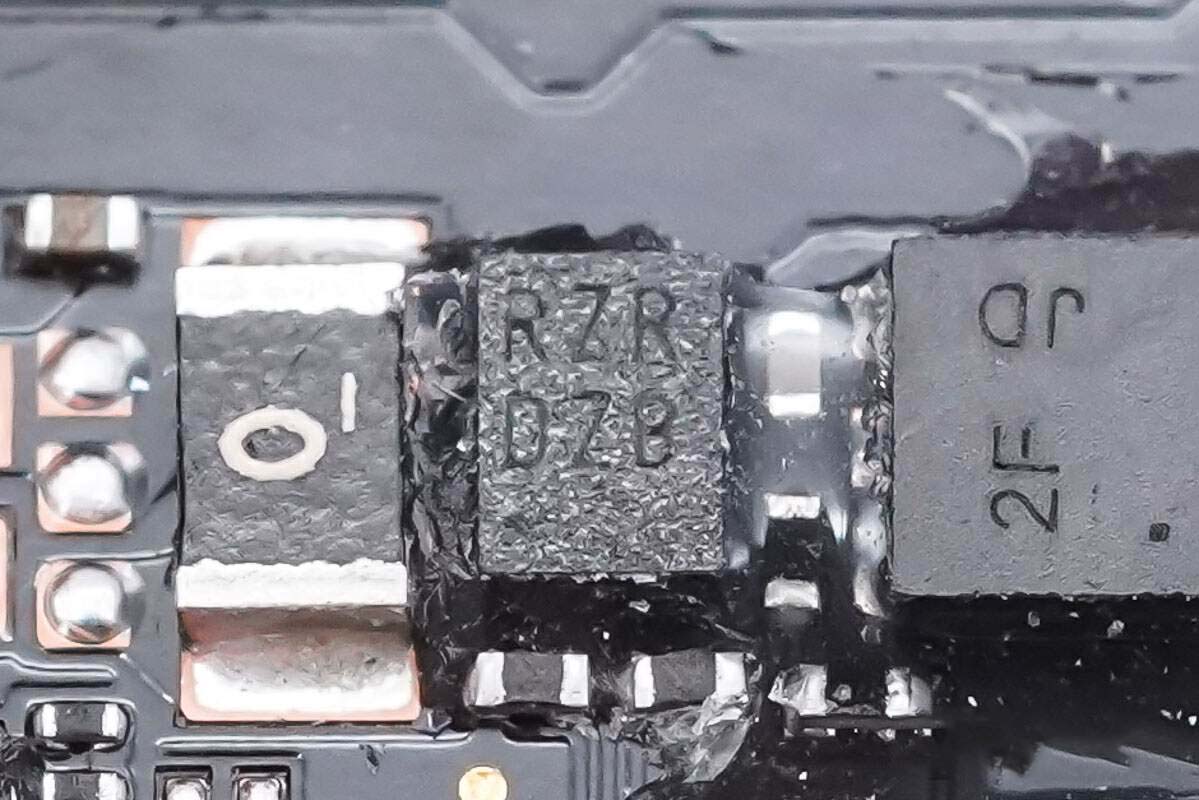
Screen printing 2F JD IC.
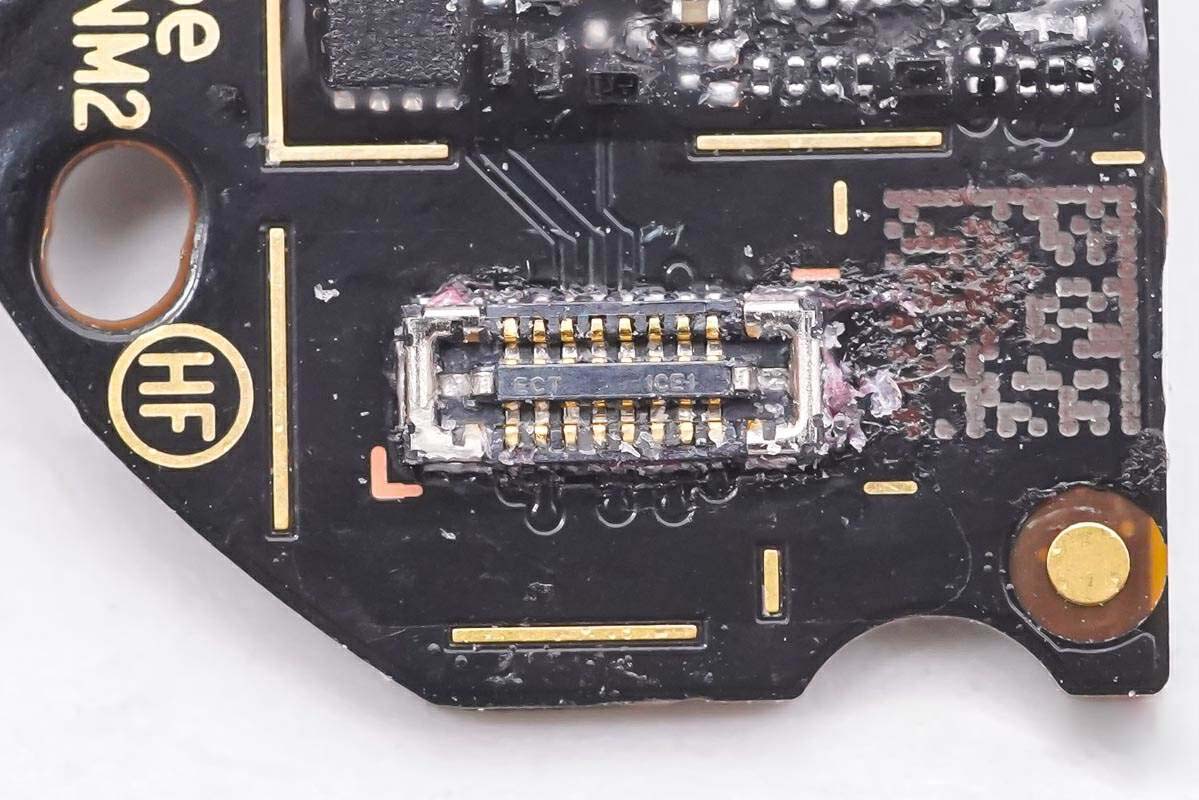
Screen printing RZR DZB IC.
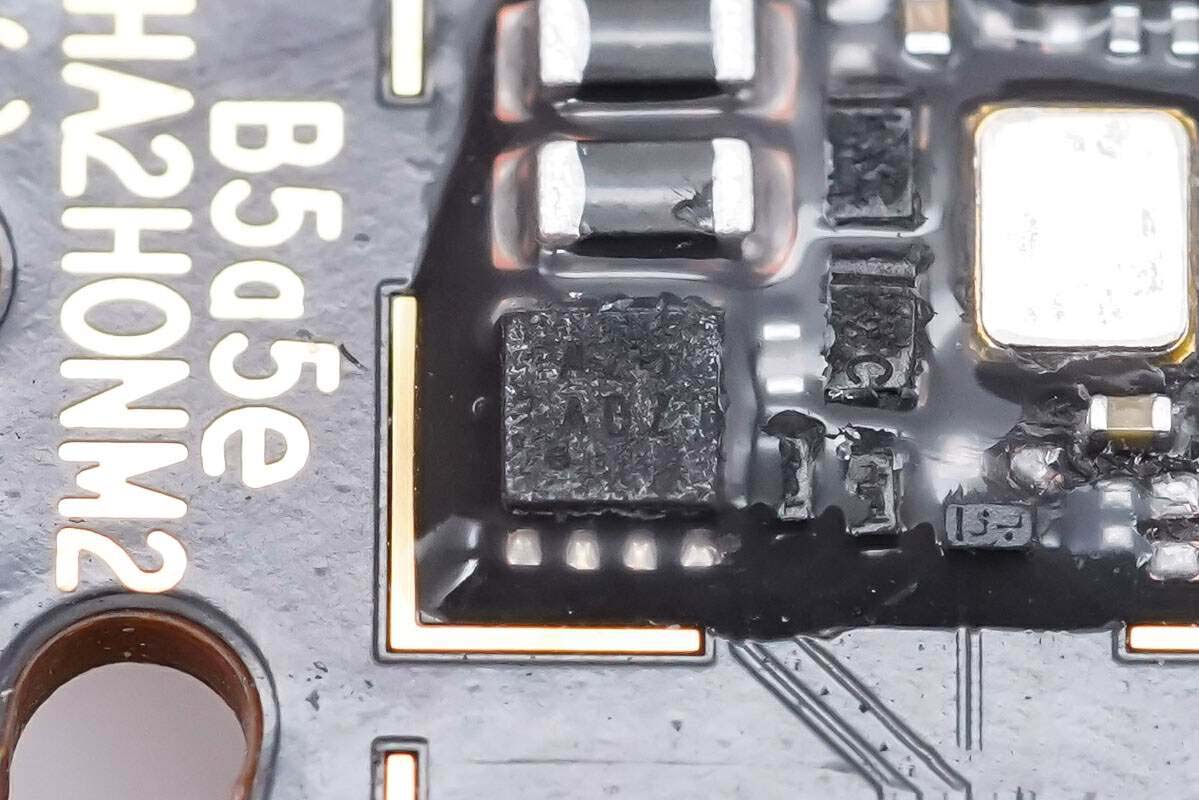
Close up of BTB connector female header for connecting to the cable.
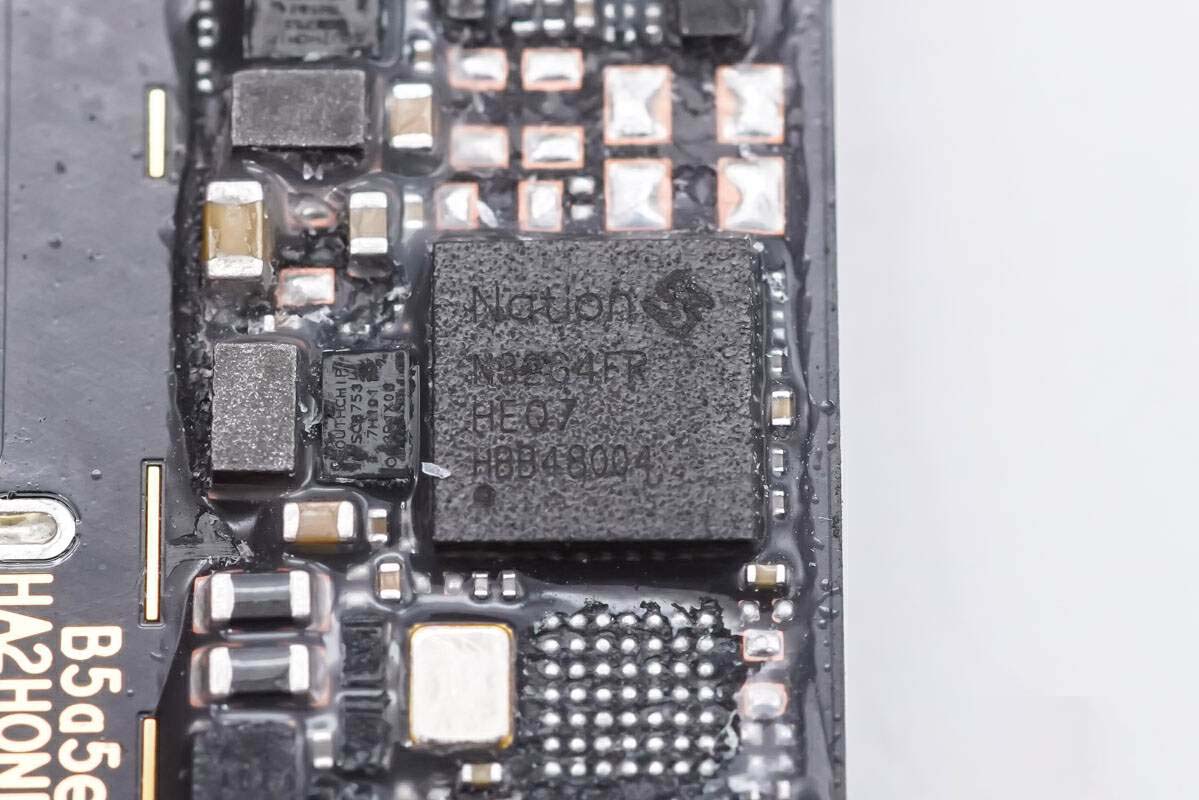
Silkscreen A25 IC.
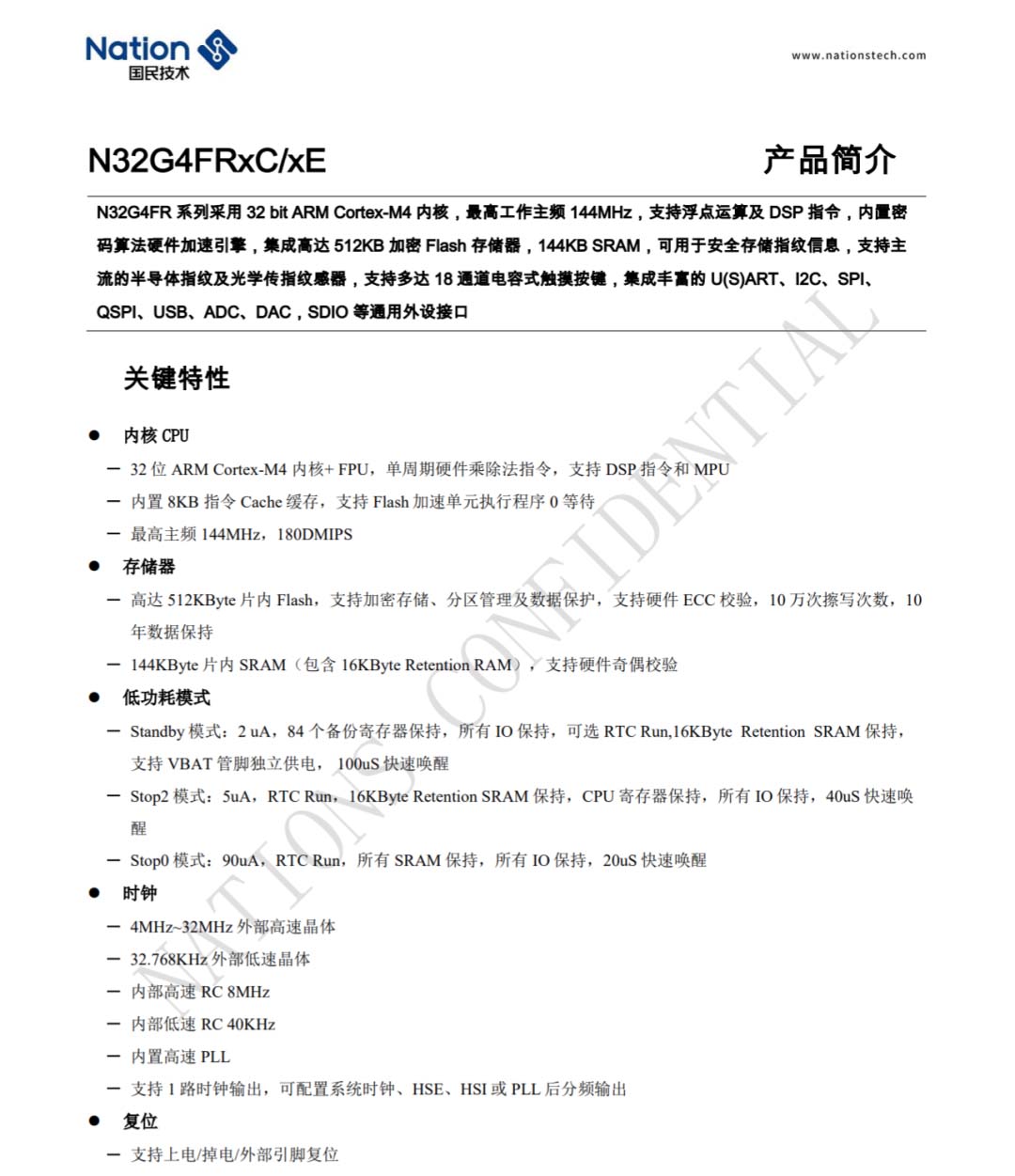
Nationz Technologies N32G4FR MCU microcontroller, N32G4FR series adopts 32 bit ARM Cortex-M4 core, maximum operating main frequency 144MHz, supports floating point operation and DSP instructions, built-in hardware acceleration engine for cryptographic algorithm, integrated up to 512KB encrypted Flash memory, 144KB SRAM for secure Store fingerprint information, support mainstream semiconductor fingerprint and optical fingerprint sensor, support up to 18 channels of capacitive touch keys, integrated rich U (S) ART, I2C, SPI, QSPI, USB, ADC, DAC, SDIO and other general peripheral interfaces.
According to vopmart.com disassembly learned that Huawei, fierce horse, vivo, glory, iQOO and other well-known manufacturers have used nations national technology products.
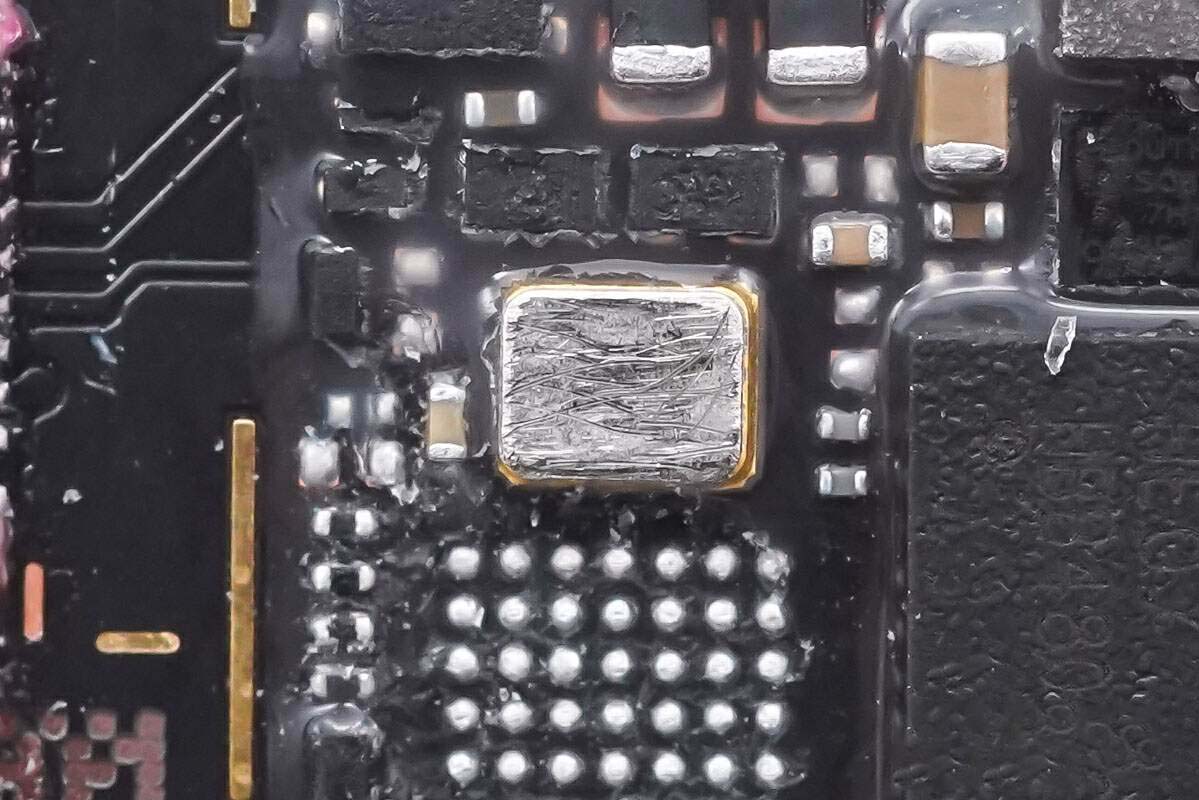
Nations National Technology N32G4FR series detail diagram.
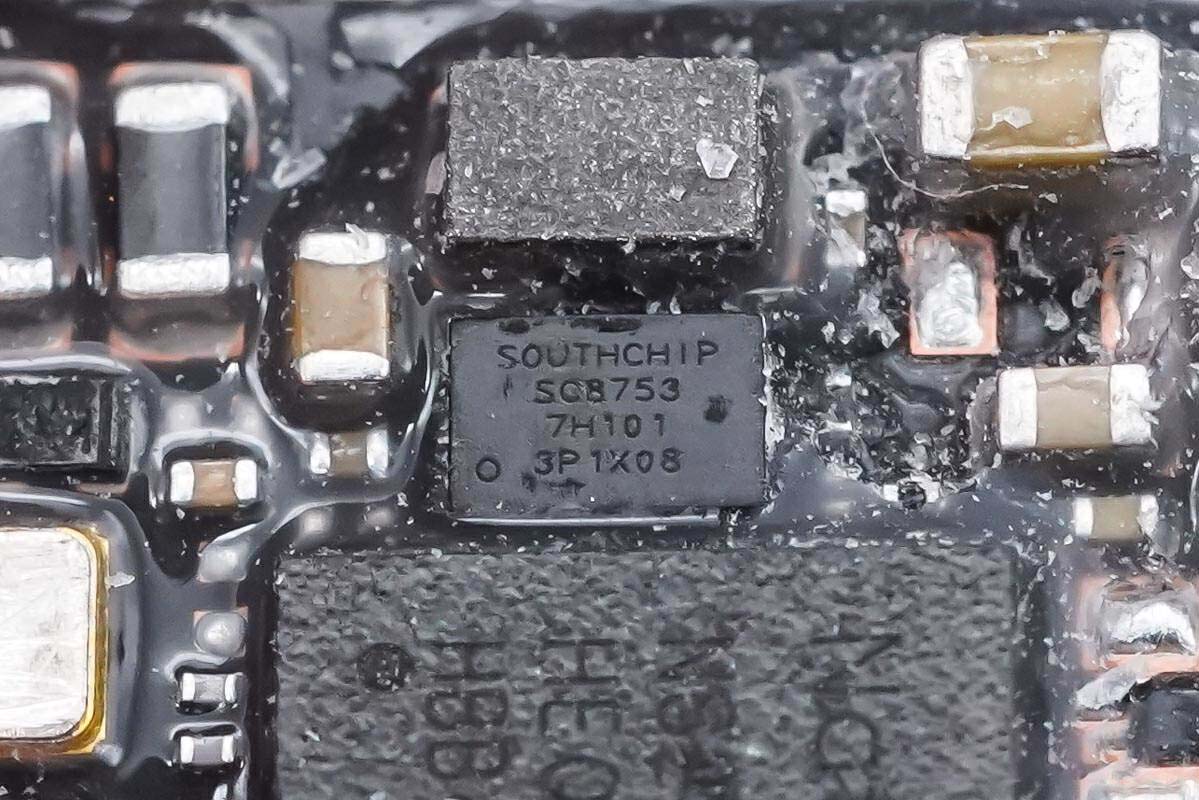
Close up of the crystal that provides clock for MCU.

Southchip Southchip SC8753 is a high-efficiency direct charging chip designed for TWS headphone charging bin. The device is paired with the Southchip SC7289 linear charging chip (headphone side) for charging or bi-directional UART communication via a 2 contact connection.
The SC8753 features a Buck Boost boost topology with integrated MOSFETs, low quiescent current and light load PFM mode. It provides excellent power efficiency, current and voltage regulation regardless of charging voltage above, below or equal to the input voltage. It can support an input voltage range of 2.7V to 5.5V and an output voltage range of 3.0V to 5.2V. The SC8753 supports CC/CV loops where the charging parameters are controlled by the SC7289 in the headset during the trickle charge and CV charge phases. During the CC charging phase, the SC7289 is fully on and the SC8753 controls the charging current in constant current mode and supports continuous charging current up to 750mA with ultra-low heat dissipation and high charging safety. In communication mode, charging is suspended and the 2-wire power connection is switched to UART data connection. With bi-directional UART communication via the power line, the charging case and headset can exchange data and request fast charging.
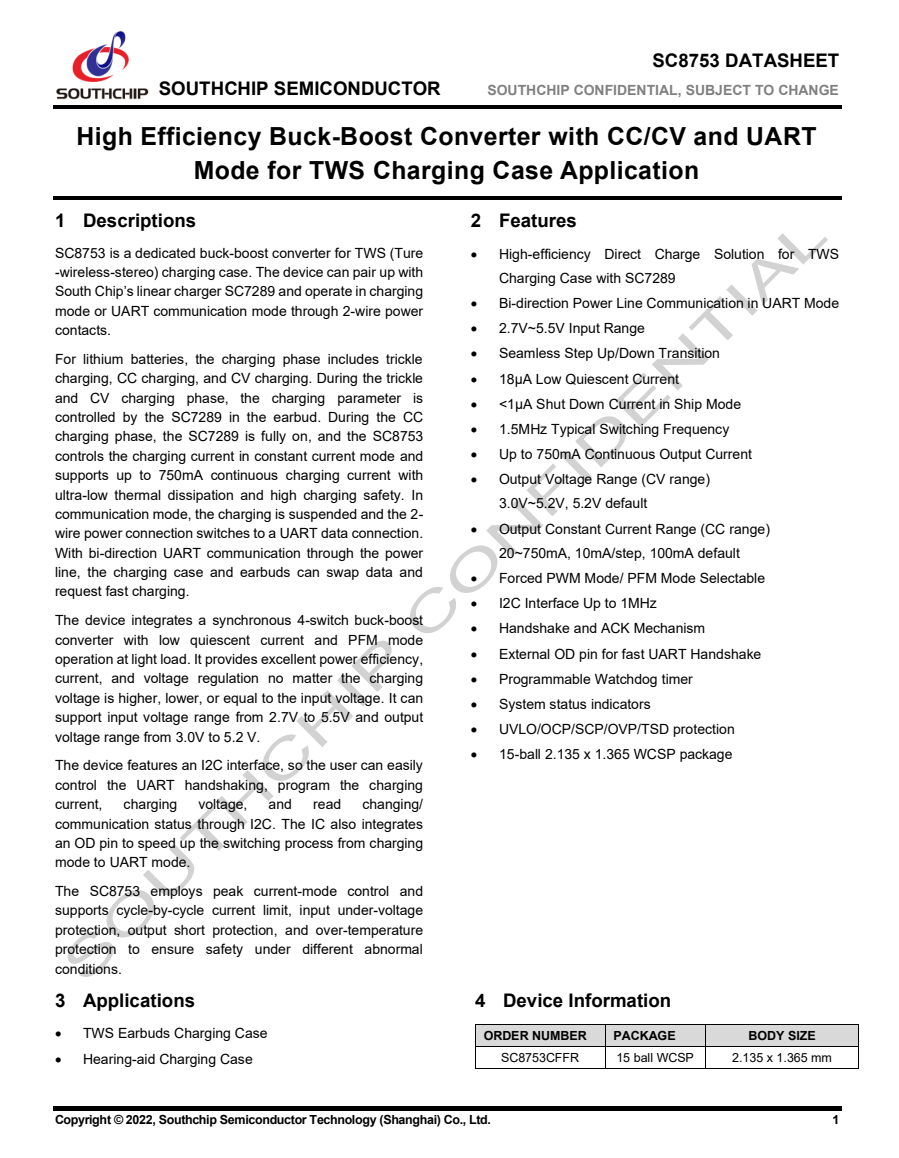
SC8753 typical application block diagram
The charging box has a built-in boost charging circuit, the output voltage can be adjusted following the headset battery voltage to achieve straight-through charging of the headset. The voltage conversion efficiency is improved at the charging box end, and the loss of linear charging at the headphone end is also eliminated to avoid headphone charging heat and improve the overall headphone endurance.
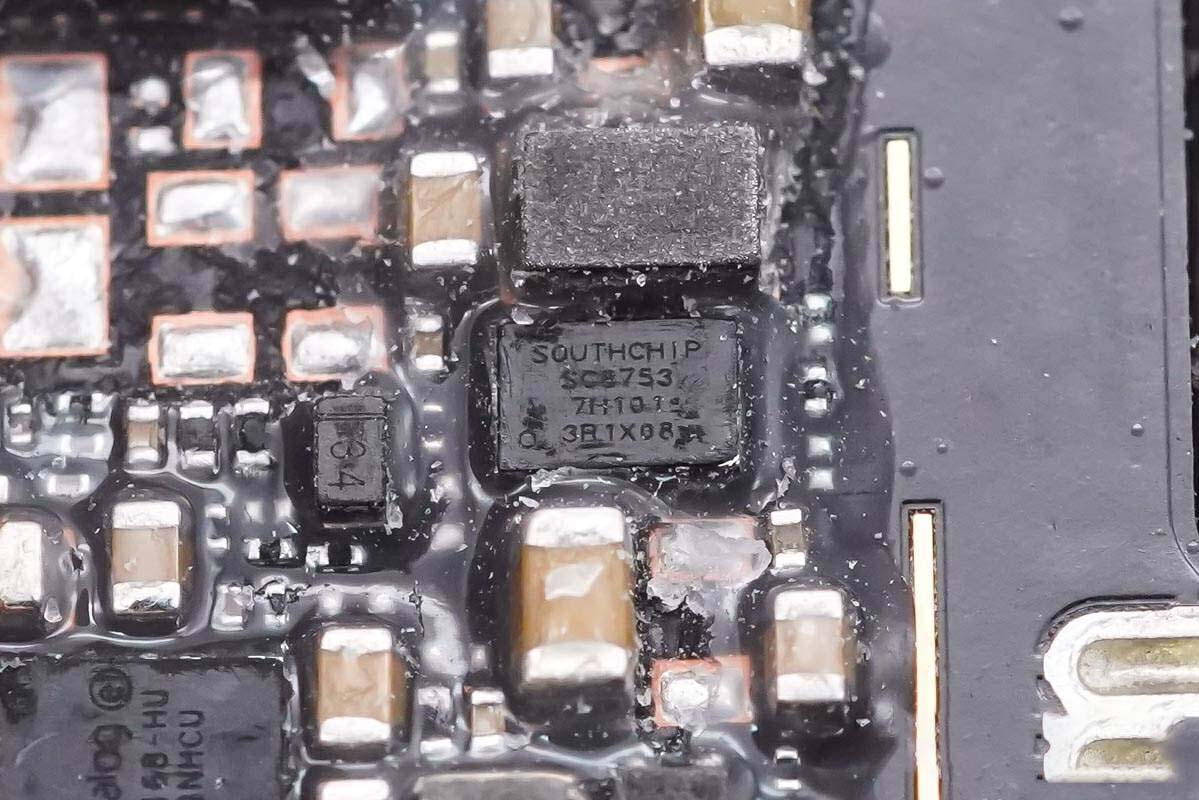
Southchip Southchip SC8753 detail diagram.
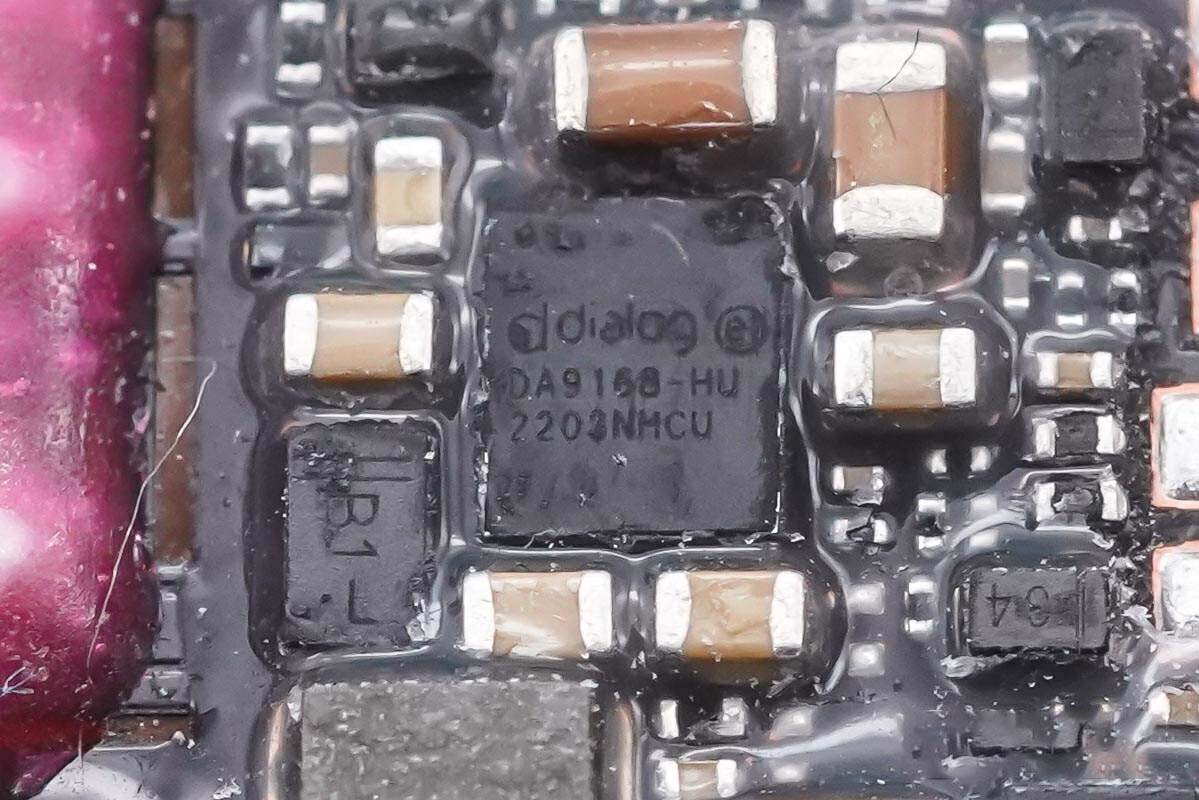
Another Southchip Southchip SC8753 boost chip, two chips for two headphones charging respectively.
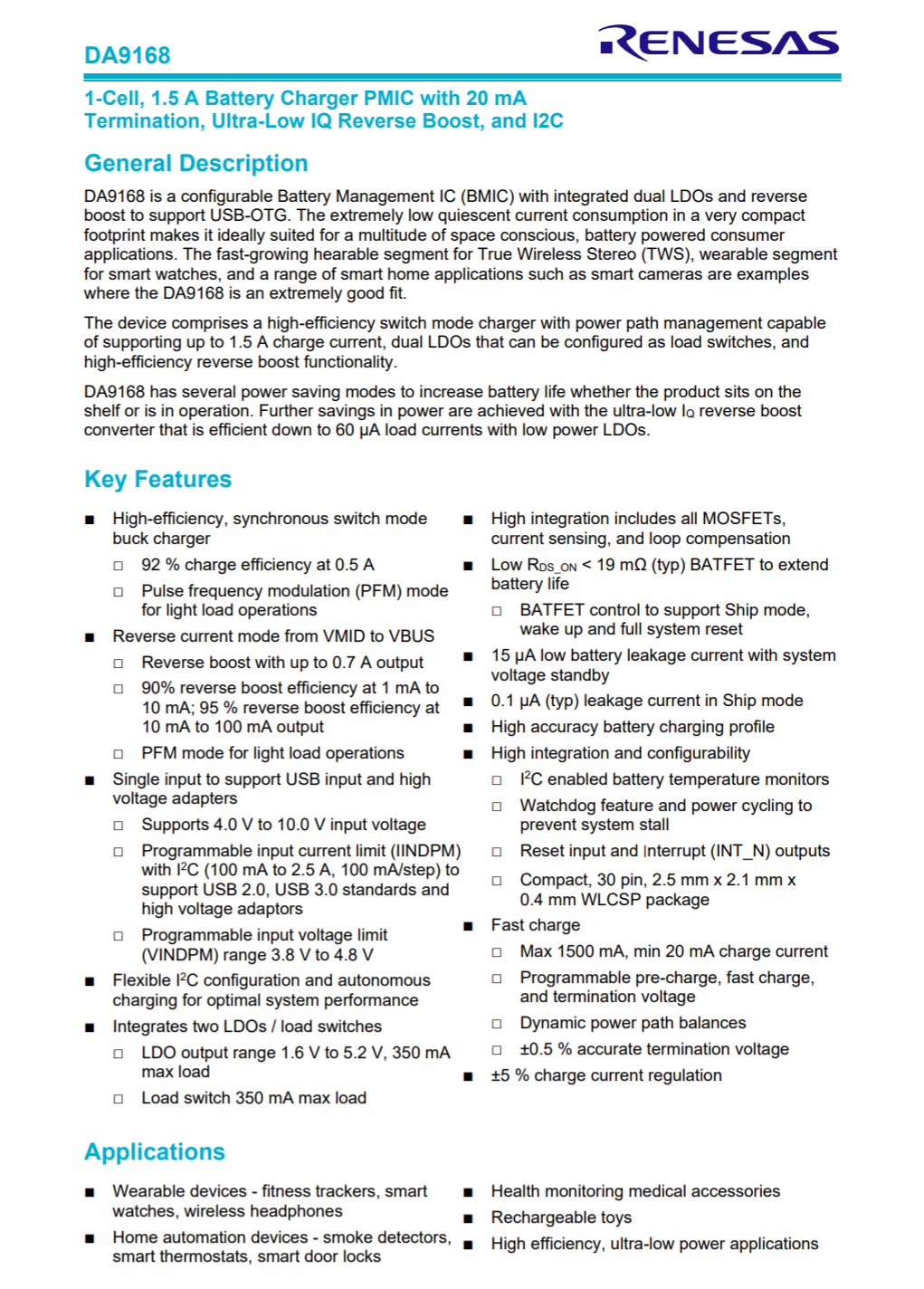
Renesas DA9168 battery charge management chip, with built-in dual independent LDO and reverse boost function, can support USB On-The-Go (USB-OTG) standard with extremely low quiescent current consumption and very compact footprint, making it ideal for a large number of space-conscious battery-powered consumer product applications.
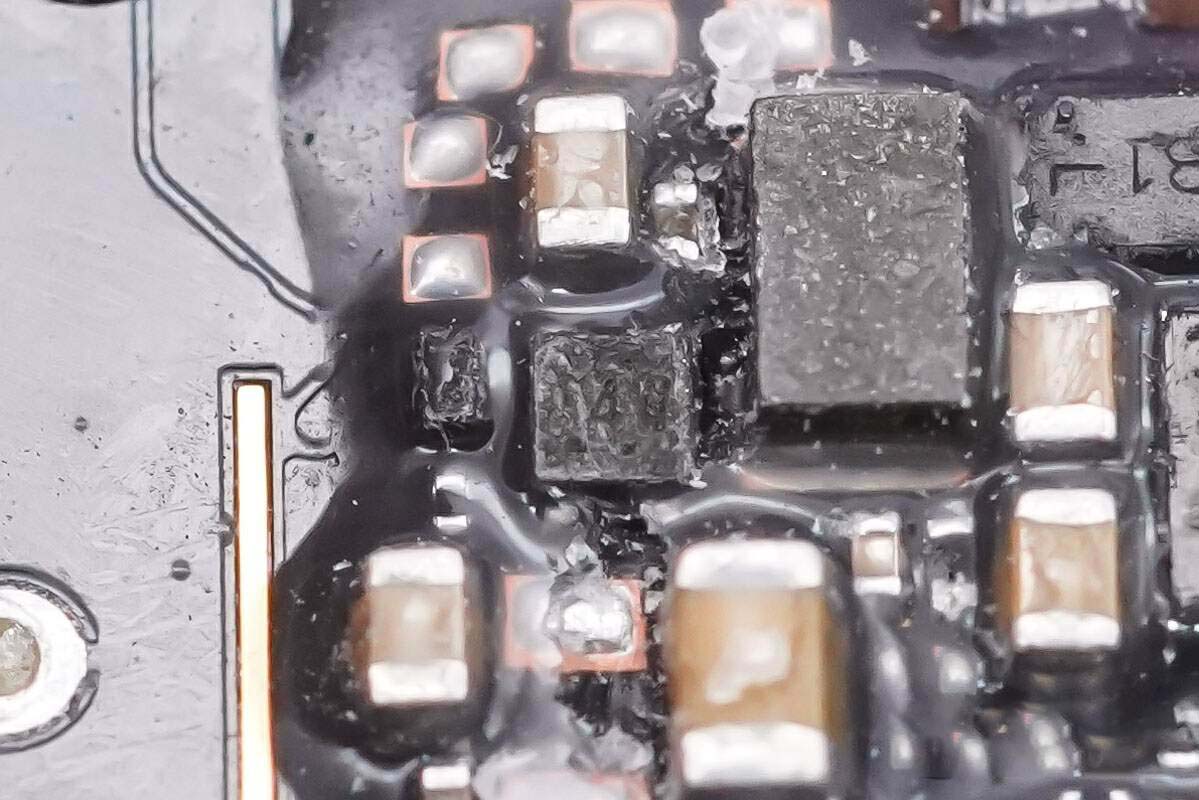
Renesas DA9168 detail diagram.
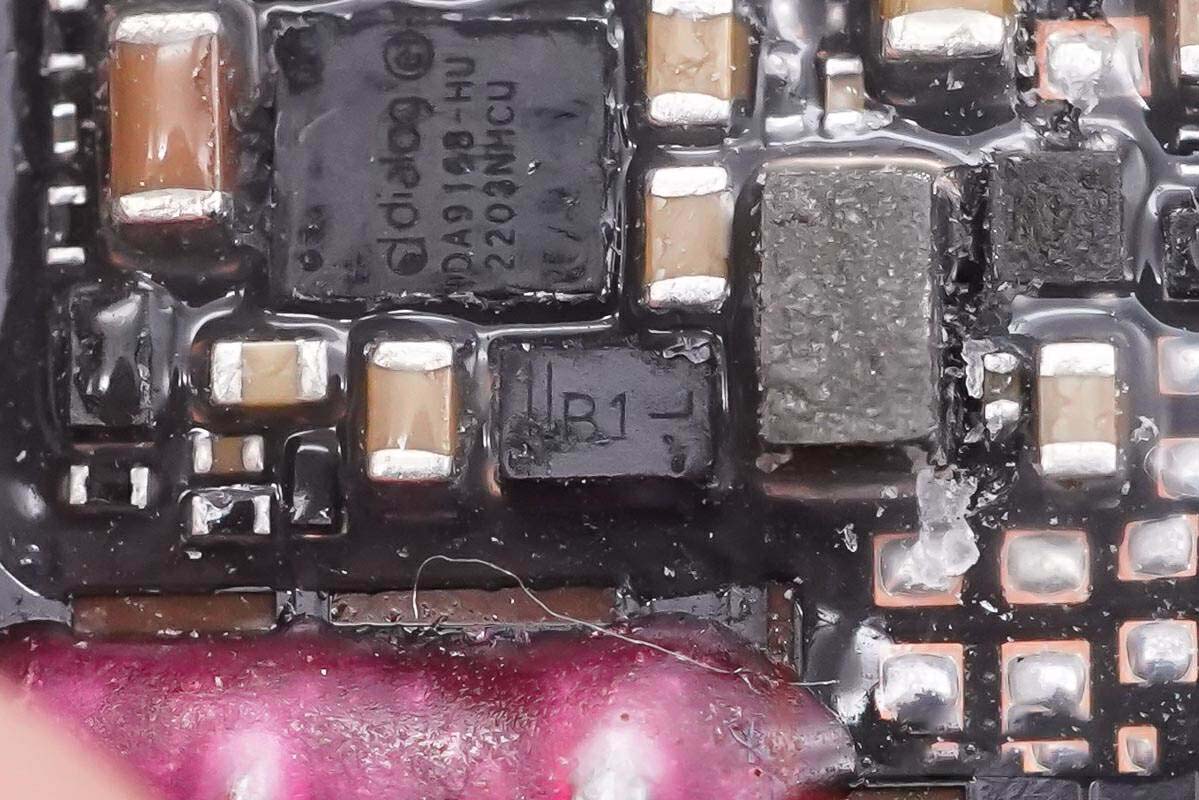
Screen-printed 4W IC.
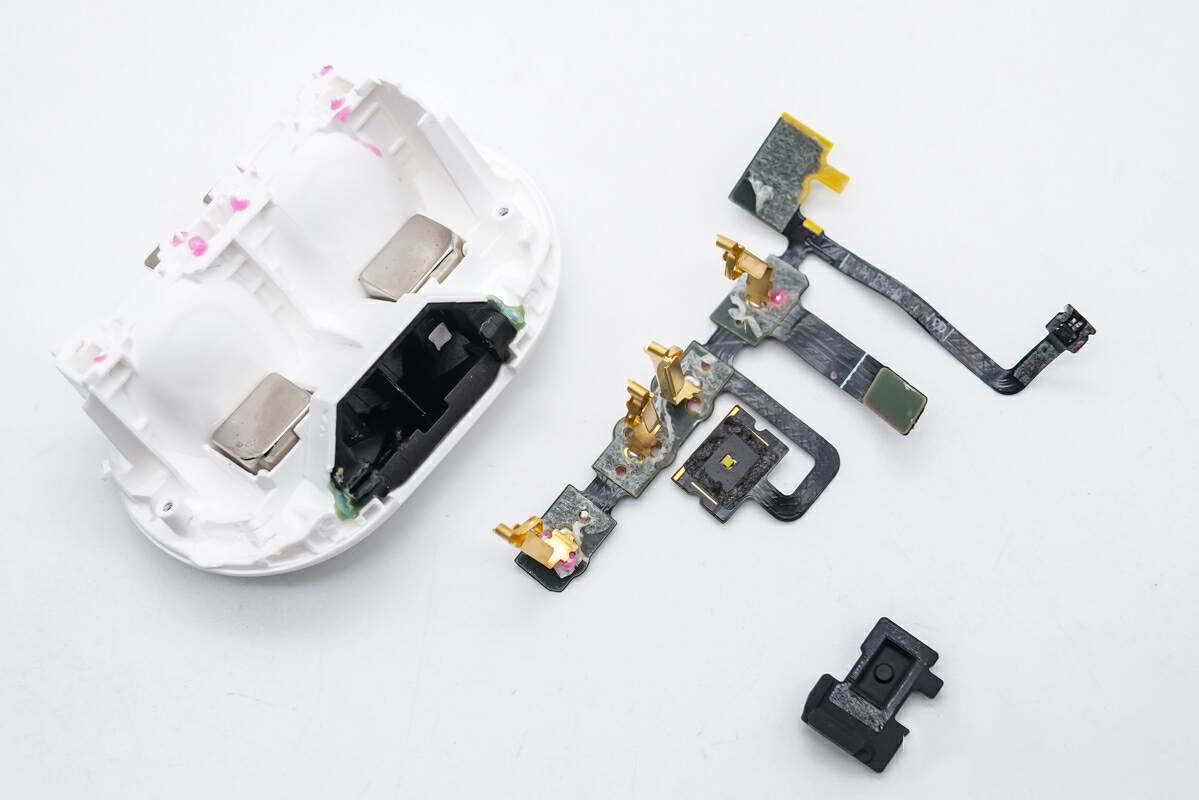
Silkscreened B1 IC.
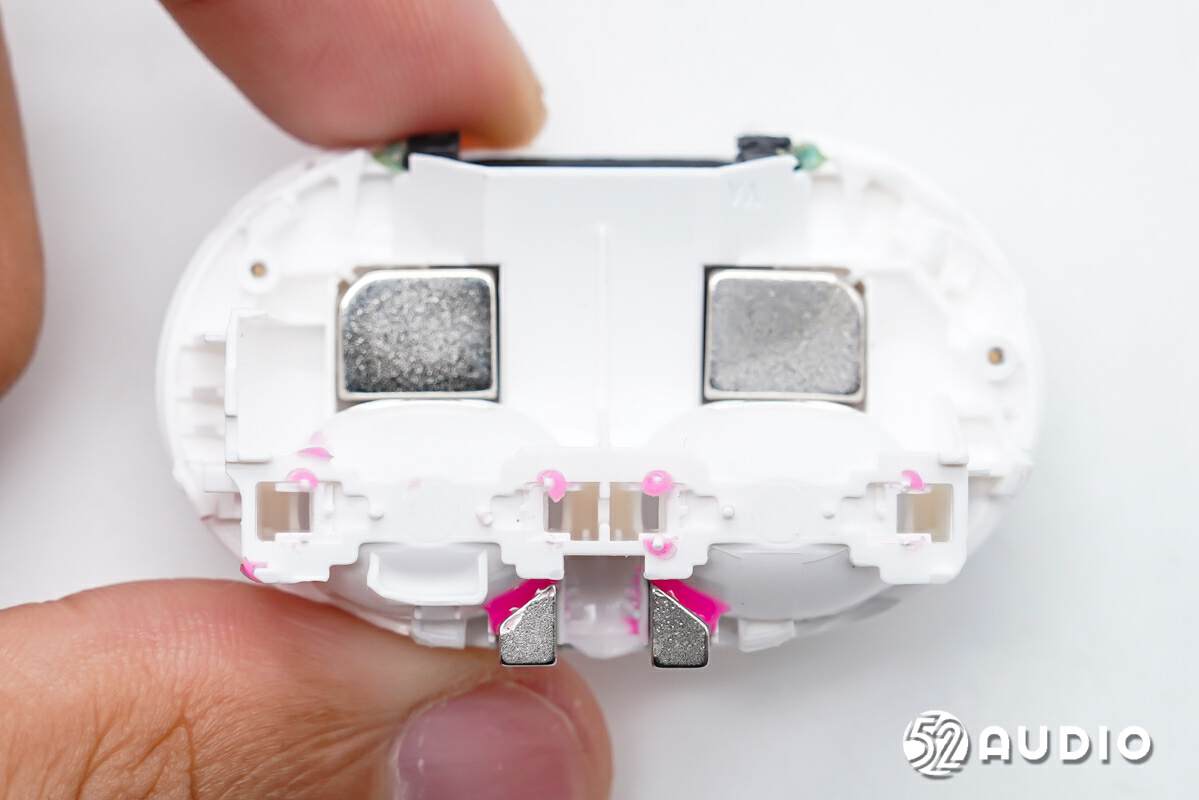
Removing the row of wires at the bottom of the cockpit.
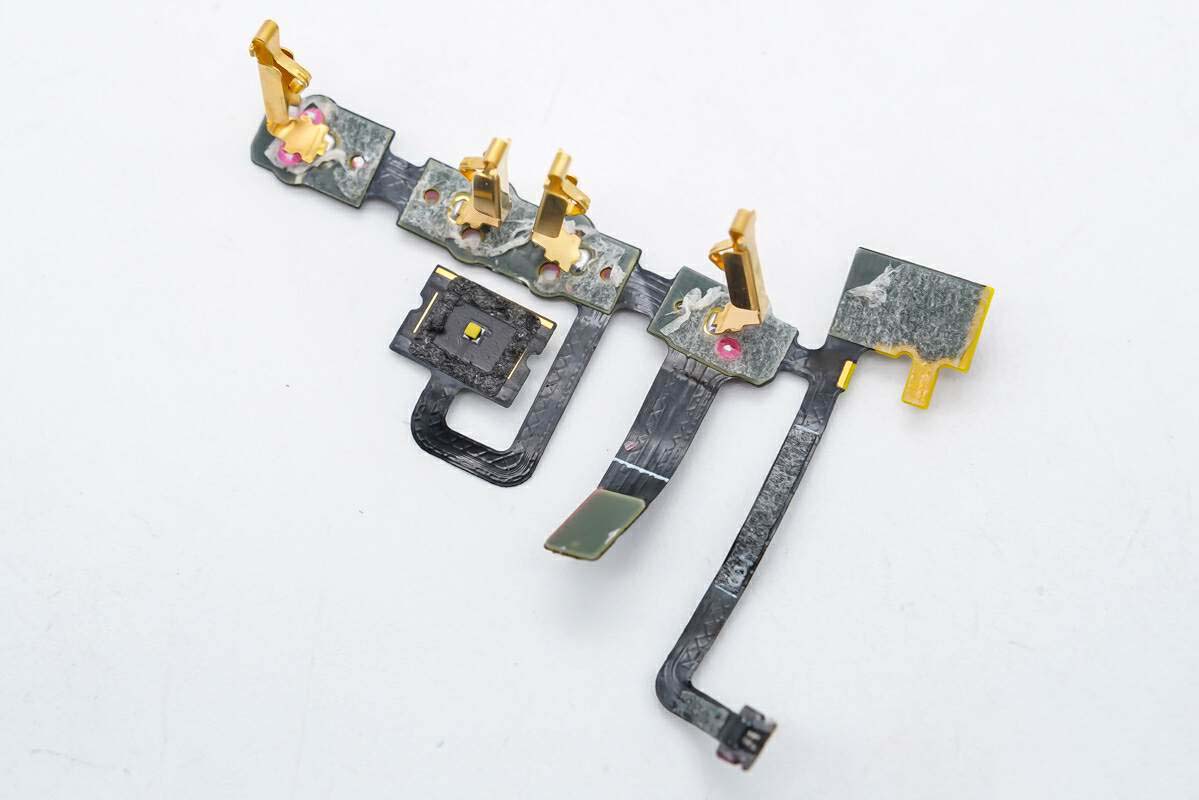
At a glance, the structure of the bottom of the cockpit is set with 4 magnets to provide stable fixation for the headphones.
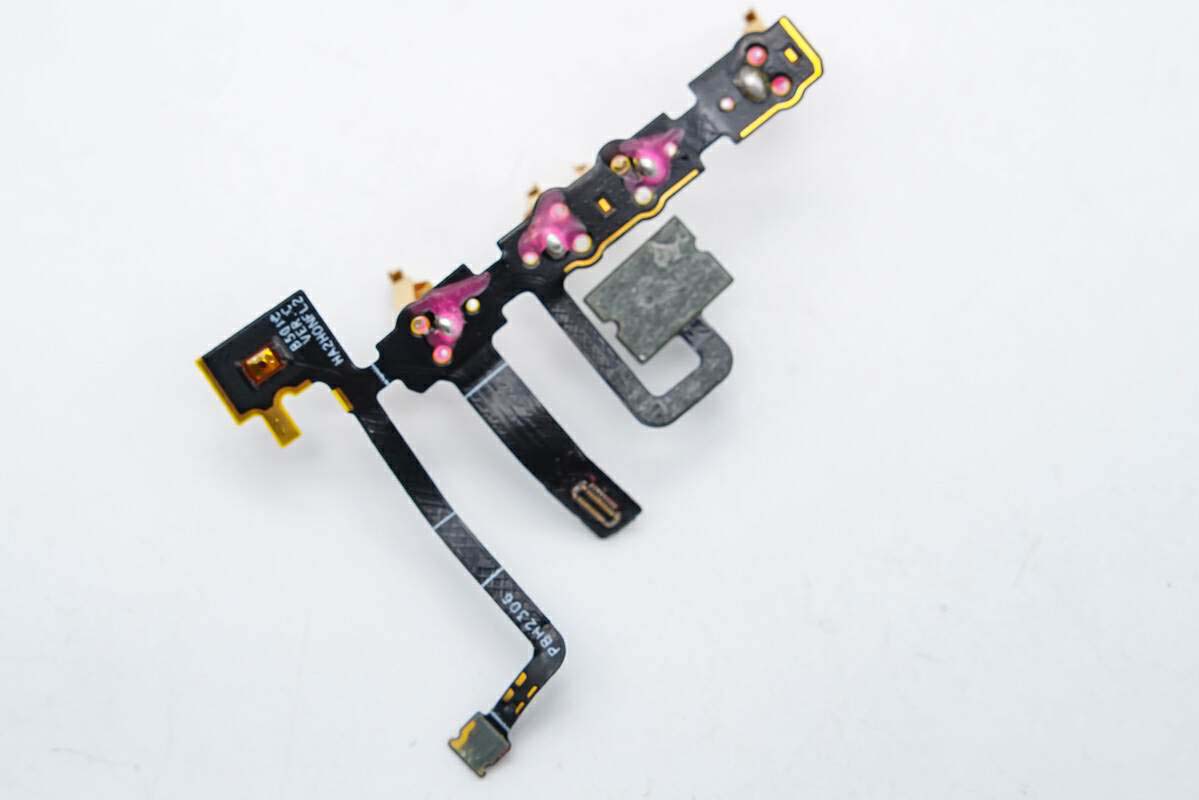
The circuit on one side of the cable.
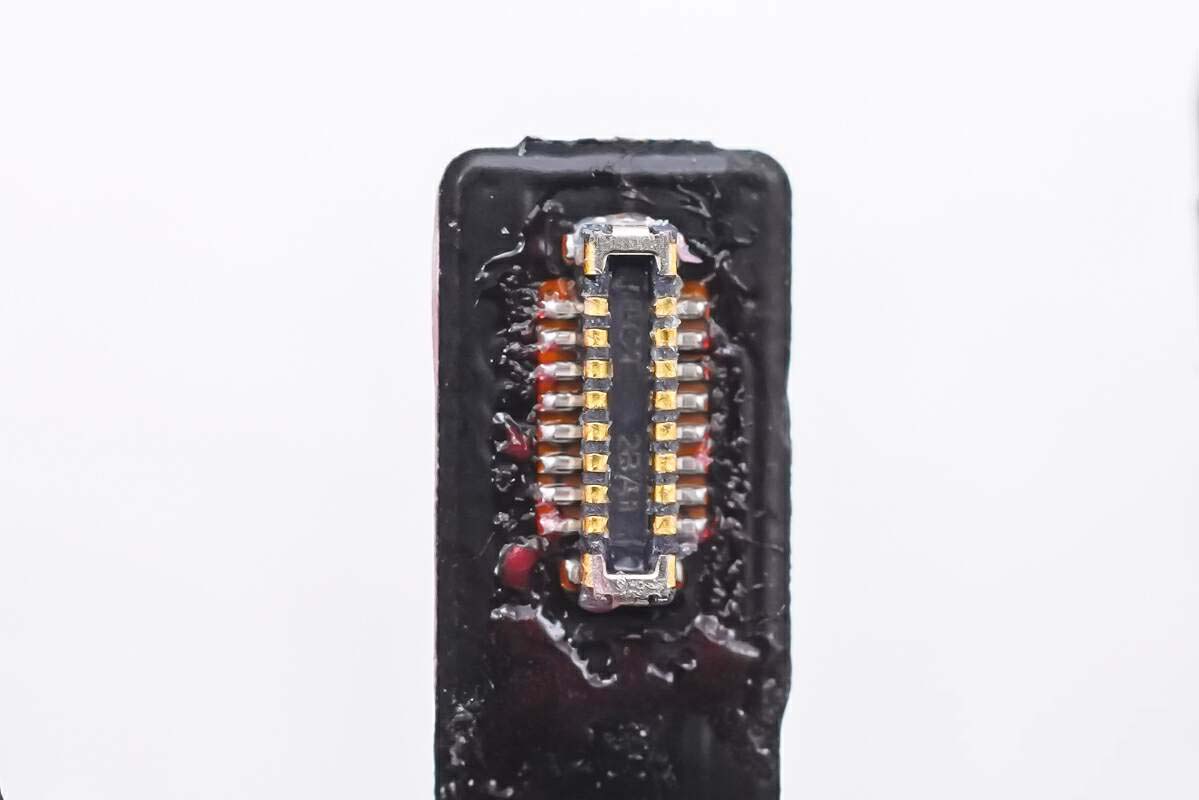
The circuit on the other side of the cable at a glance.
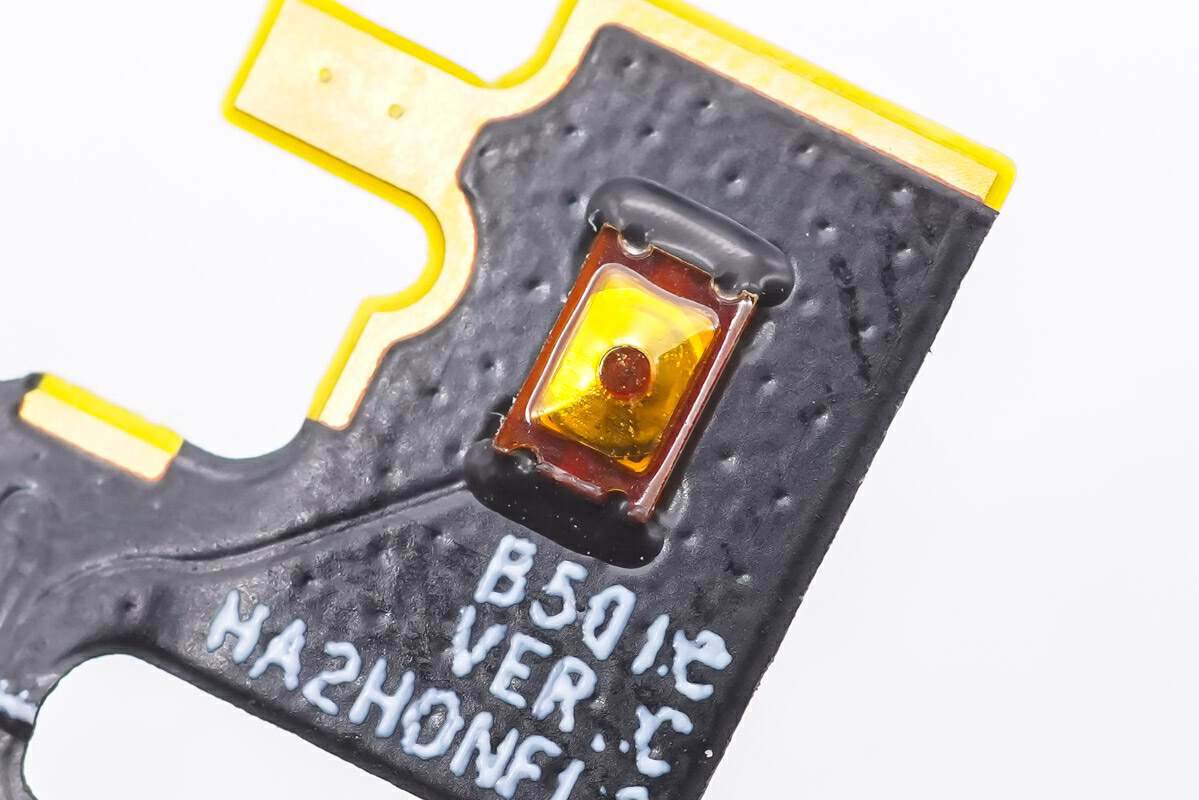
Close-up of the male BTB connector that connects the cable to the motherboard.
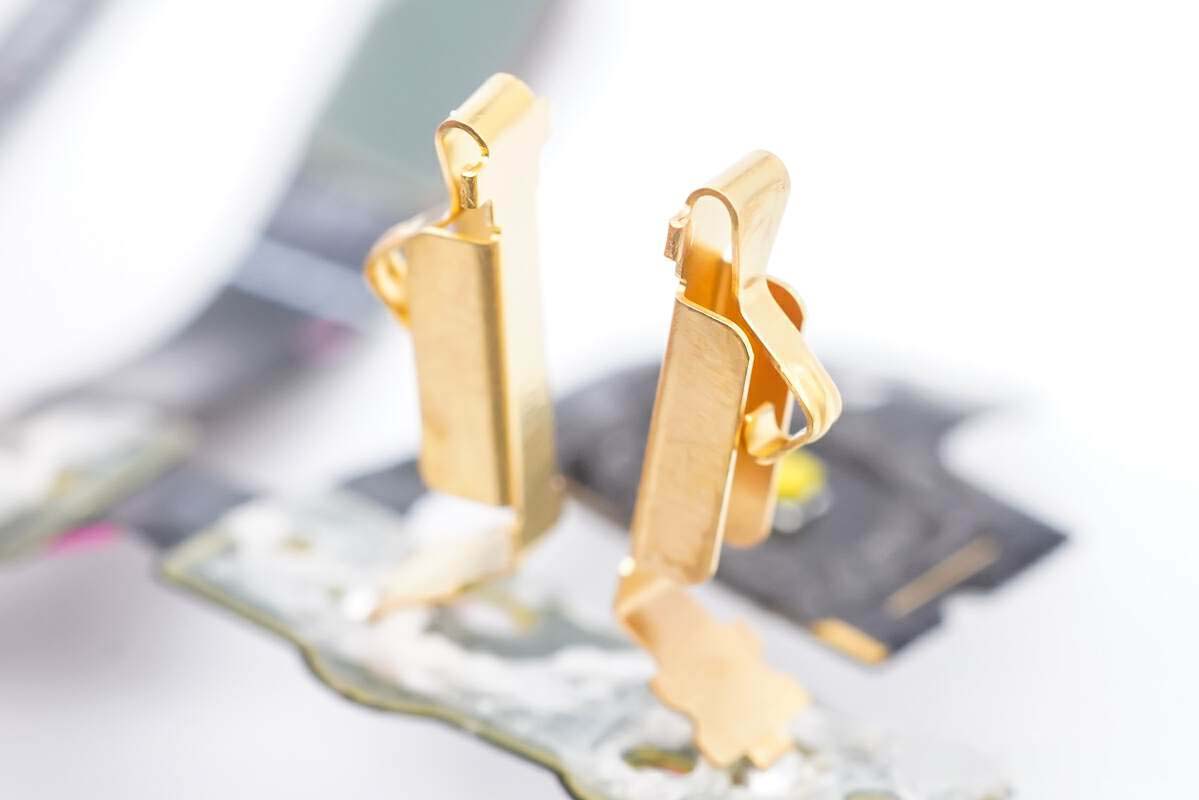
Close-up of the micro-action button for Bluetooth pairing function.
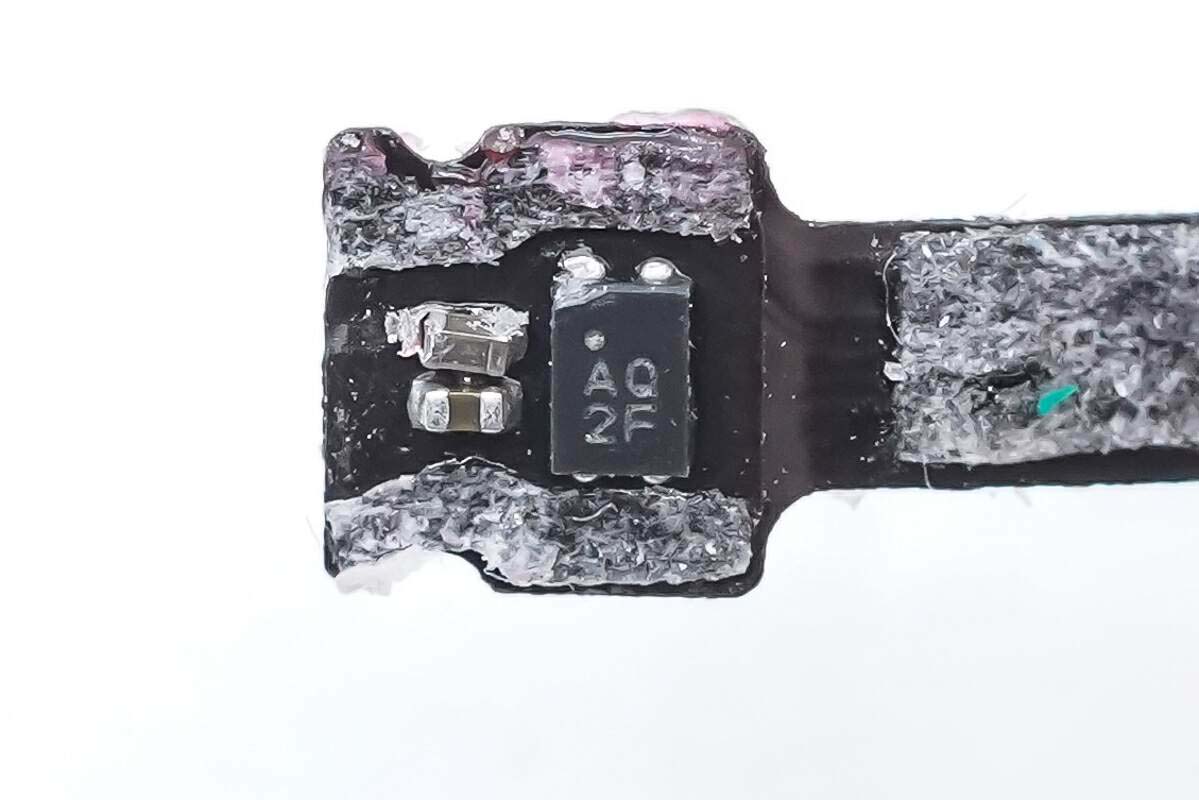
Closeup of the LED indicator for feedback on the remaining power and Bluetooth pairing status.
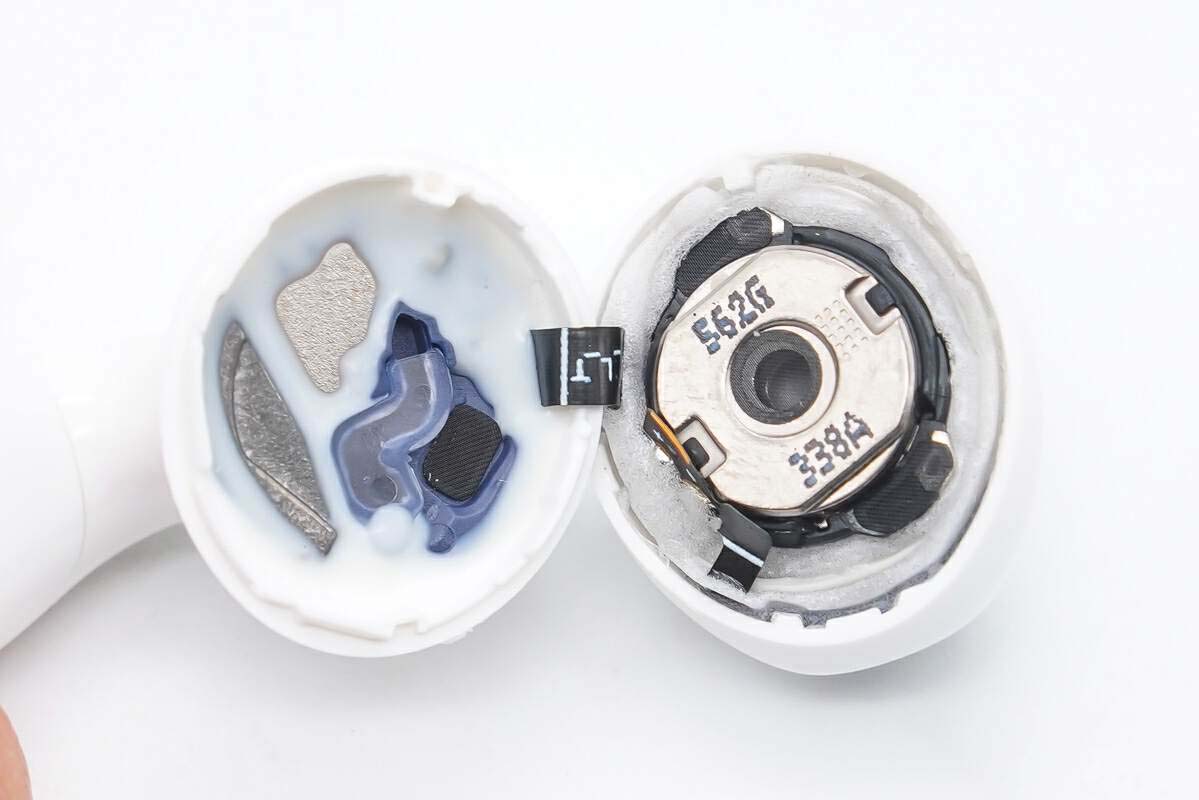
Closeup of the metal shrapnel for charging the headset.
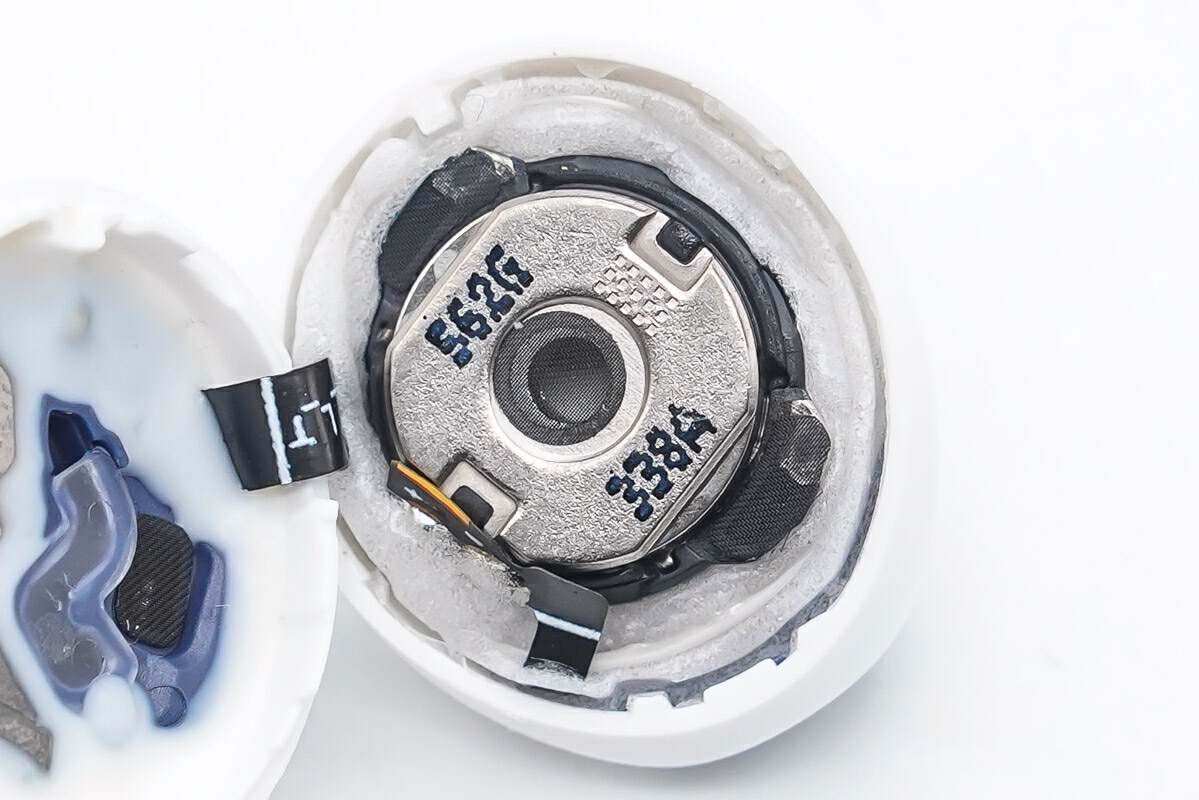
Close up of the Hall element with AQ 2D silkscreen, used to sense the magnetic field change when the charging case is on/off, and then notify the charging case MCU and the headset to pair or disconnect from the connected device.
Headset disassembly
To enter the disassembly part of the headset, first open the headset head along the molded line.
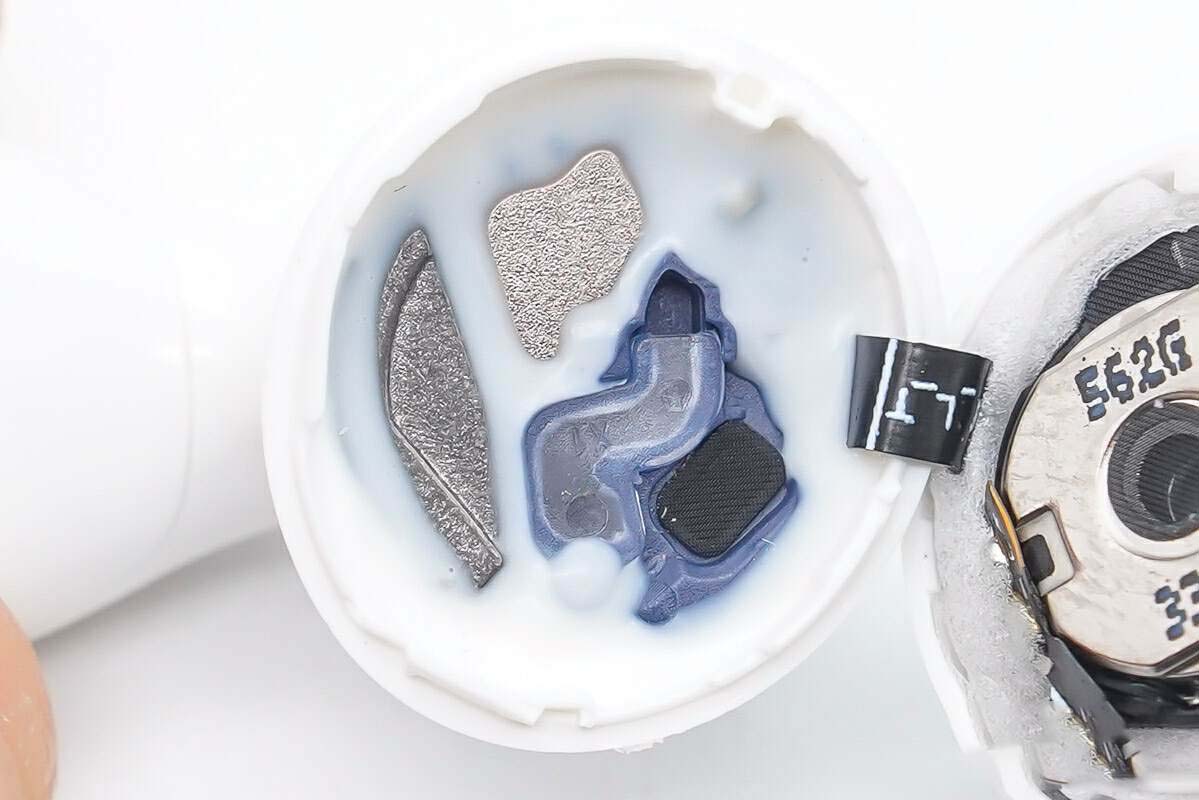
The front cavity internal speaker unit structure at a glance, with a ring bracket fixed.
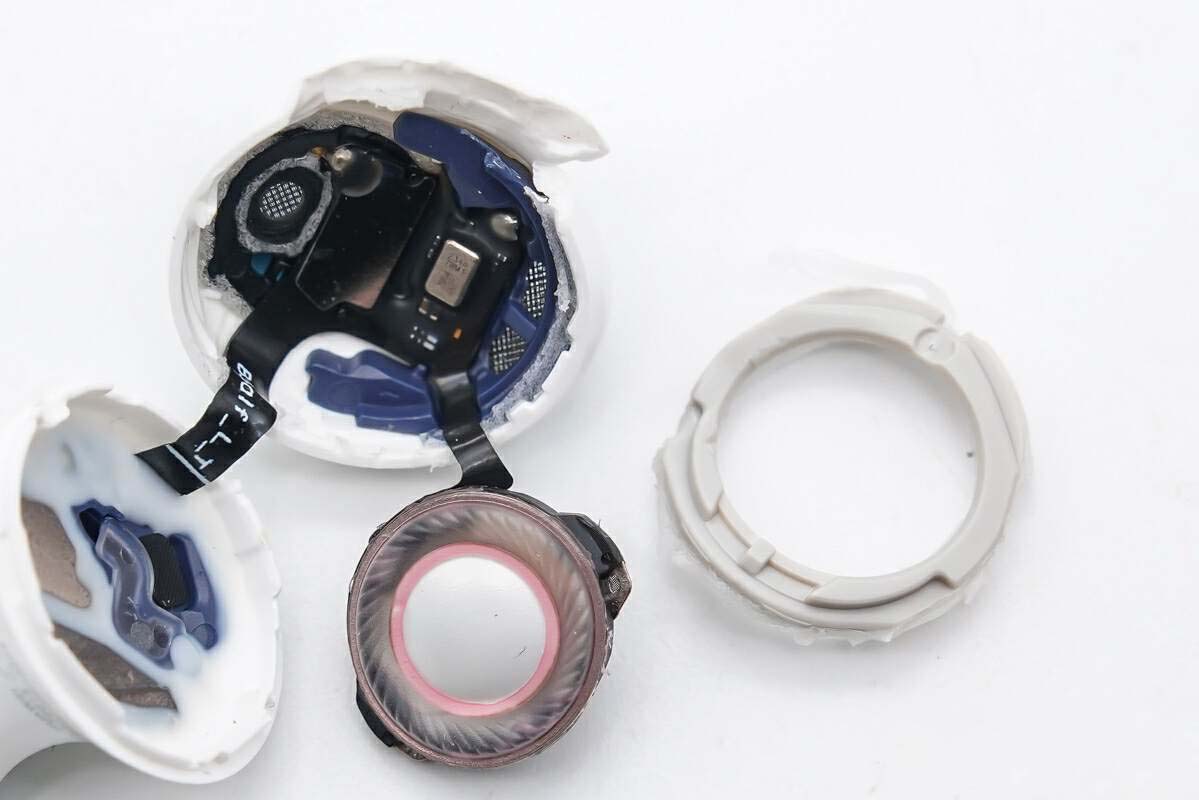
The internal structure of the rear cavity at a glance, sealed by a large amount of glue. Blue plastic parts are bass enhancement conduit structure, set with inverted tube, connected to the external pressure relief hole, used to enhance the low frequency effect.
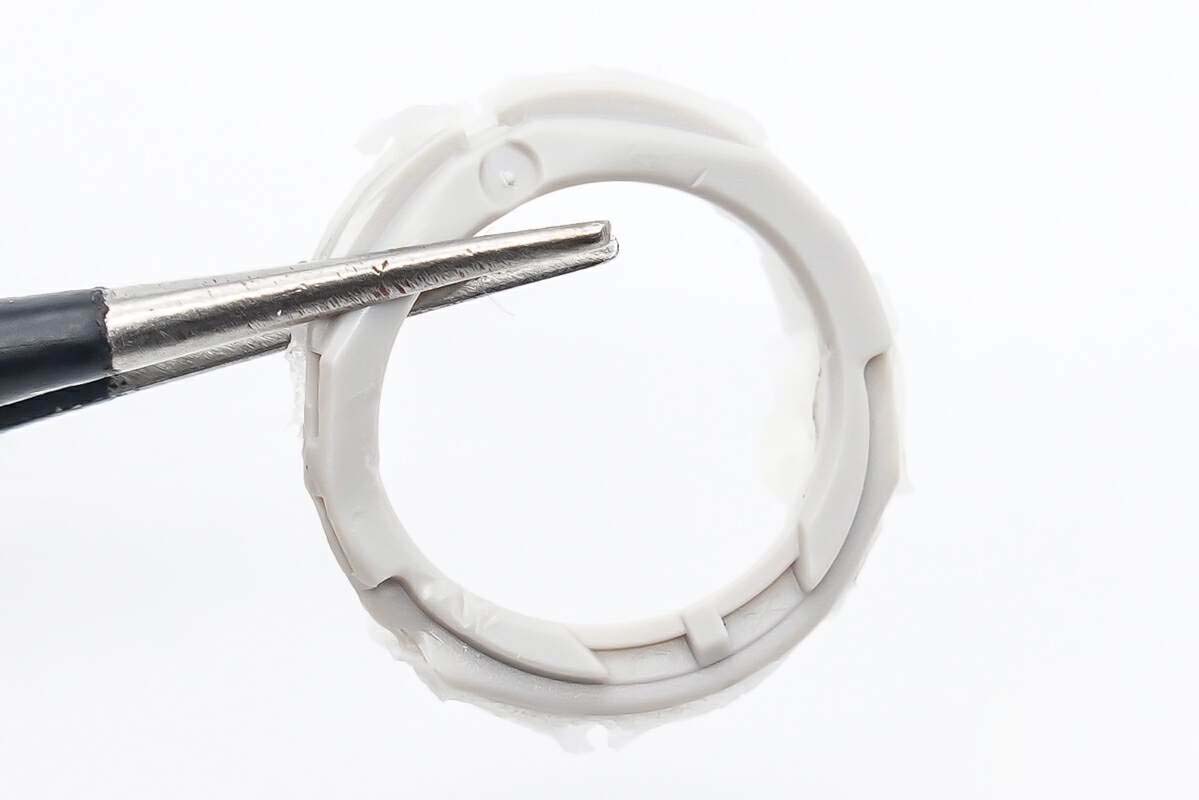
Remove the speaker unit.
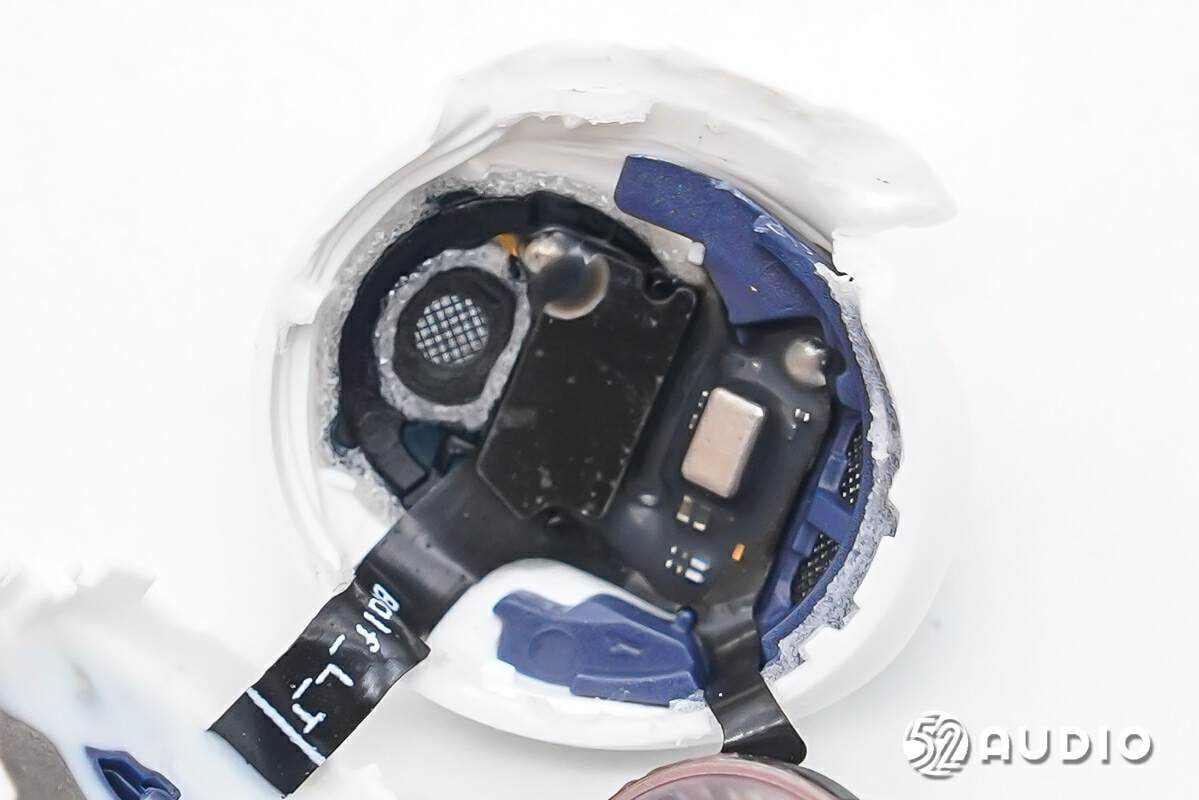
Close-up of the circular cover plate that holds the speakers in place.
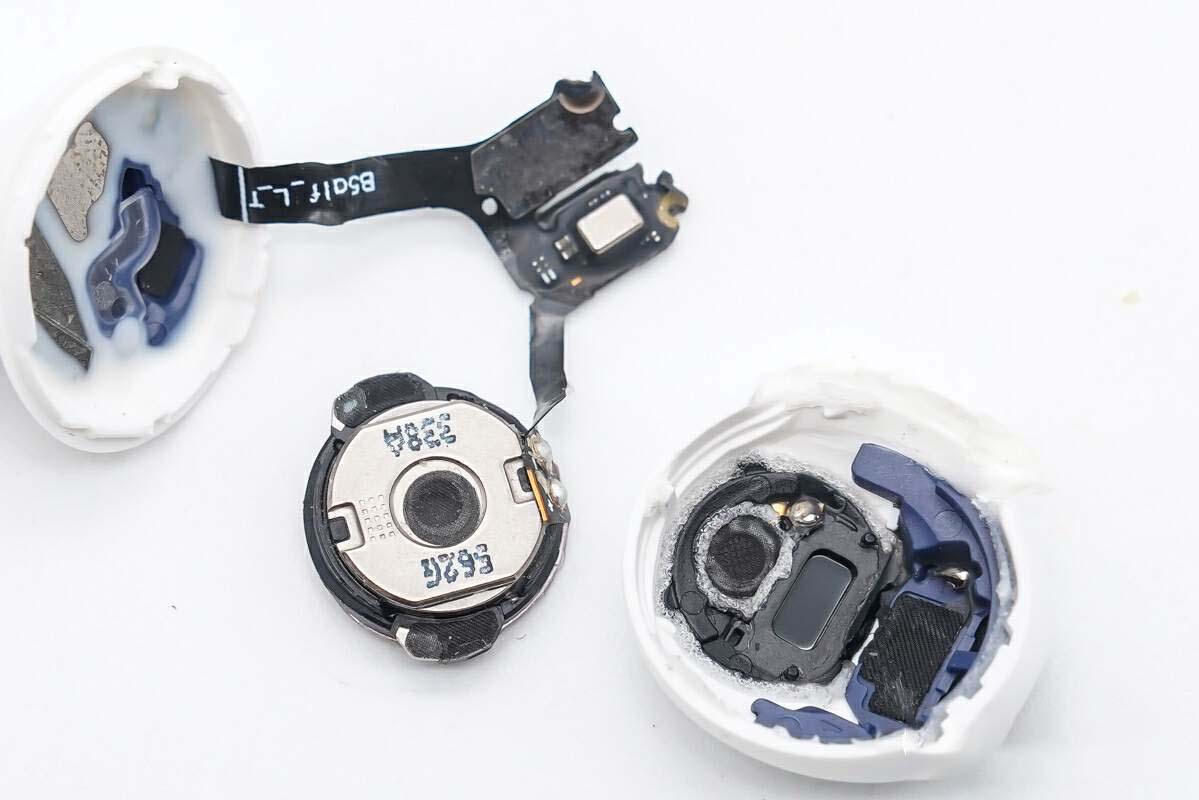
The internal structure of the front cavity at a glance, with a microphone and ear detection sensor.
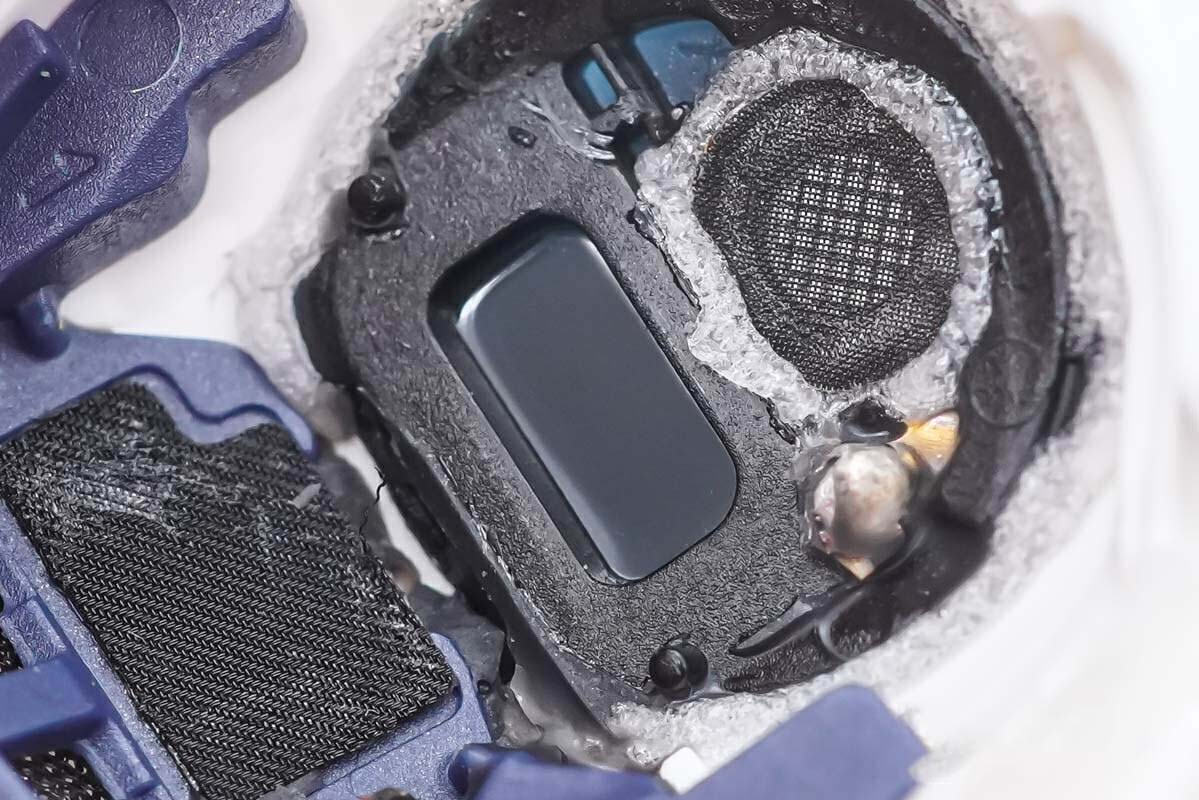
Removing the internal cable of the front cavity.
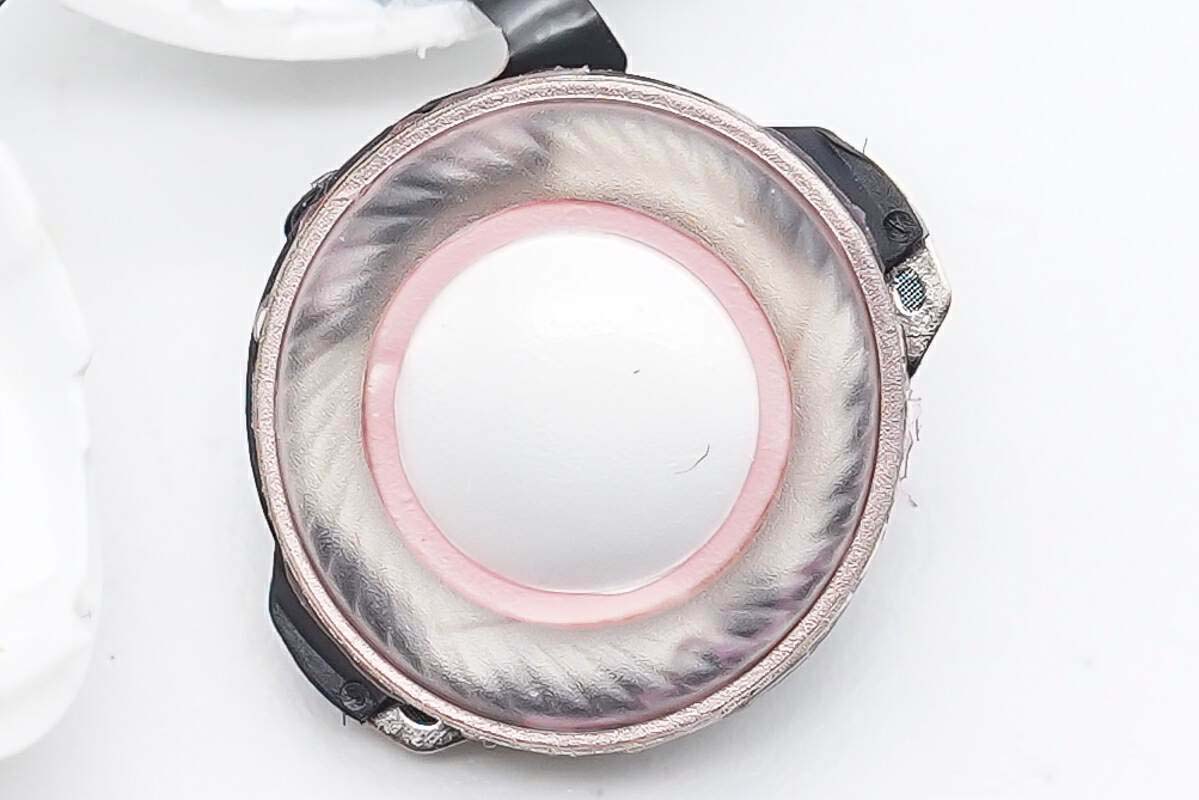
Close-up of the structure of the optical in-ear detection sensor inside the front cavity.
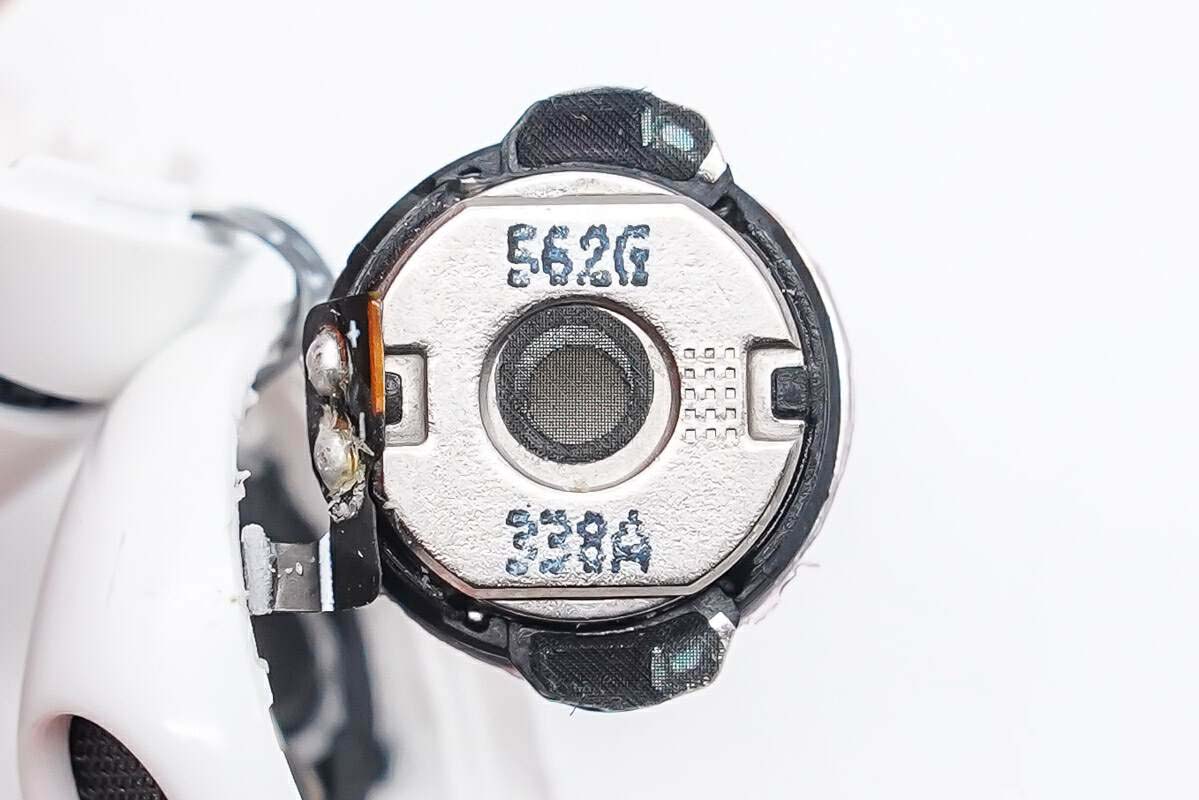
Close-up of the front diaphragm of the Super Magnetic Surge unit.
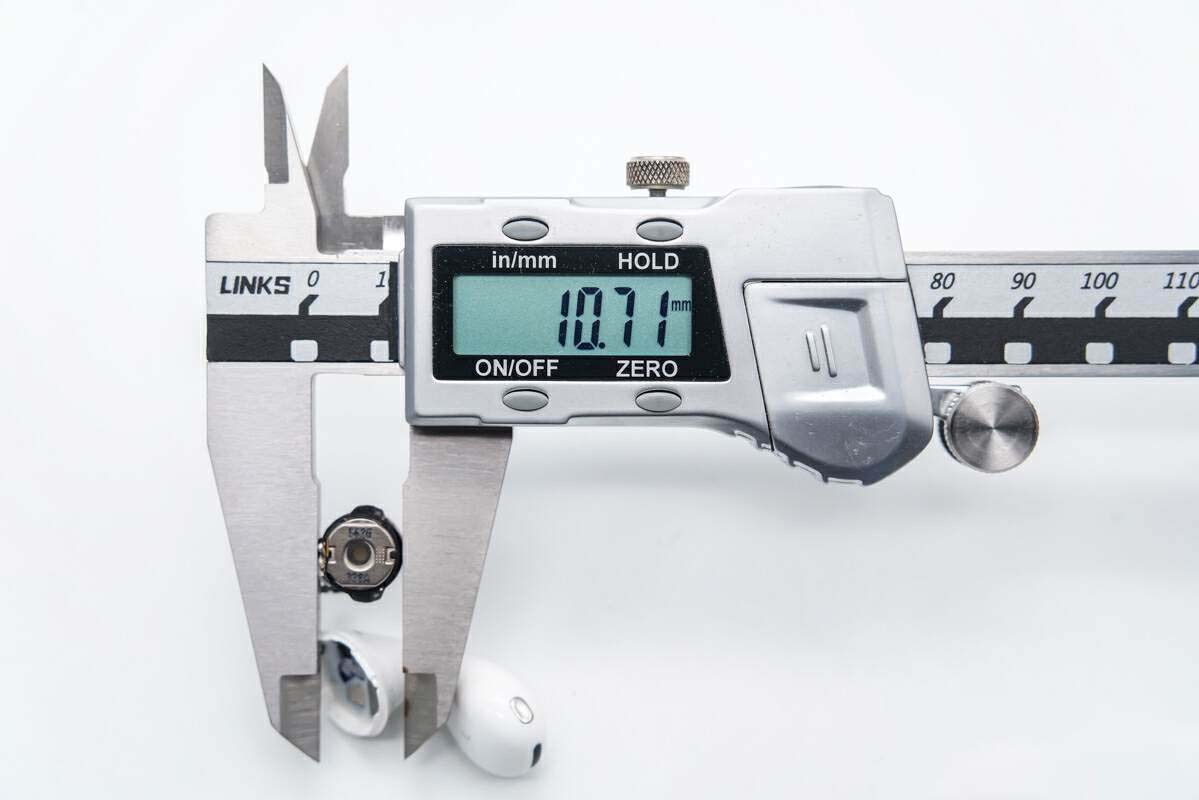
Close-up of the magnet on the back of the Super Magnetic Surge unit.
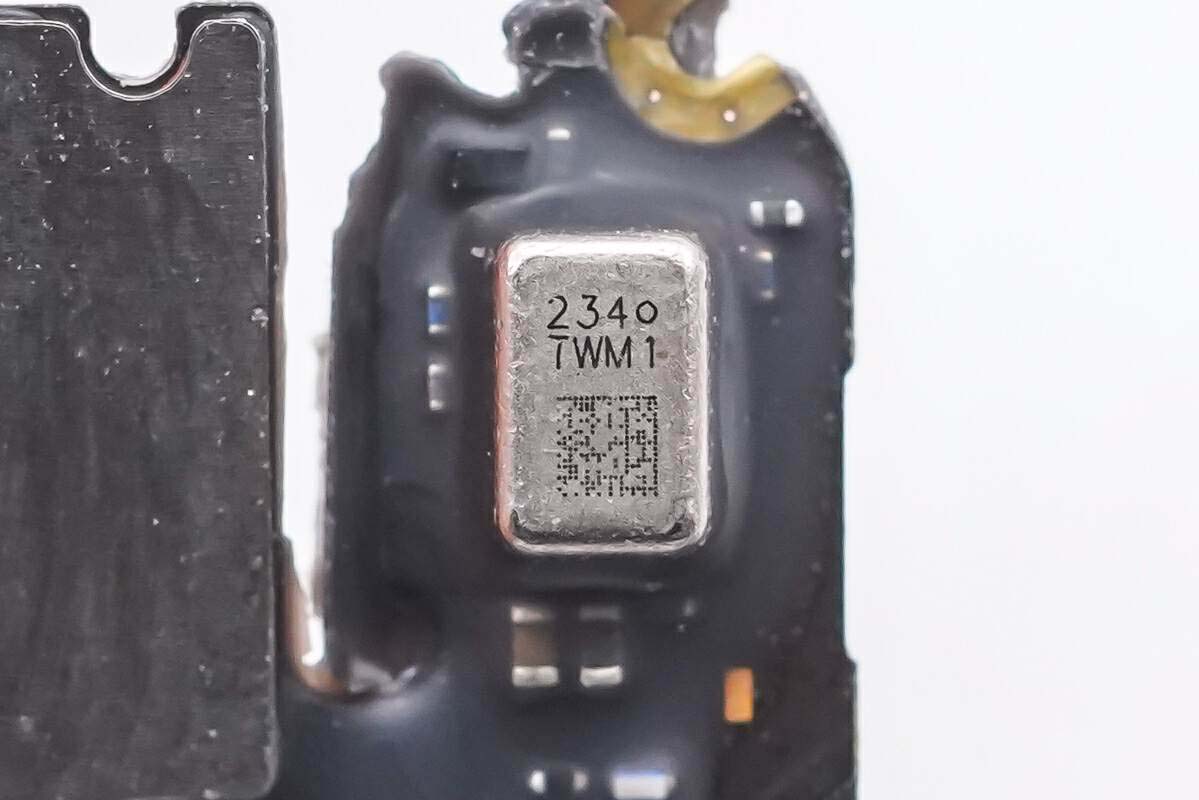
Comparison of the size of the speaker unit and a dollar coin.
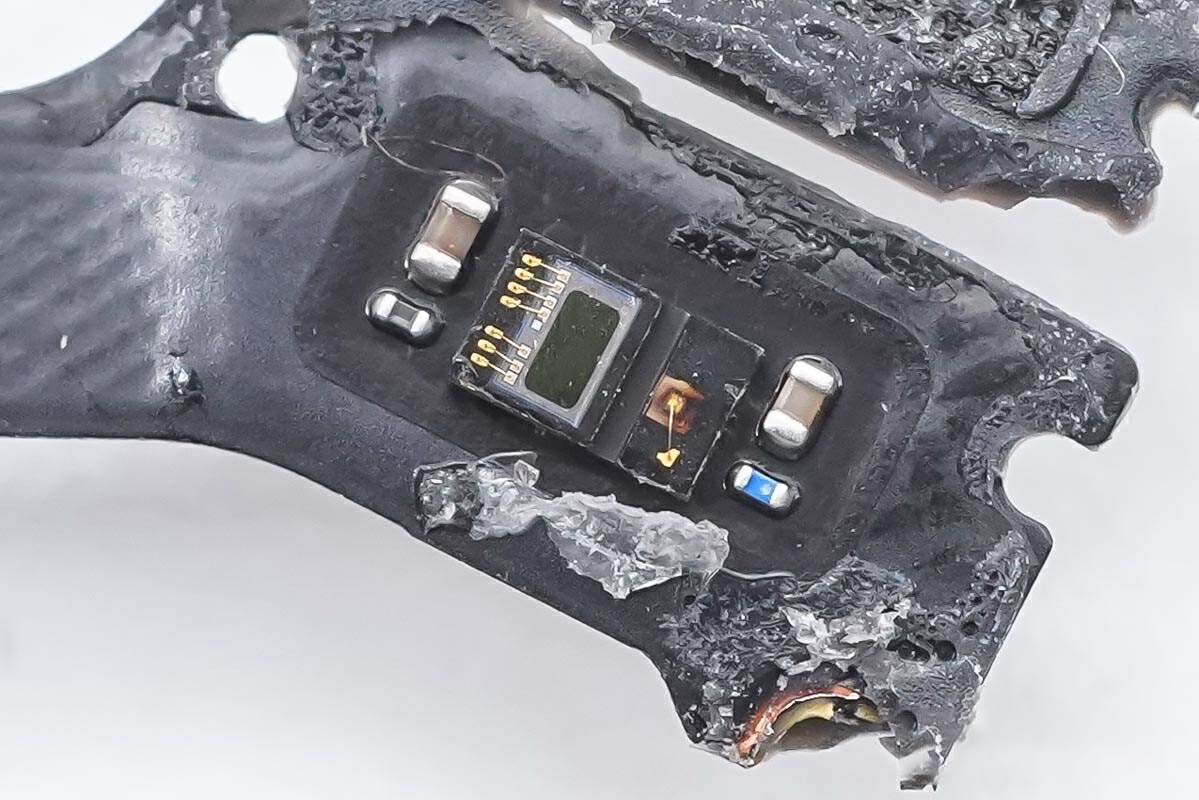
The size of the speaker unit is about 10.71mm as measured by I love audio network.
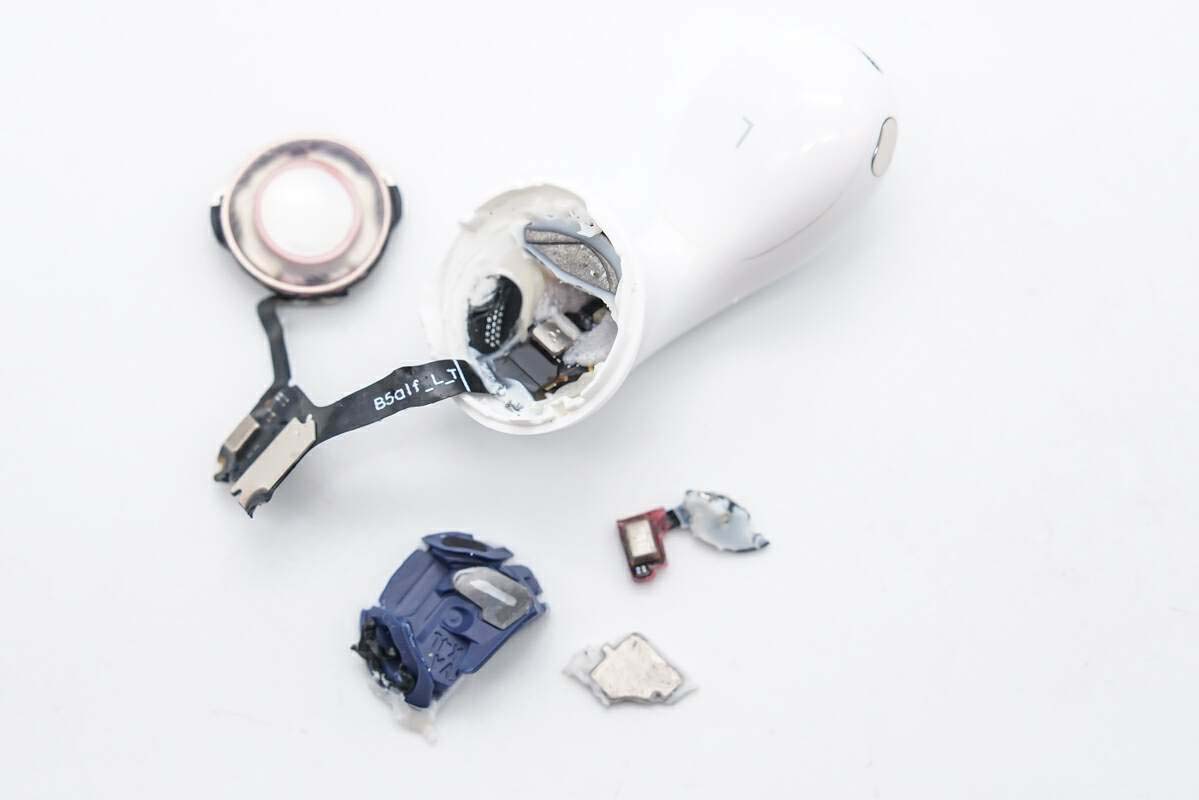
Close-up of the MEMS silicon microphone with laser engraving 234o, a back-fed noise-canceling microphone for picking up sound from inside the ear canal.
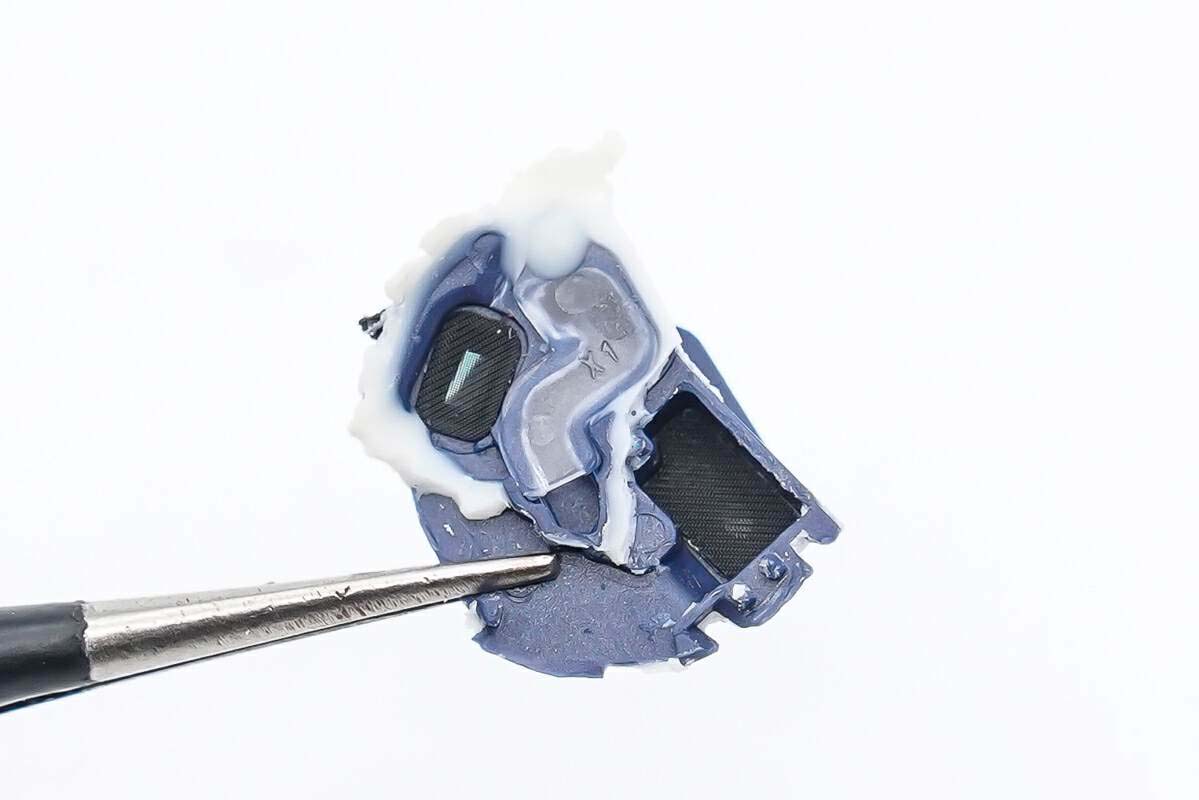
Close-up of the optical in-ear detection sensor for automatic audio playback pause when taken off and automatic playback resume when worn.
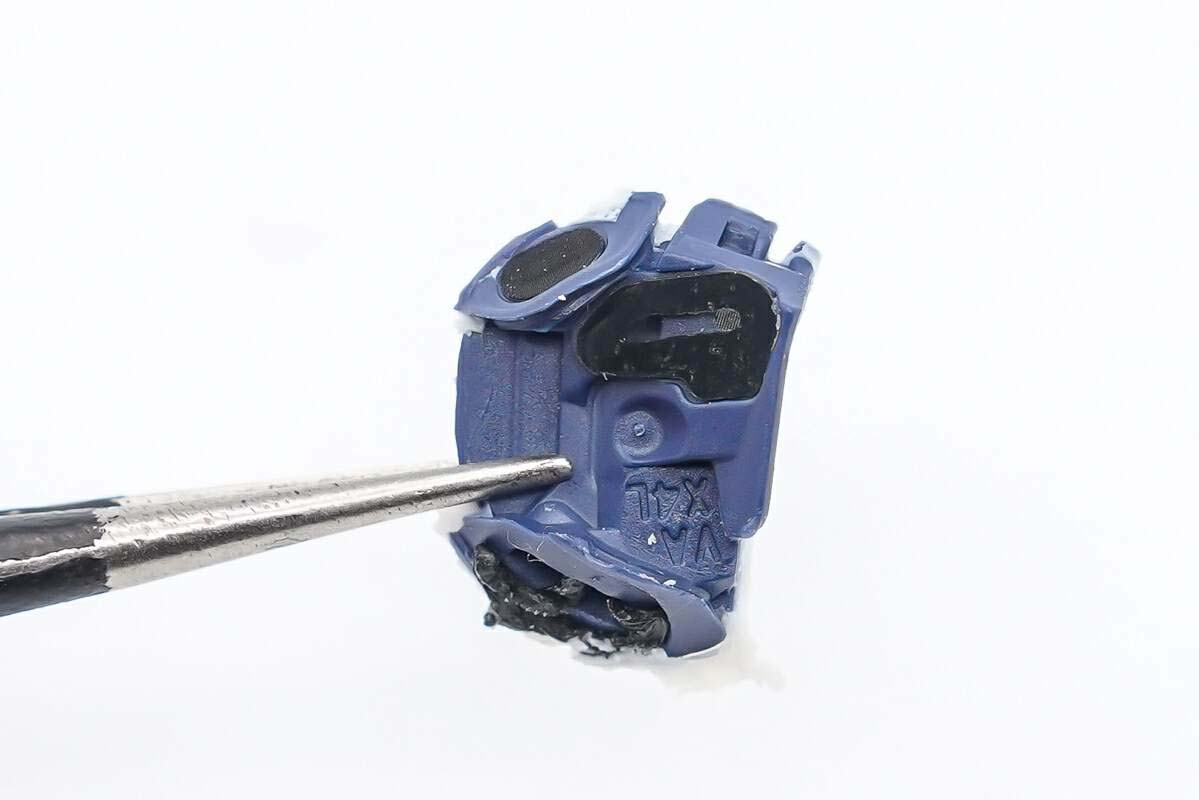
Removal of the bass enhancement tube structure and microphone unit inside the rear cavity.
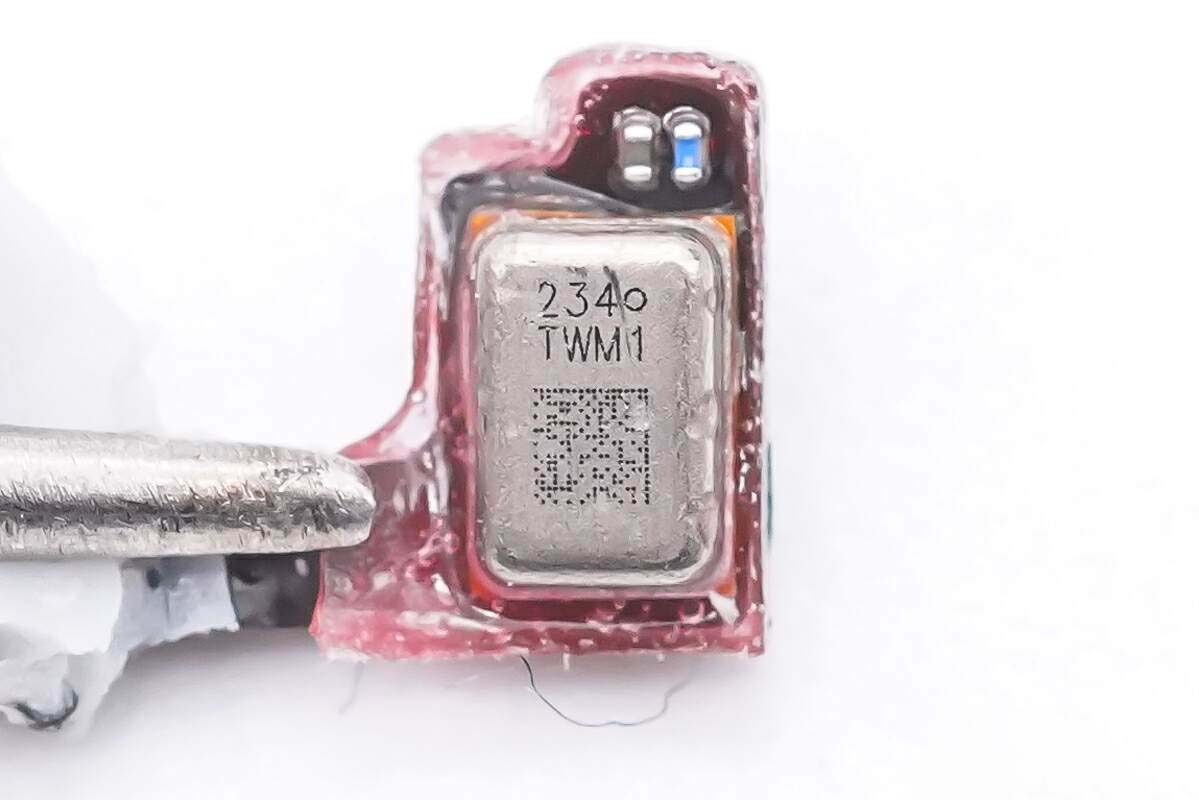
The structure of one side of the bass enhancement tube at a glance, the right recess fixes the forward-feeding noise-canceling microphone and is protected by a fine dust mesh.
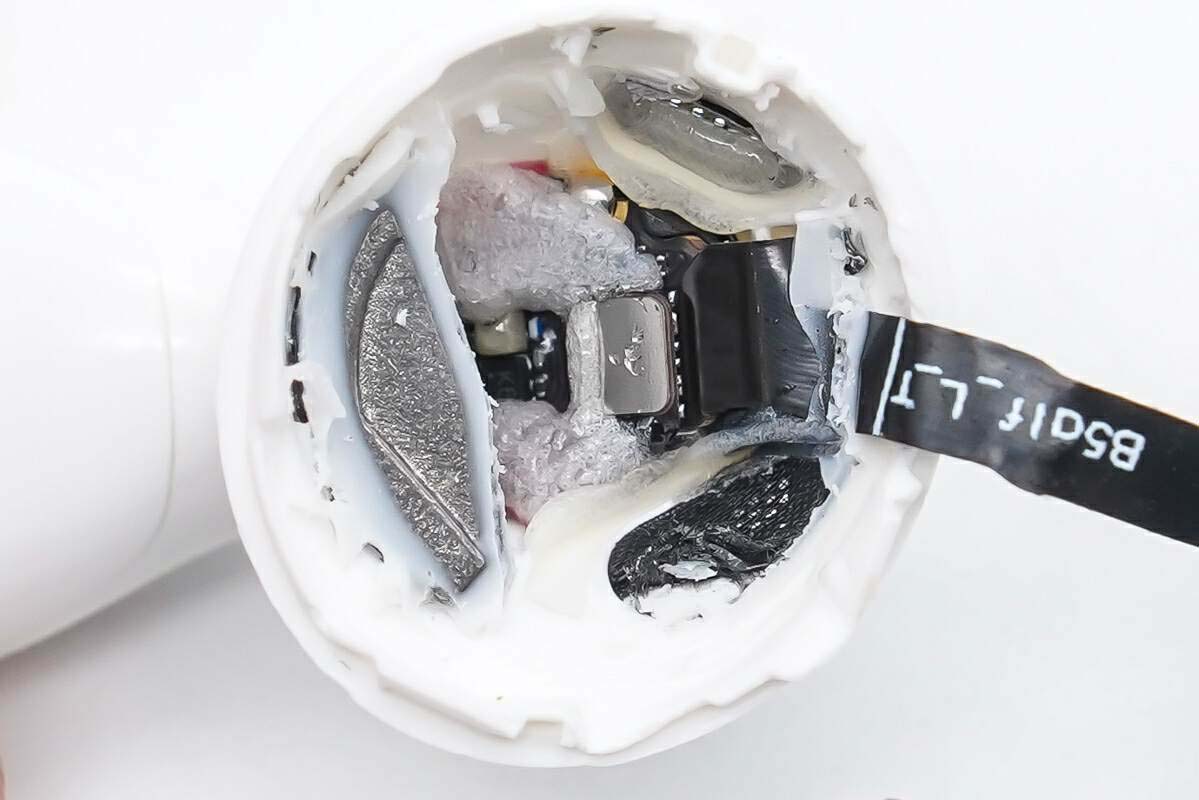
The structure of the other side of the bass enhancement tube is at a glance, and the microphone pickup hole is attached with a waterproof breathable film.
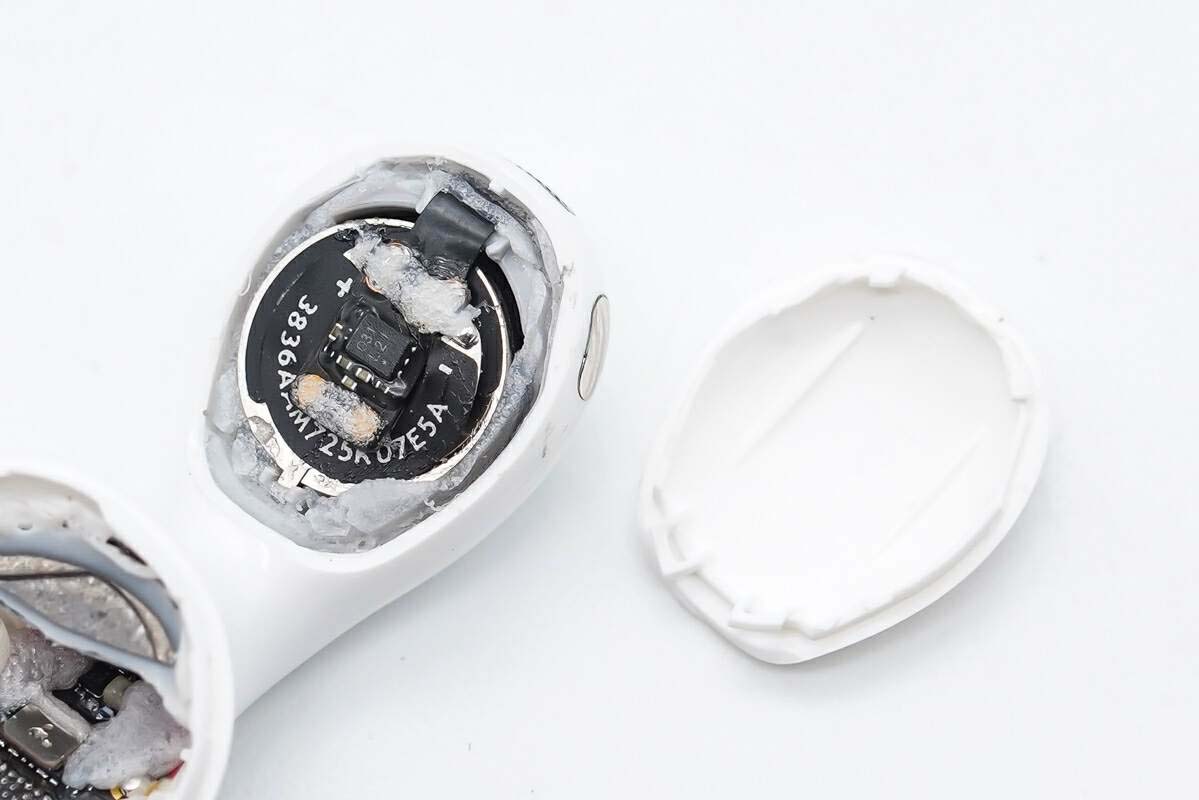
Close-up of the MEMS silicon microphone with laser engraving 234o, which is a feed-forward noise-canceling microphone for picking up external environmental noise.
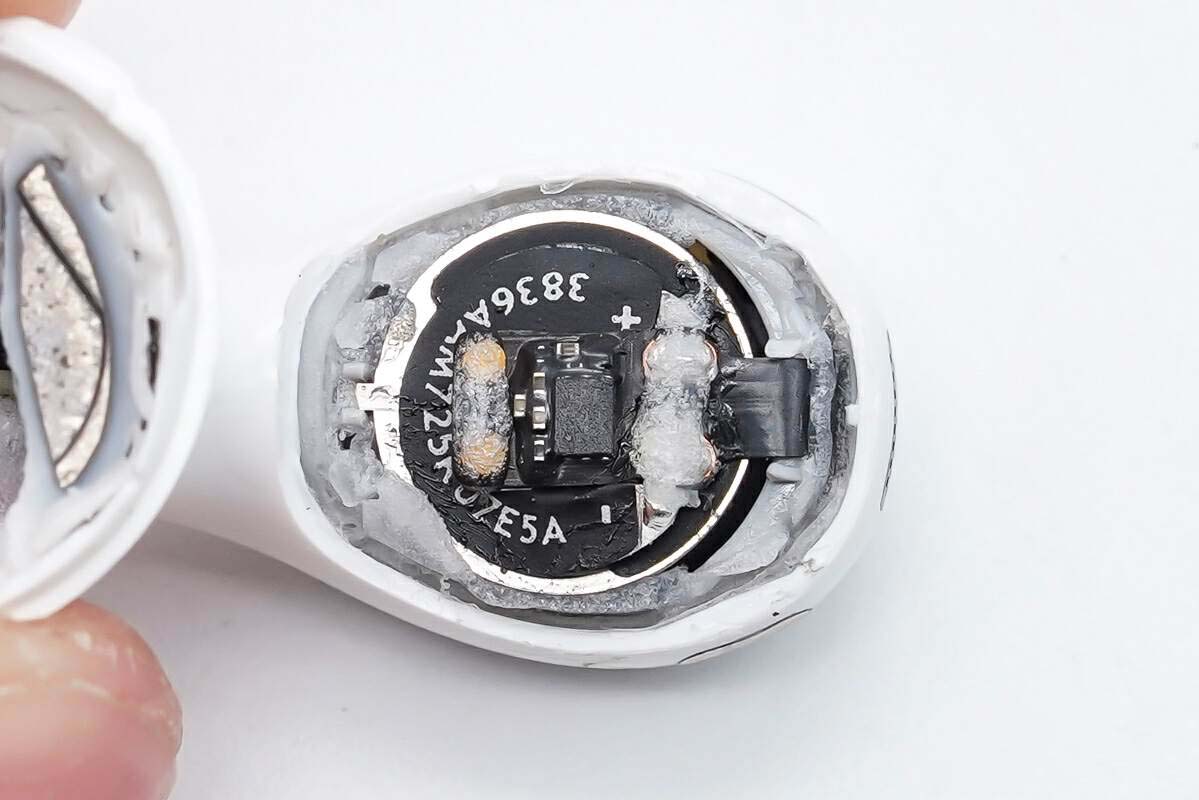
The structure of the bottom of the rear cavity at a glance, set with the motherboard unit, the cable is connected to the motherboard through the BTB connector.
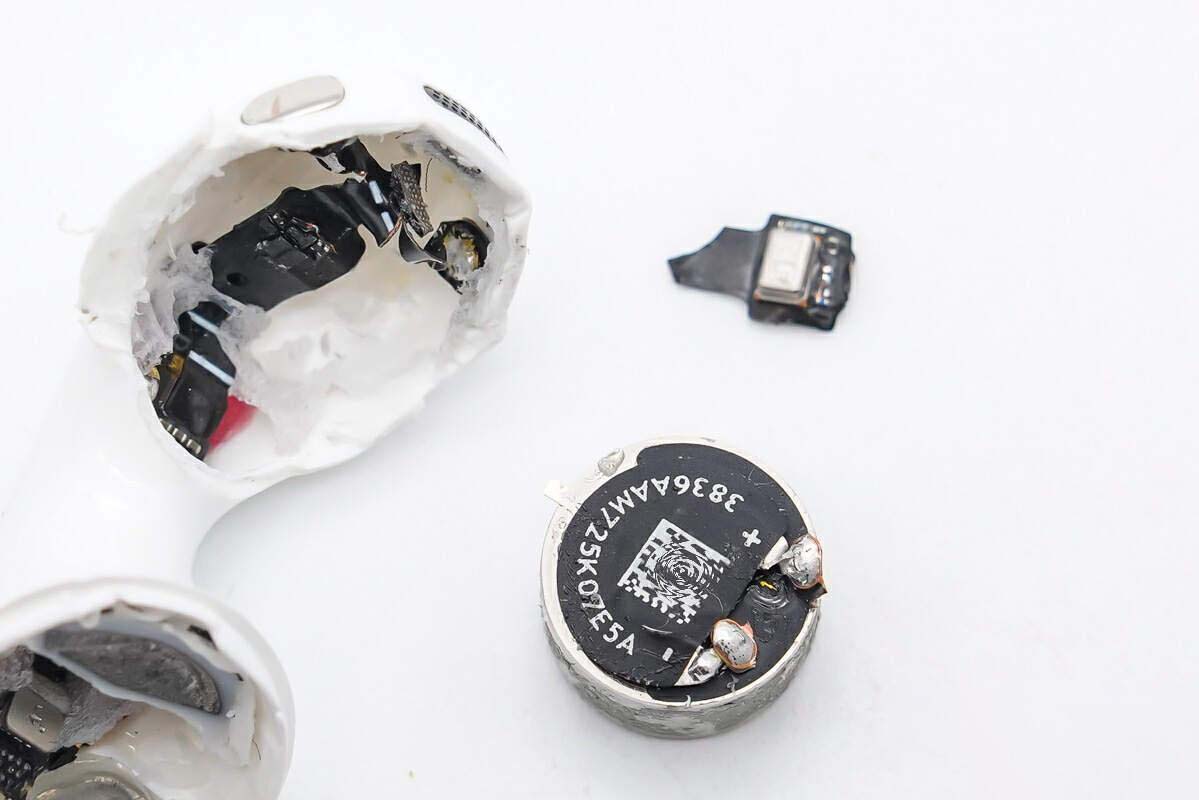
Remove the inner cover of the headphone stalk.
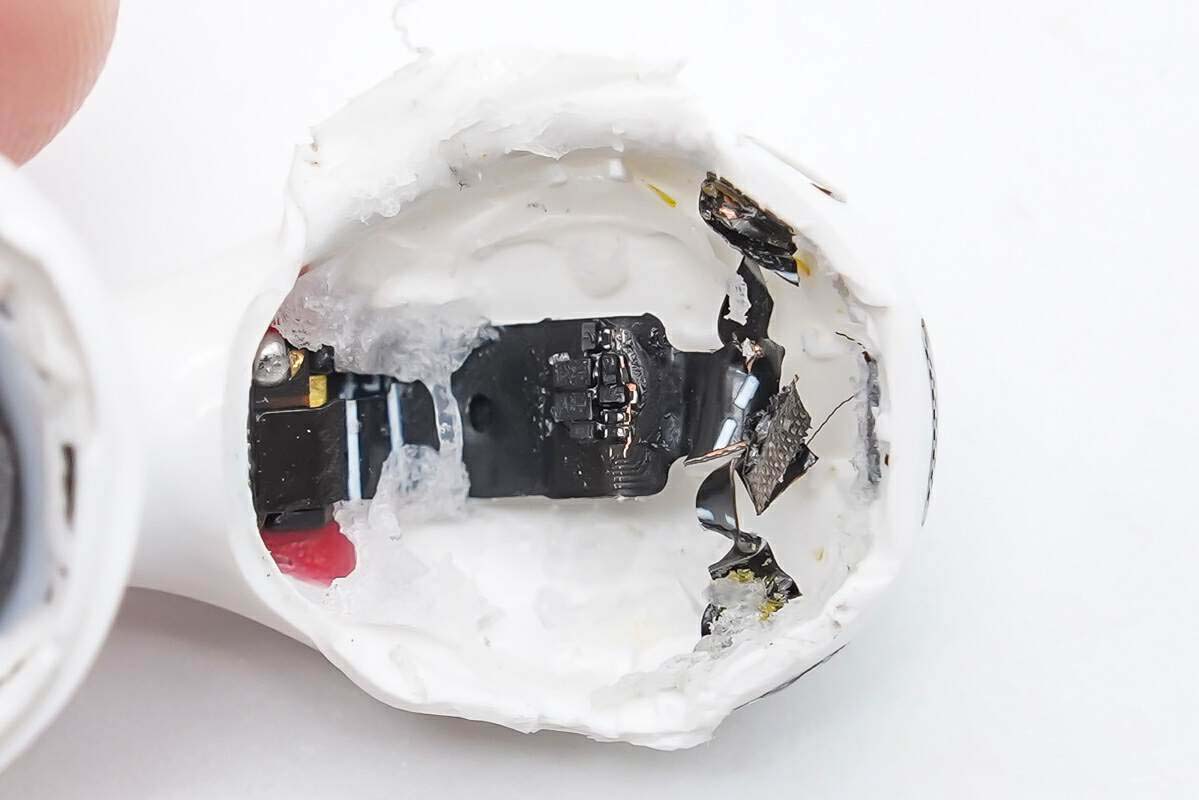
The battery unit is set inside the cavity, and the end row of wires is connected to the microphone, which is fixed by a large amount of glue seal.
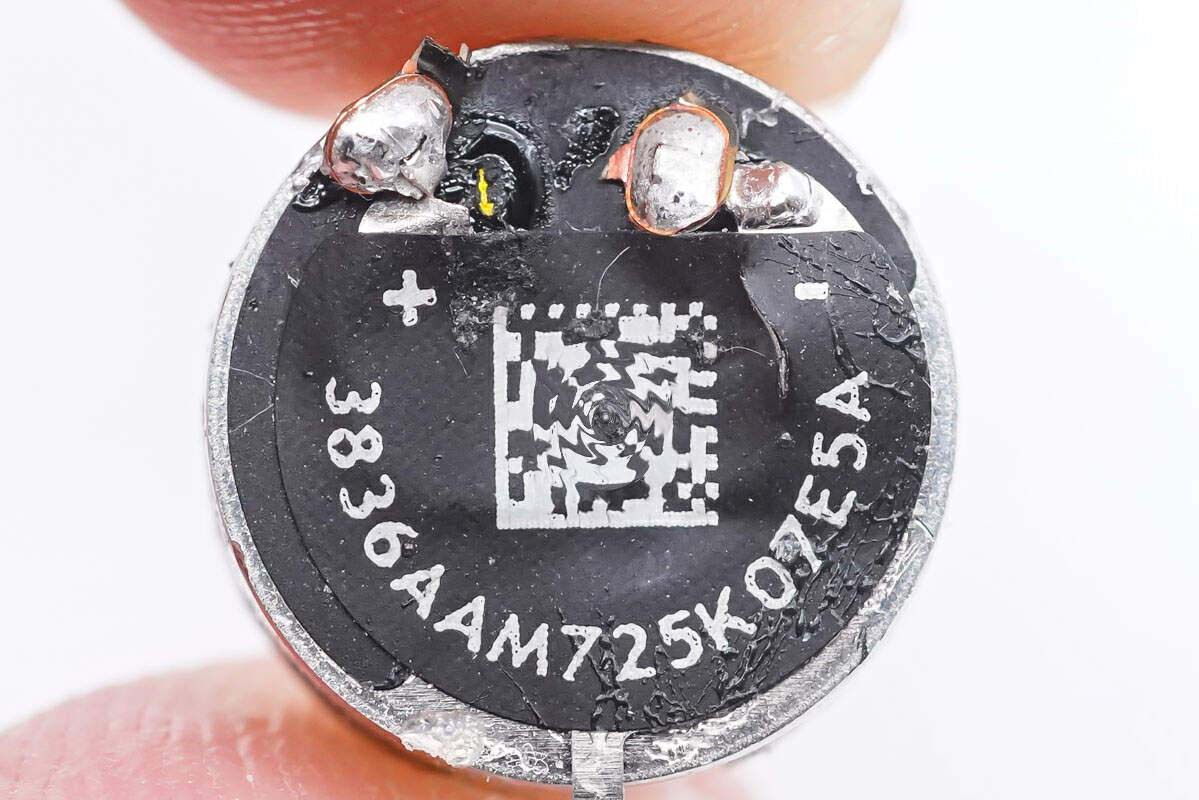
There is an integrated lithium protection IC with silkscreen "031 L21" on the back of the battery.
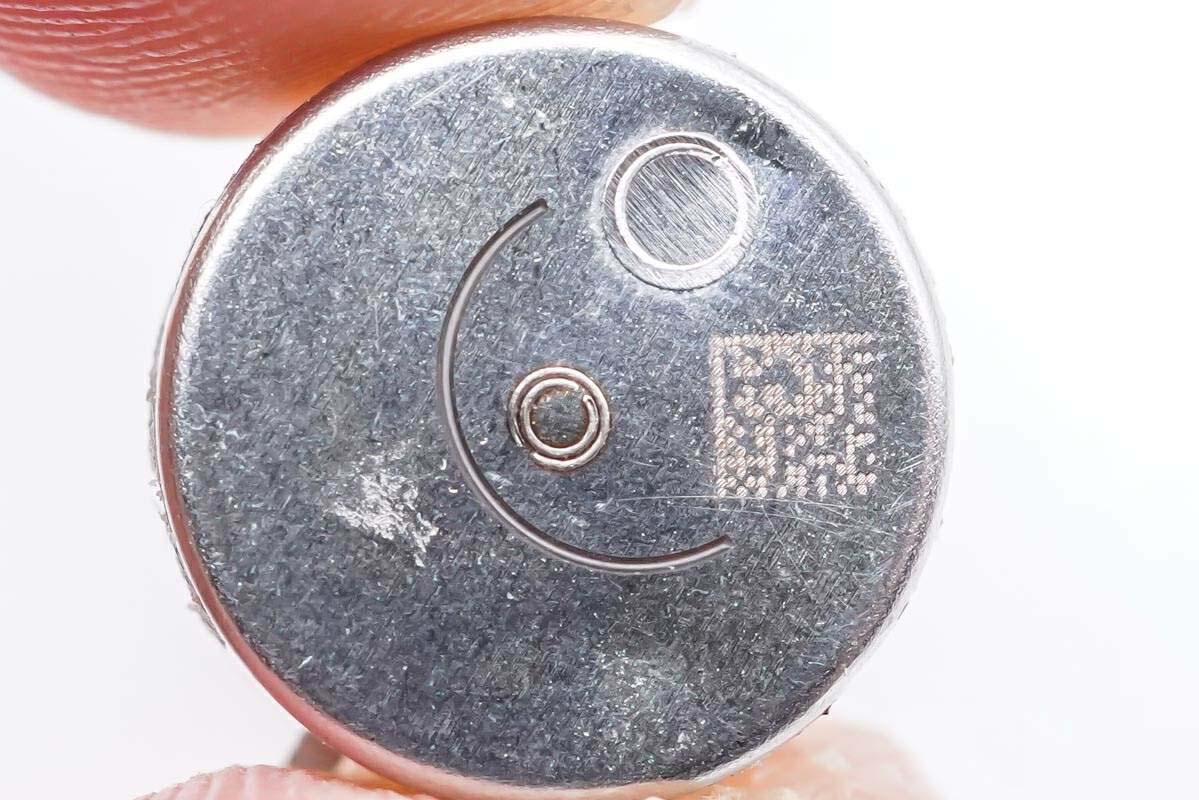
Take out the battery and microphone.
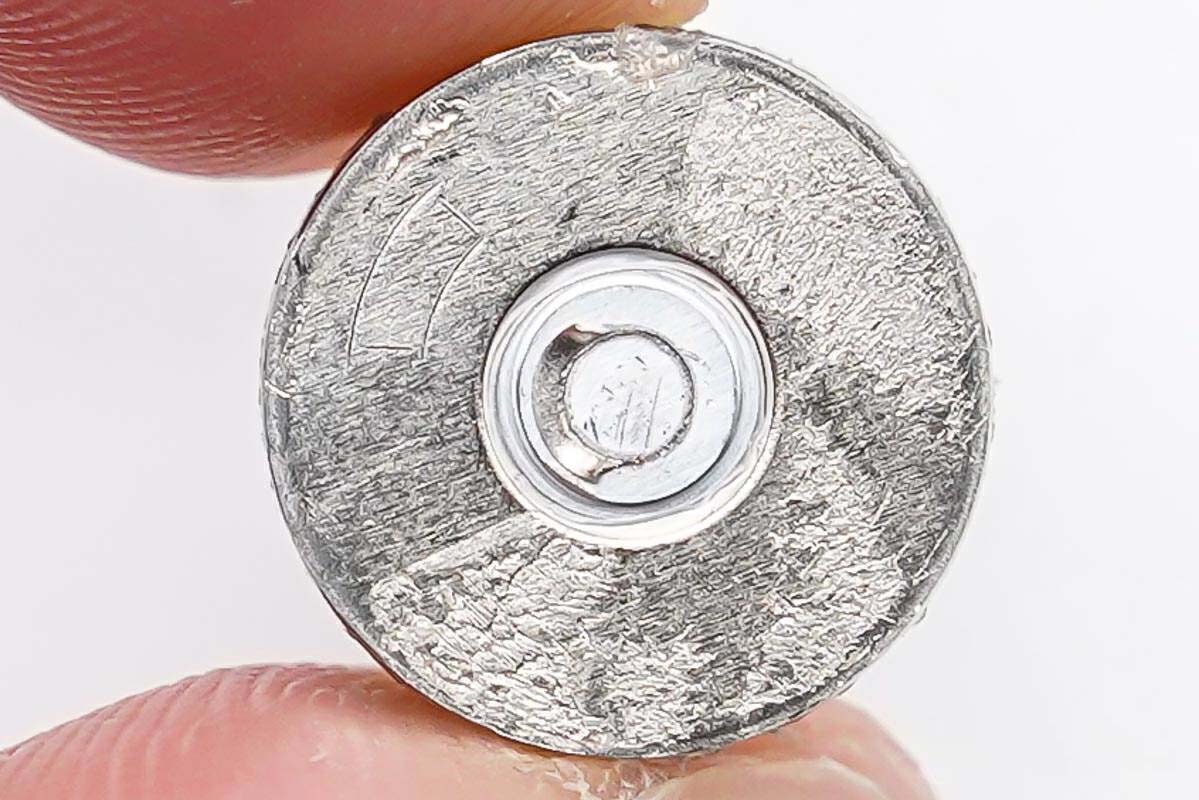
The bottom of the cavity motherboard lining structure at a glance.
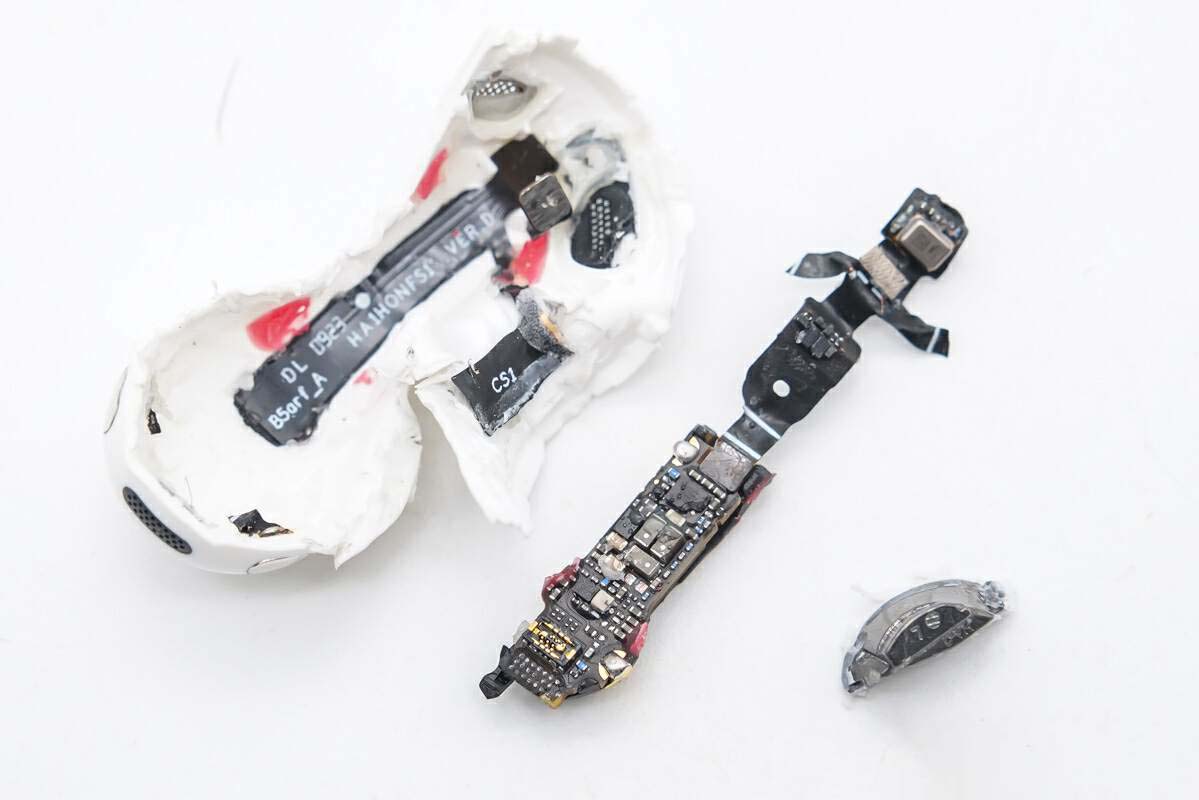
Headset built-in steel-cased buckle battery, sticky note screen printed QR code, and "3836AAM725K07E5A" information.
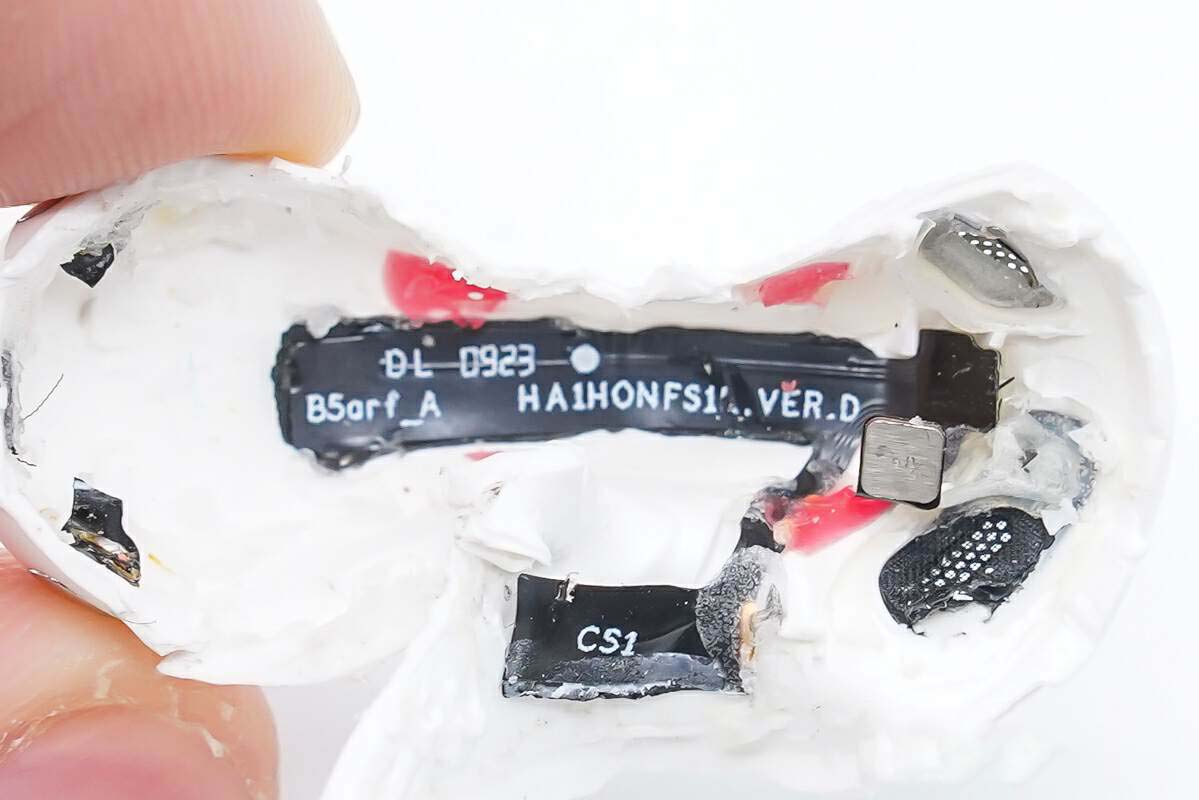
Steel-cased snap-on battery front close-up.
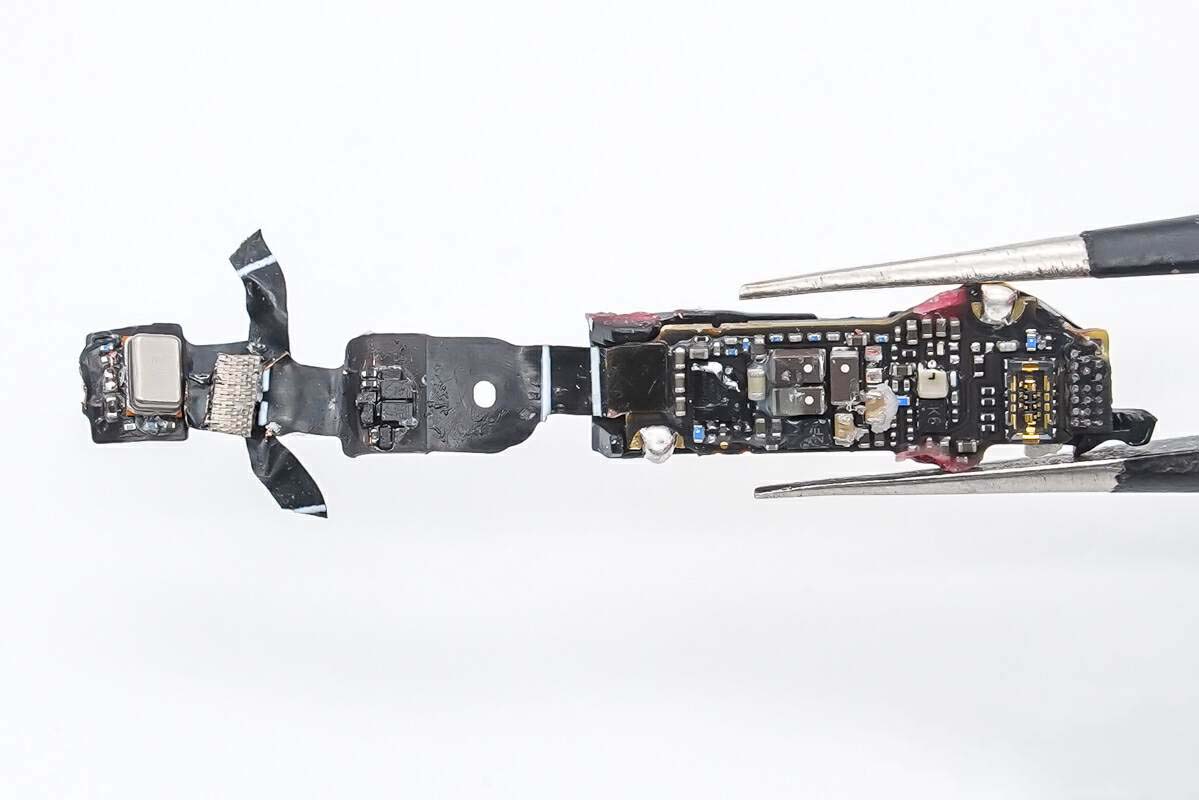
Steel case snap-on battery back close-up.
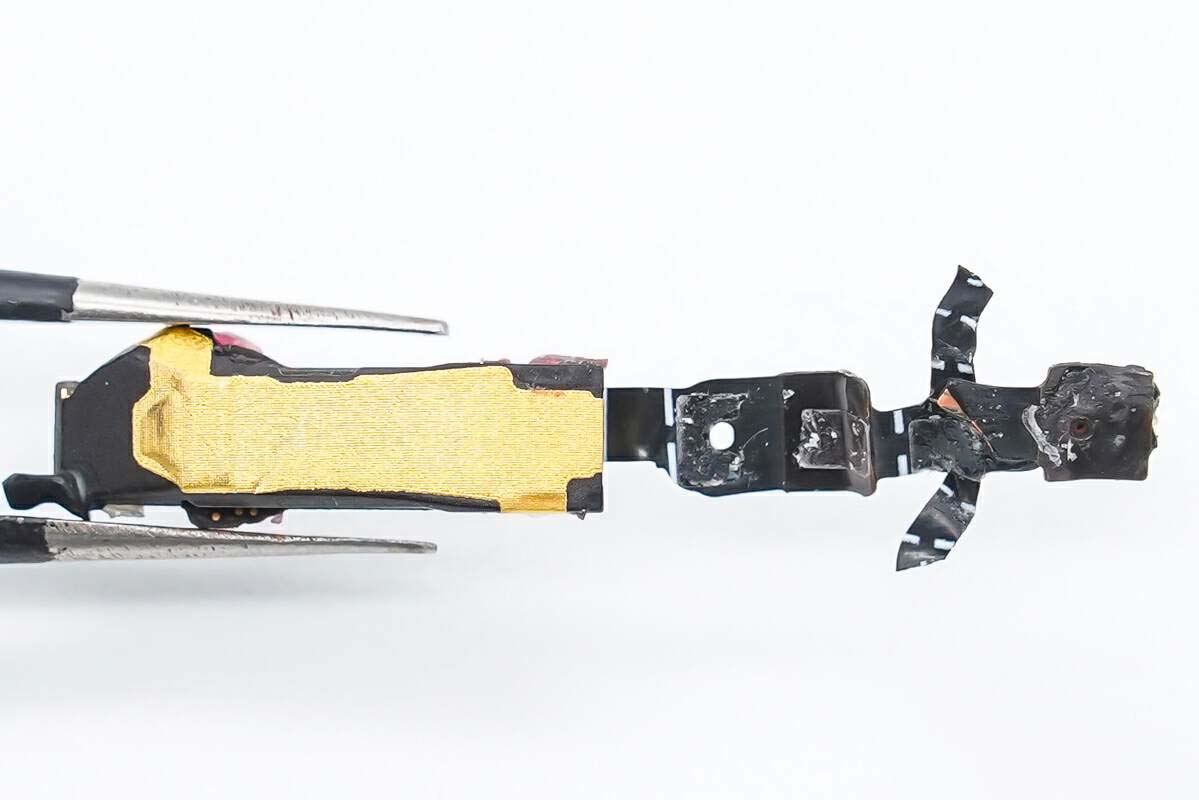
Disassemble the headset handle, take out the motherboard unit.
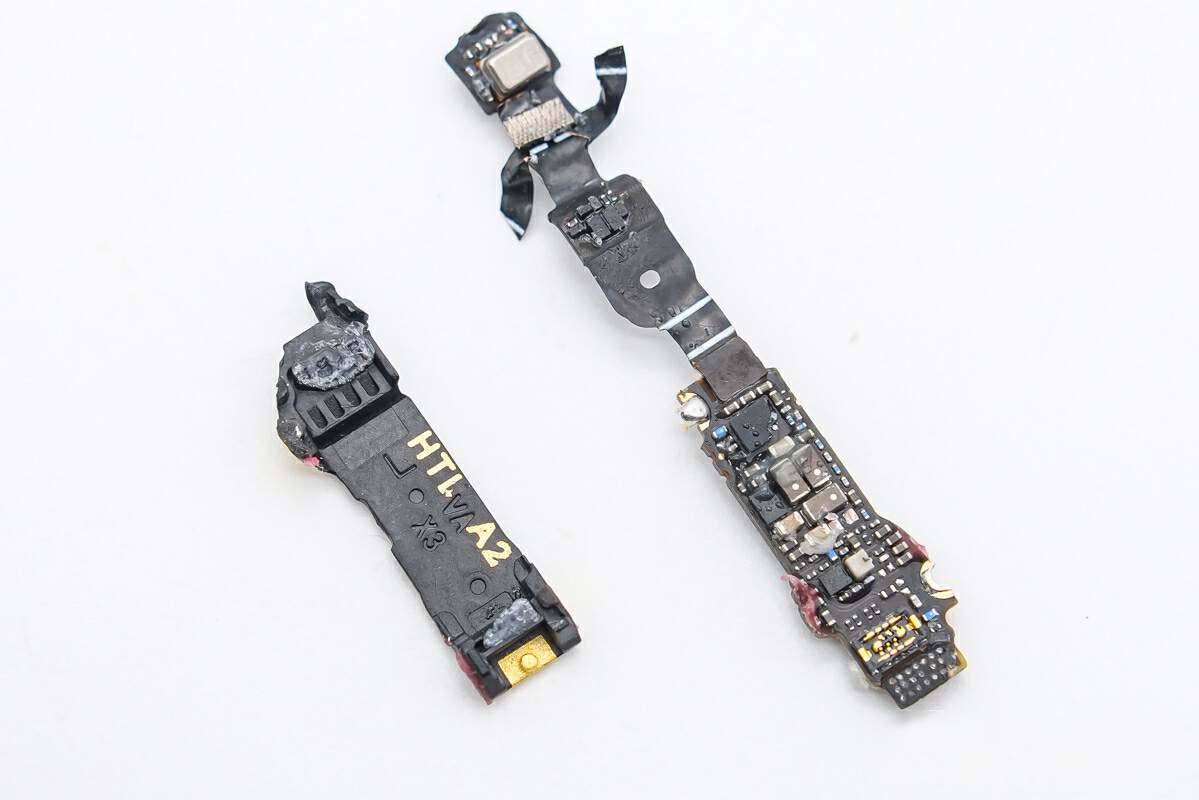
Close up of the touch detection patch on the wall of the cavity for long press and slide control.
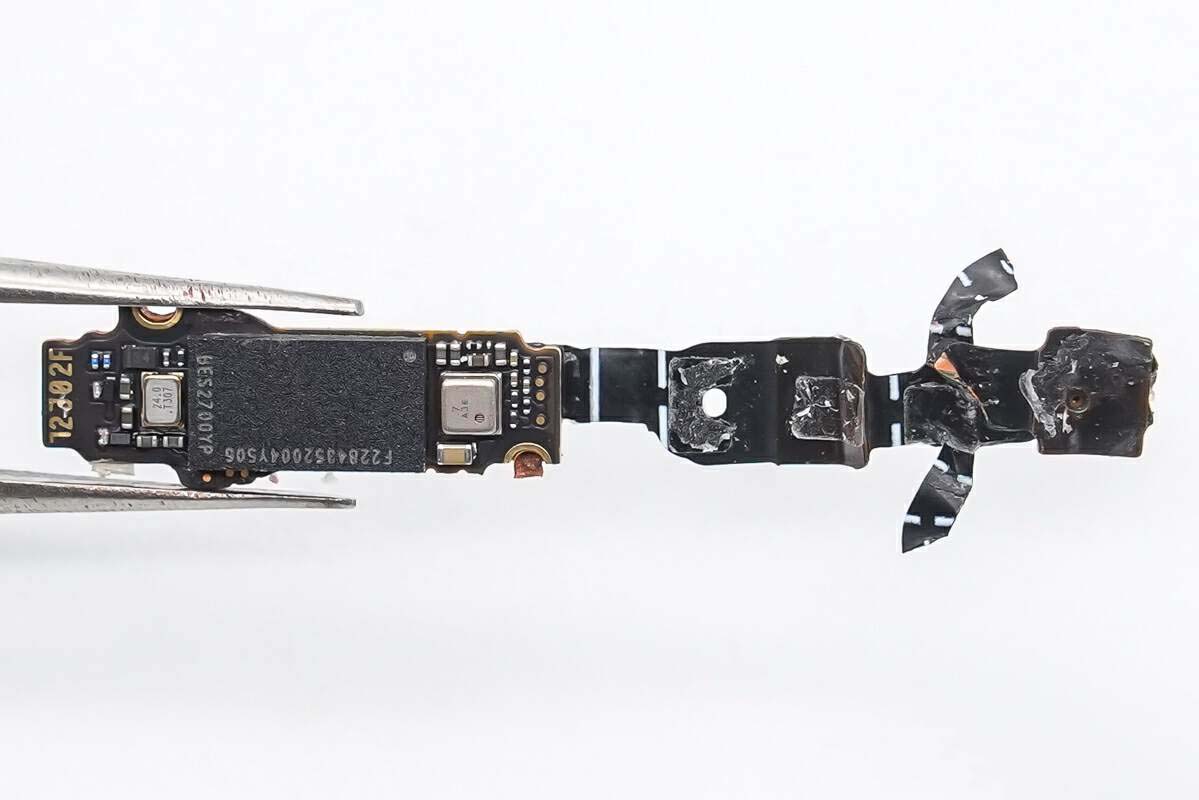
Front view of the circuitry of the main board and the platen.
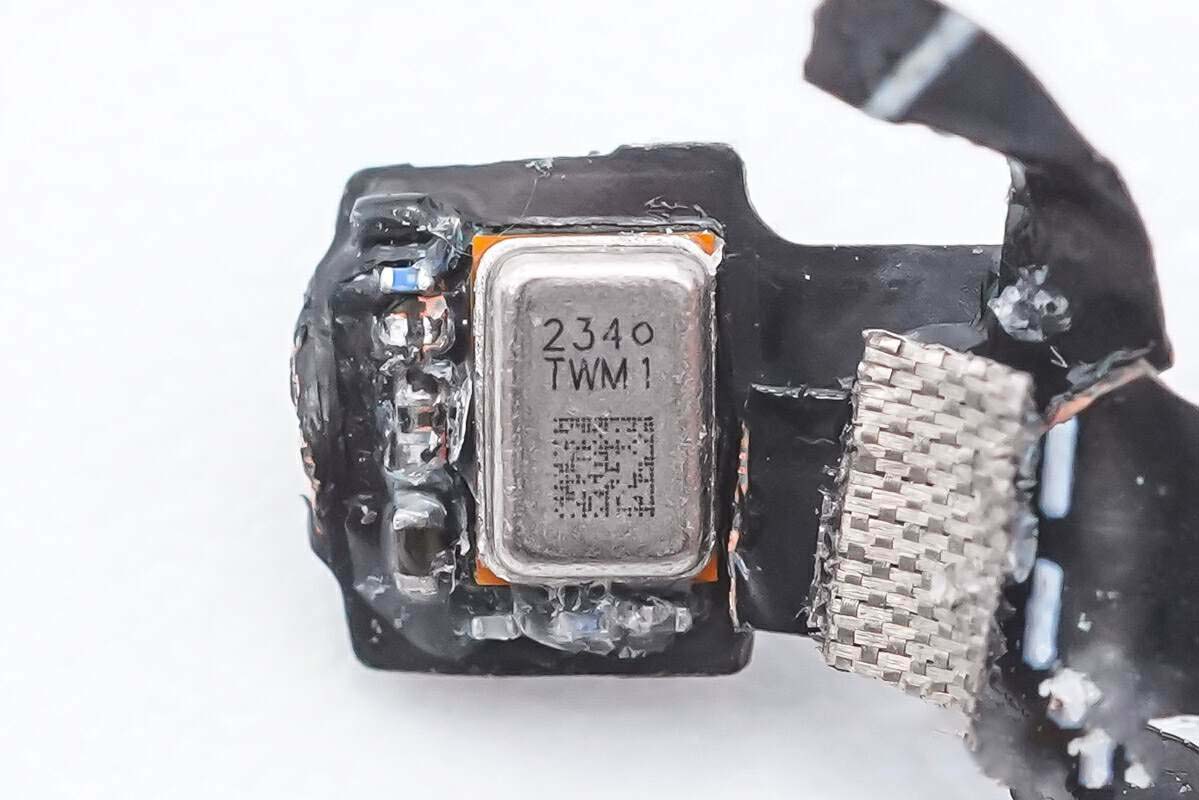
The back of the main board is fixed with a cover plate, on which the LDS laser antenna is printed.
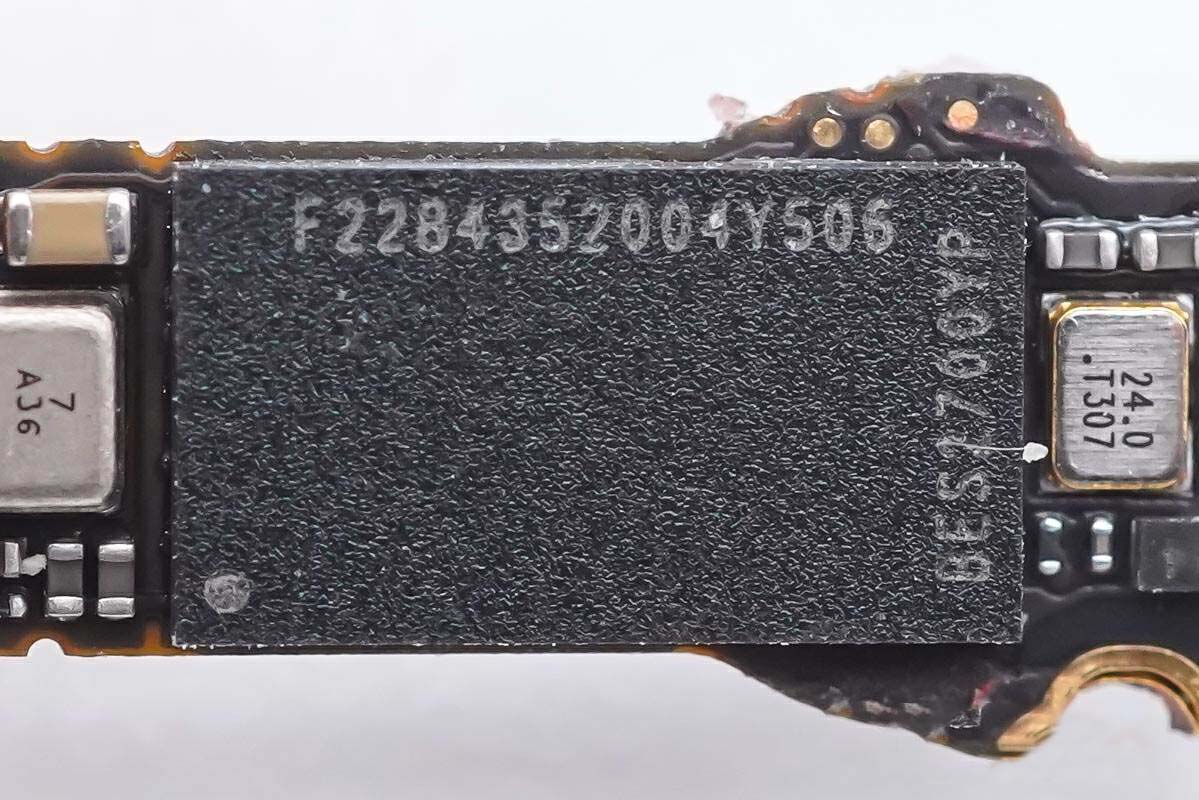
Remove the cover plate of the printed Bluetooth antenna, the inner side is connected to the main board through the contact.
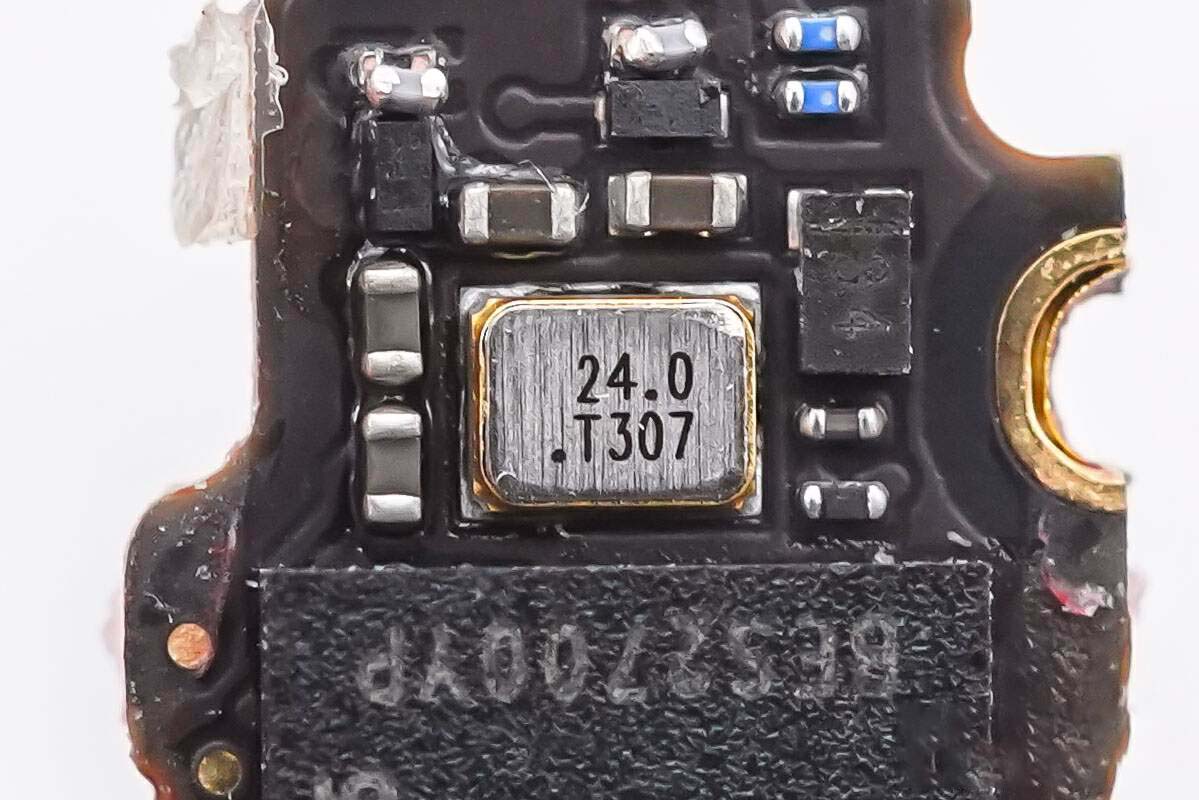
The circuit of the back of the main board at a glance.
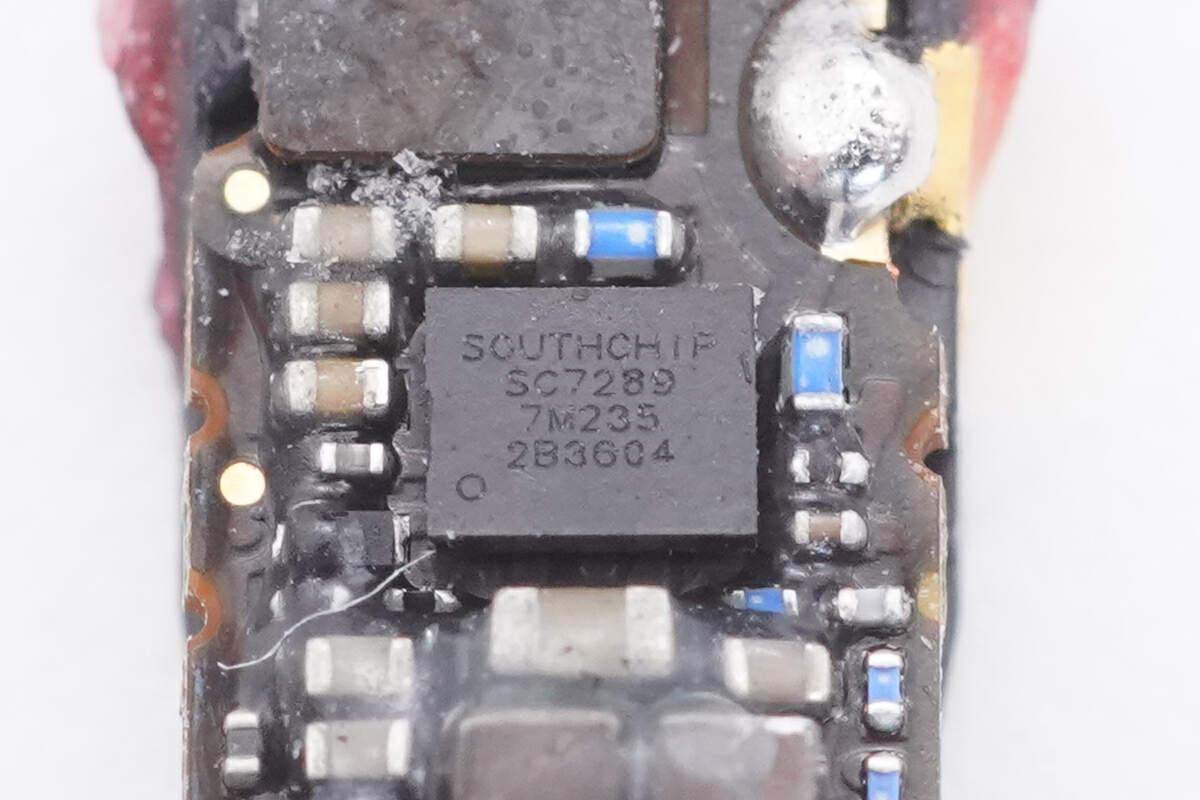
Close up of the MEMS call microphone with laser engraving 234o. A total of three MEMS silicon microphones of the same model are equipped inside the monaural for active noise cancellation, AI call noise cancellation and other functions to collaboratively pick up sound.
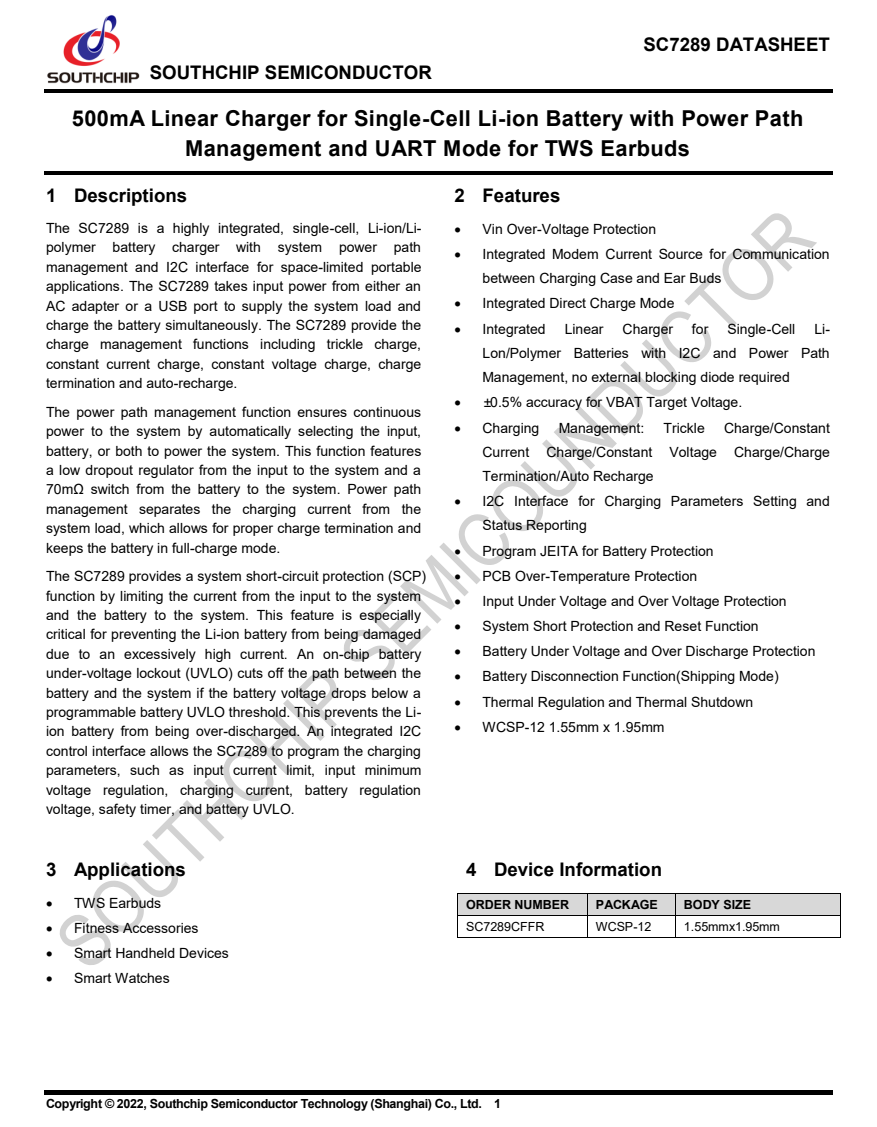
BES Hengxuan BES2700YP Bluetooth audio SoC, with ultra-low power consumption, high integration, using 12nm process, integrated dual-mode Bluetooth 5.3, support BT & BLE, the main processor built-in Arm Cortex-M55 CPU and Tensilica HiFi 4 DSP, greatly enhance the chip's computing performance, sensor hub The subsystem is built with STAR-MC1 MCU and BECO NPU, a neural network processor developed by Heng Xuan, which significantly reduces power consumption while achieving rich application processing capabilities.
According to my love of audio network disassembly learned that, at present, Huawei, OPPO, Xiaomi, Samsung, vivo, glory, JBL, Wan Mo, Baidu, a plus, transonic and many other brands of true wireless headphones used in large numbers.
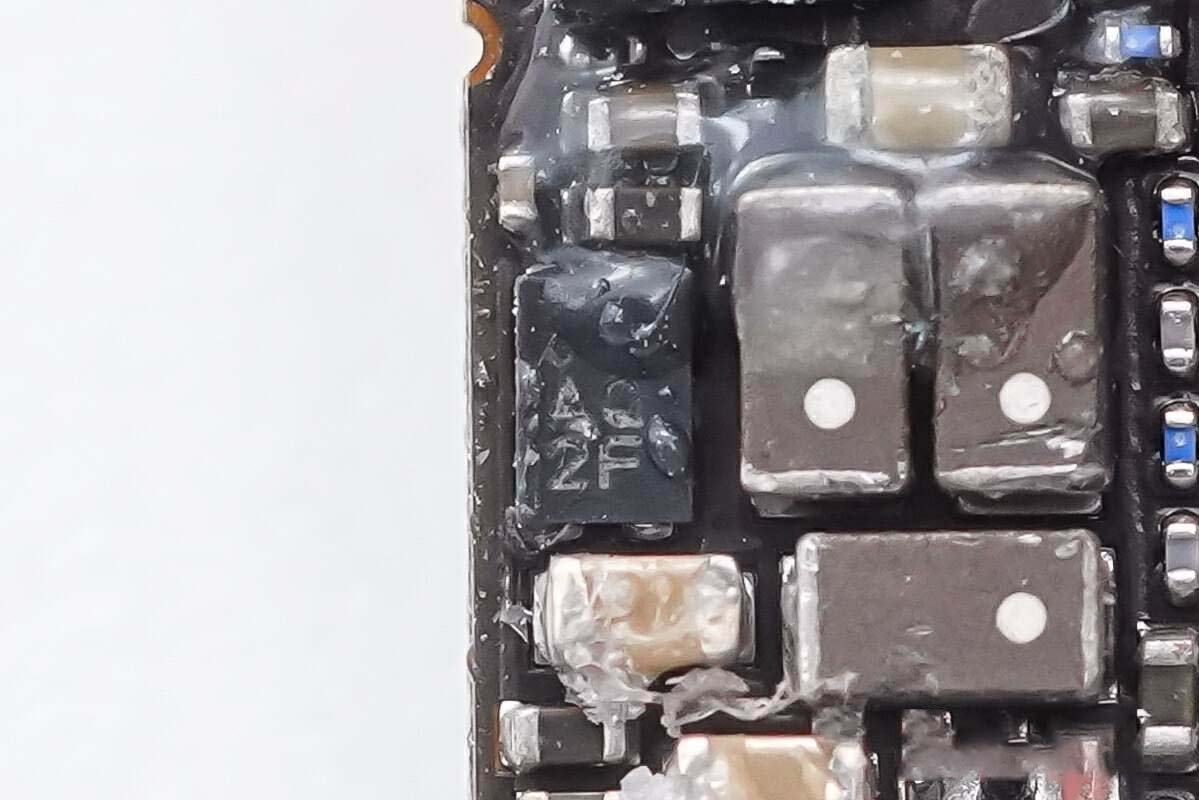
Close up of the 24.0MHz crystal, which provides the clock for the Bluetooth chip.
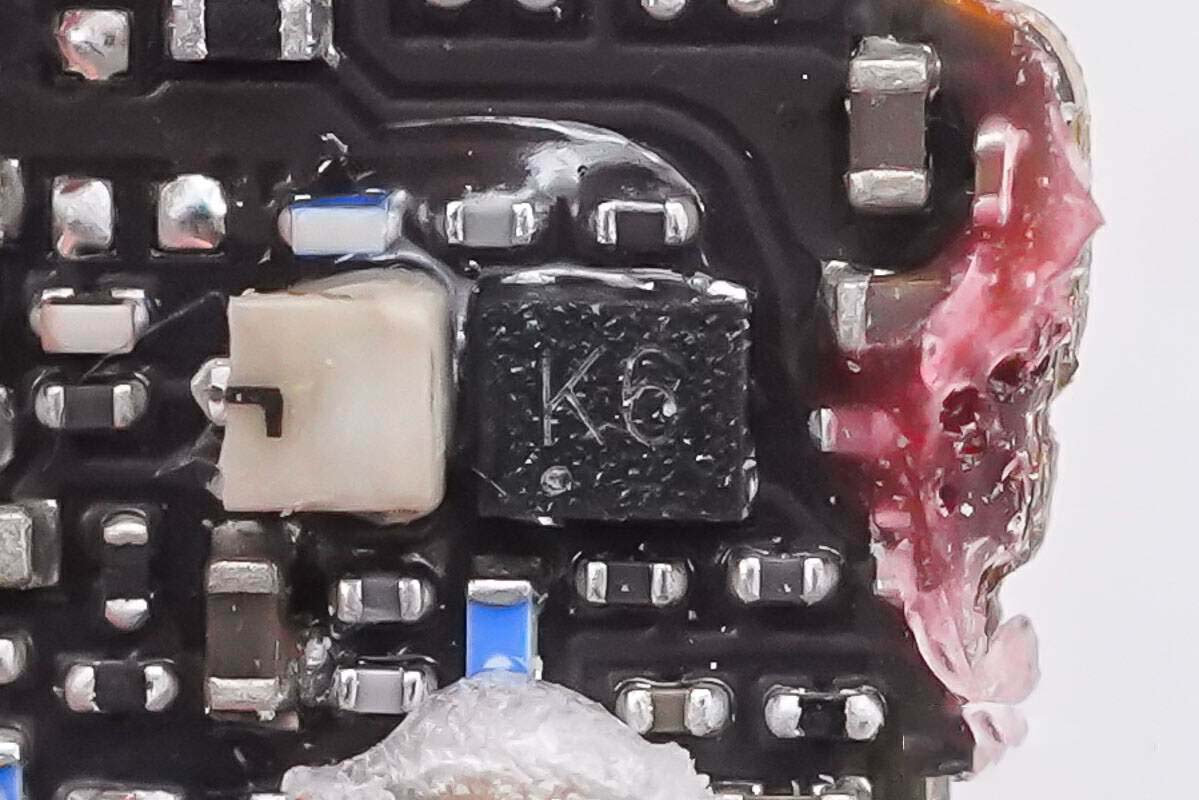
Silkscreened 7 A36 acceleration sensor for knock control function.
Southchip Southchip SC7289 linear charging IC with system power path management and I2C interface for space-constrained portable applications. SC7289 supports Bypass bypass mode and is capable of low-voltage direct charging at the headset end. In transport mode, the SC7289 supports low battery leakage current of 400nA to extend battery cycle life and enable users to get a better experience of using the product.
SC7289 adopts WCSP-12 1.55mm X 1.95mm ultra-small package, which can be widely used in rechargeable battery packs with very small space constraints. SC7289, together with the SC8753 boost chip inside the charging case, supports 10C direct charging with good thermal performance and charging efficiency of up to 94%, thus enhancing the overall battery life of the product.
SC7289 and SC8753 support load detection function, which can eliminate the Hall switch for plugging and unplugging detection; SC8753 and SC7289 both have built-in UART switch at the same time, eliminating external load switch or MOS control; they also integrate charging box and headphone communication function.
Southchip Southchip SC7289 details diagram.
Screen-printed AQ 2F IC.
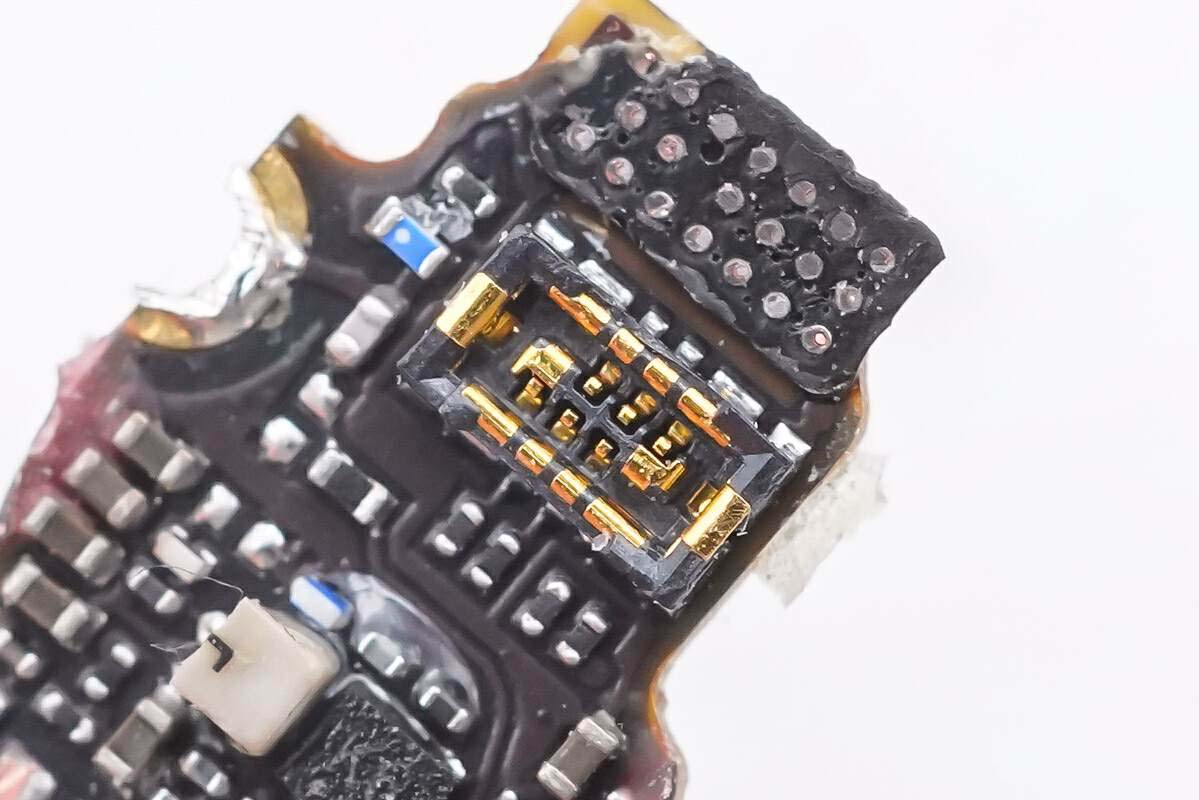
The IC with silkscreen K6.
Closeup of the female BTB connector connecting the front cavity component row, according to my audio network, model number: OK-114GF006-35, from Yachi Technology (OCN).
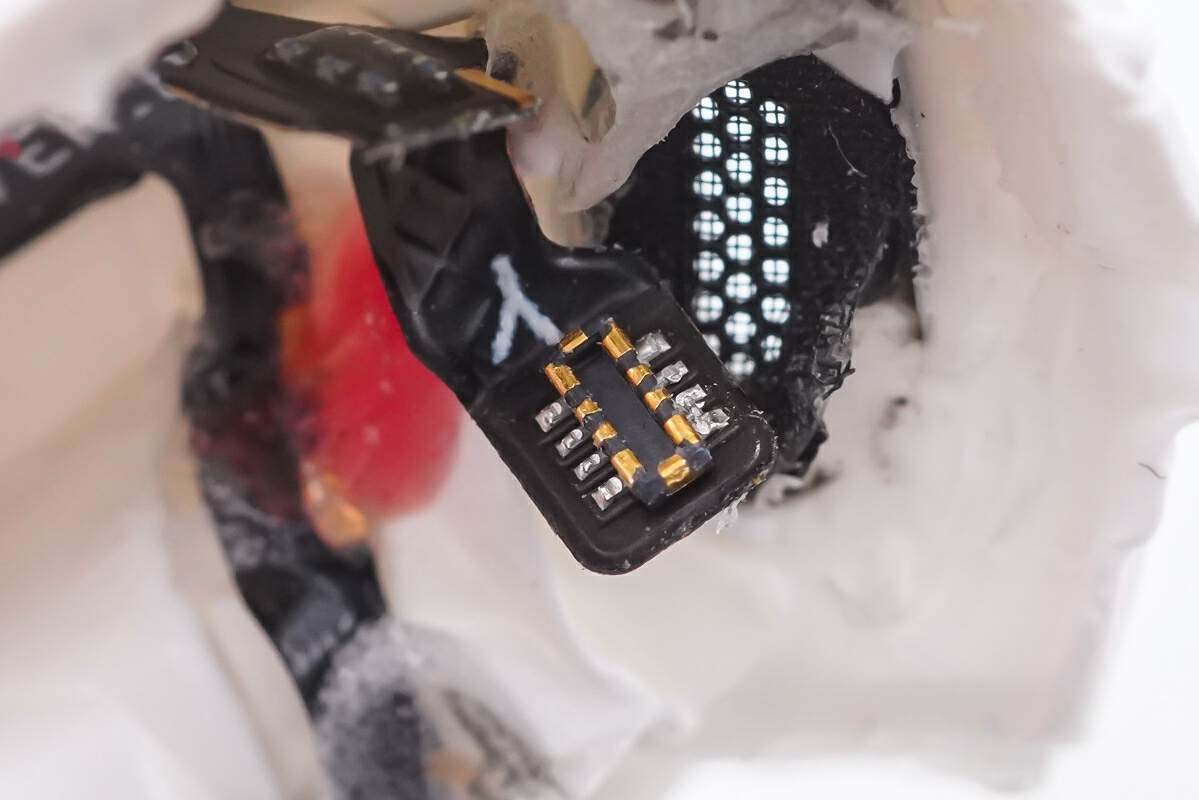
Close-up of the male BTB connector on the front cavity internal component lineup, model number: OK-114GM006-35, from OCN (OCN).
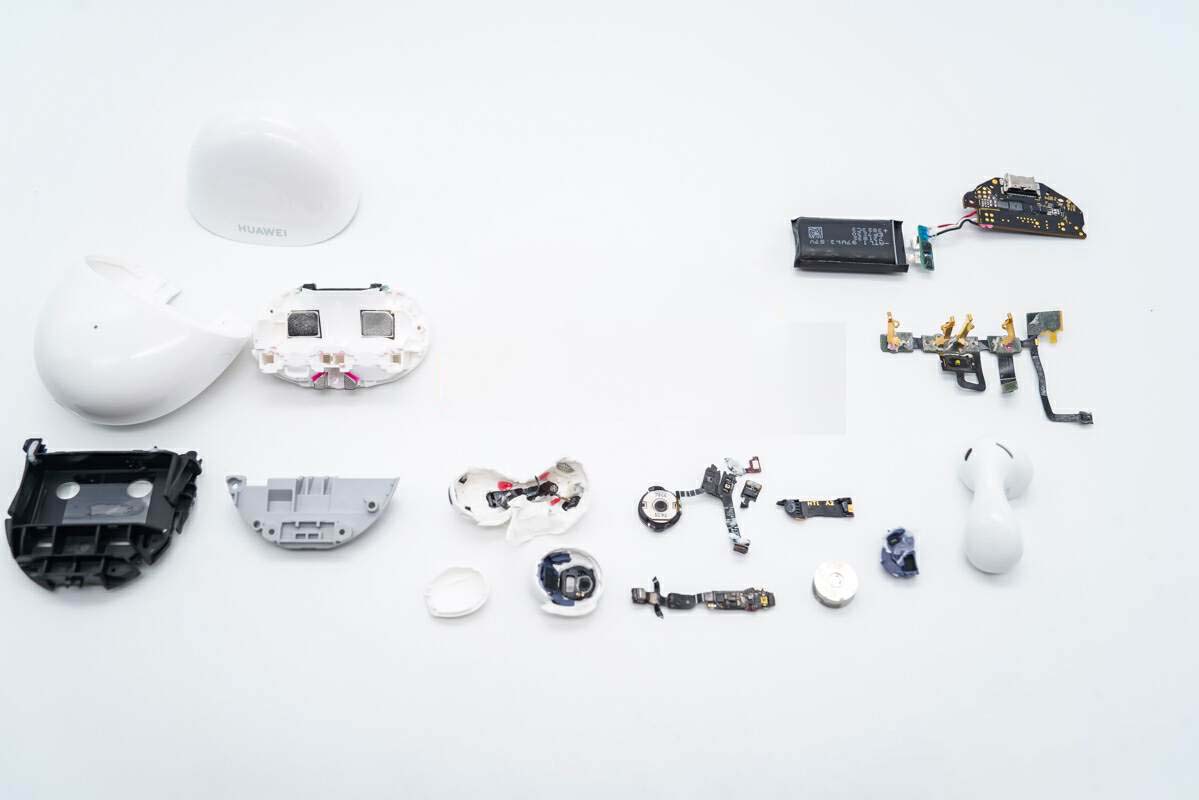
3, Vopmart.com summary
Huawei FreeBuds 5 true wireless noise cancellation headphones in the appearance of a change in the classic design of the first two generations, the charging box using a vertical "pebble" shape, lightweight volume, ceramic white color texture warm, open cockpit structure, more convenient to take and put. The headset adopts a very avant-garde and unique design, with a fully curved streamlined body and teardrop-shaped eartips, which are highly recognizable and have passed tens of thousands of ergonomic simulation tests to ensure wearing comfort; earcups are also provided to enhance wearing confinement and bring a better noise-canceling experience.
The main internal configuration, the charging case includes the motherboard, battery and a row of wires connecting the headset charging terminals, Hall components, indicators, and function buttons. Built-in 3.87V high-voltage lithium battery with 505mAh capacity, the battery cell comes from ATL Dongguan New Energy. On the main board, the Nations National Technology N32G4FR MCU MCU, Renesas Renesas DA9168 battery charge management chip for the built-in battery charging, and two Southchip Southchip Semiconductor SC8753 buck-boost converter, respectively, for the two headphones through charging to improve charging efficiency.
The internal structure of the headset is more unique, the headset head is equipped with a super magnetic surging unit, back-feed noise canceling microphone and optical in-ear detection sensor, the end of the headset stem is set up with a steel-cased snap-on battery and talk microphone, and the mid-range curved arm is fixed with the motherboard unit and forward-feed noise canceling microphone. The main control chip is BES Hengxuan BES2700YP Bluetooth audio SoC, supporting dual-mode Bluetooth 5.3, with ultra-low power consumption, high integration; charging IC usin
g Southchip Southchip Semiconductor SC7289 chip, with the SC8753 boost chip in the charging box, to achieve through the large multiplier ultra-high efficiency charging, to bring a revolutionary charging experience for TWS headphones The charging IC adopts Southchip SC7289 chip to achieve a large through-rate and ultra-high efficiency charging, bringing a revolutionary charging experience to TWS headphones.

